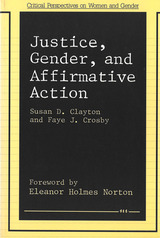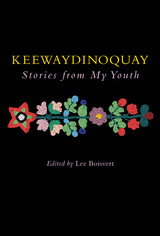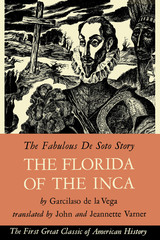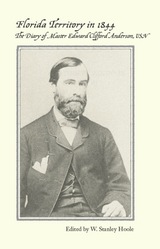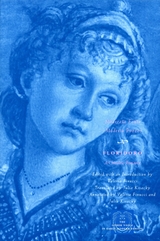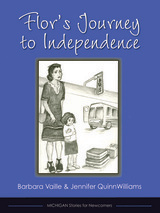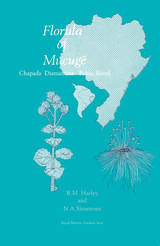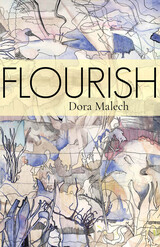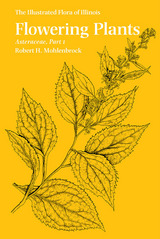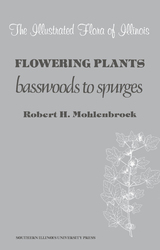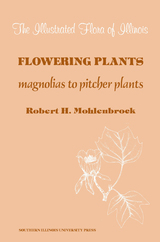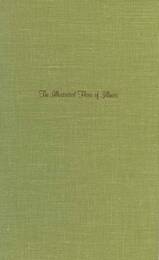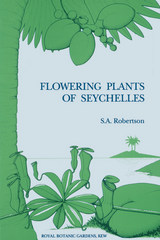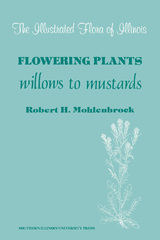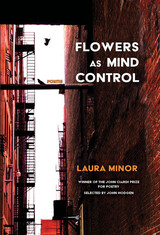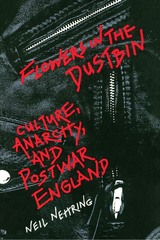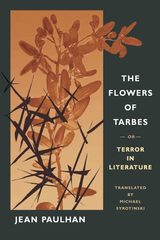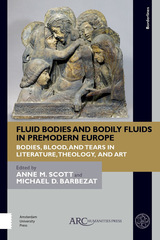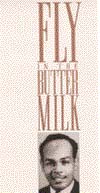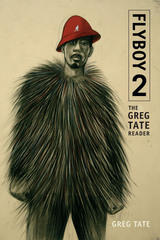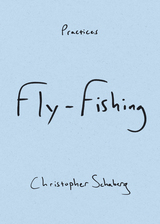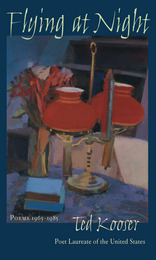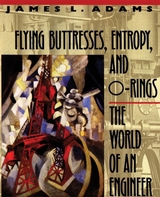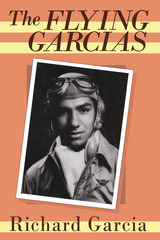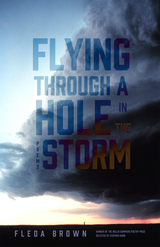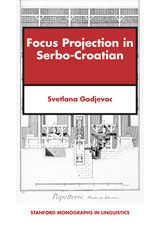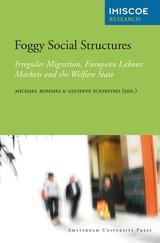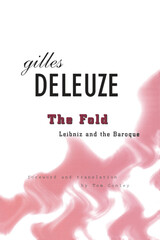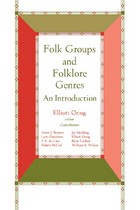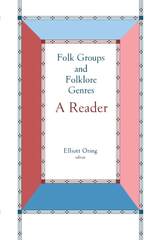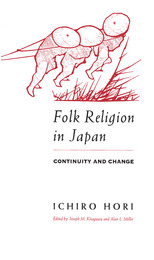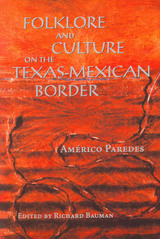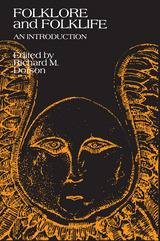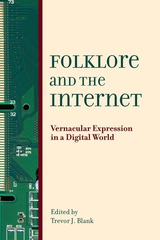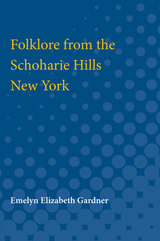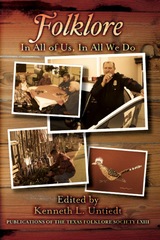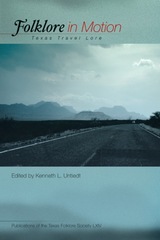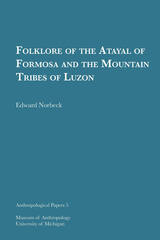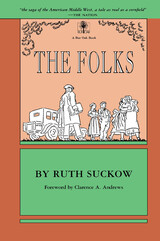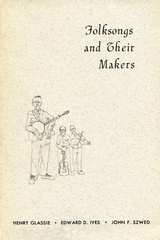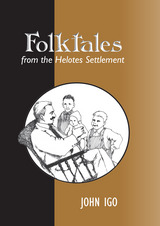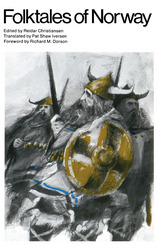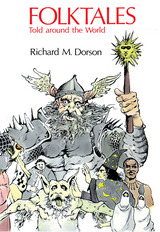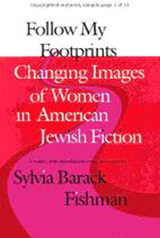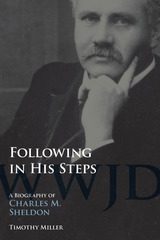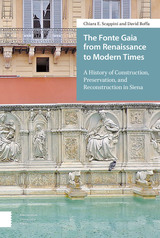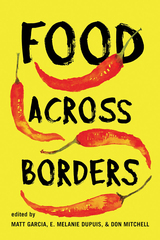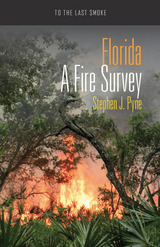 Florida: A Fire Survey
Stephen J. Pyne
University of Arizona Press, 2016 In Florida, fire season is plural, and it is most often a verb. Something can always burn. Fires burn longleaf, slash, and sand pine. They burn wiregrass, sawgrass, and palmetto. The lush growth, the dry winters, the widely cast sparks—Florida is built to burn.
In this important new collection of essays on the region, Stephen J. Pyne colorfully explores the ways the region has approached fire management. Florida has long resisted national models of fire suppression in favor of prescribed burning, for which it has ideal environmental conditions and a robust culture. Out of this heritage the fire community has created institutions to match. The Tallahassee region became the ignition point for the national fire revolution of the 1960s. Today, it remains the Silicon Valley of prescription burning. How and why this happened is the topic of a fire reconnaissance that begins in the panhandle and follows Floridian fire south to the Everglades.
Florida is the first book in a multivolume series describing the nation’s fire scene region by region. The volumes in To the Last Smoke will also cover California, the Northern Rockies, the Great Plains, the Southwest, and several other critical fire regions. The series serves as an important punctuation point to Pyne’s fifty-year career with wildland fire—both as a firefighter and a fire scholar. These unique surveys of regional pyrogeography are Pyne’s way of “keeping with it to the end,” encompassing the directive from his rookie season to stay with every fire “to the last smoke.”
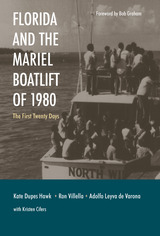 Florida and the Mariel Boatlift of 1980: The First Twenty Days
Kate Dupes Hawk, Ron Villella, and Adolfo Leyva de Varona, with Kristen Cifers
University of Alabama Press, 2014 Winner of the Florida Historical Society's 2015 Stetson Kennedy Award
The 1980 Mariel Boatlift was a profound episode in twentieth-century American history, impacting not just Florida, but the entire country. During the first twenty days of the boatlift, with little support from the federal government, the state of Florida coordinated and responded to the sudden arrival in Key West of more than thirty thousand Cuban refugees, the first wave of immigrants who became known as “Marielitos.”
Kathleen Dupes Hawk, Ron Villella, Adolfo Leyva de Varona, and Kristen Cifers combine the insights of expert observers with the experiences of actual participants. The authors organize and present a wealth of primary sources, first-hand accounts, archival research, government records, and interviews with policy-makers, volunteers, and refugees that bring into focus the many far-reaching human, political, and cultural outcomes of the Mariel Boatlift that continue to influence Florida, the United States, and Cuba today.
Emerging from these key records and accounts is a grand narrative of high human drama. Castro’s haphazard and temporary opening of Cuba spurred many thousands of Cubans to depart in calamitously rushed, unprepared, and dangerous conditions. The book tells the stories of these Cuban citizens, most legitimately seeking political asylum but also including subversive agents, convicted criminals, and the mentally ill, who began arriving in the US beginning in April 1980. It also recounts how local and state agencies and private volunteers with few directives or resources were left to improvise ways to provide the Marielitos food, shelter, and security as well as transportation away from Key West.
The book provides a definitive account of the political, legal, and administrative twists on the local, state, and federal levels in response to the crisis as well as of the often-dysfunctional attempts at collaboration between governmental and private institutions. Vivid and readable, Florida and the Mariel Boatlift of 1980 presents the significant details that illuminate and humanize this complex humanitarian, political, and logistical crisis.
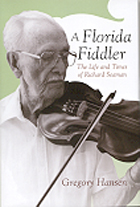 A Florida Fiddler: The Life and Times of Richard Seaman
Gregory Hansen
University of Alabama Press, 2007 A musical life as glorious metaphor for Florida's cultural landscape
This biography of 97-year-old Richard Seaman, who grew up in Kissimmee Park, Florida, relies on oral history and folklore research to define the place of musicianship and storytelling in the state's history from one artist's perspective. Gregory Hansen presents Seaman’s assessment of Florida’s changing cultural landscape through his tall tales, personal experience narratives, legends, fiddle tune repertory, and descriptions of daily life.
Seaman’s childhood memories of fiddling performances and rural dances explain the role such gatherings played in building and maintaining social order within the community. As an adult, Seaman moved to Jacksonville, Florida, where he worked as a machinist and performed with his family band. The evolution of his musical repertory from the early 1920s through the 1950s provides a resource for reconstructing social life in the rural south and for understanding how changes in musical style reflect the state's increasingly urban social structure. Hansen includes a set of Seaman's fiddle tunes, transcribed for the benefit of performer and researcher alike. The thirty tall tales included in the volume constitute a representative sample of Florida’s oral tradition in the early years of the 20th century.
The Florida of the Inca
By Garcilaso de la Vega
University of Texas Press, 1951 Perhaps the most amazing thing of all about Garcilaso de la Vega's epic account of the De Soto expedition is the fact that, although it is easily the first great classic of American history, it had never before received a complete or otherwise adequate English translation in the 346 years which have elapsed since its publication in Spanish. Now the Inca's thrilling narrative comes into its own in the English speaking world. Hernando de Soto's expedition for the conquest of North America was the most ambitious ever to brave the perils of the New World. Garcilaso tells in remarkably rich detail of the conquistadors' wanderings over half a continent, of the unbelievable vicissitudes which beset them, of the Indians whom they sought to win for King and Church and by whose hands most of them died, of De Soto's death, and of the final pitiful failure of the expedition.
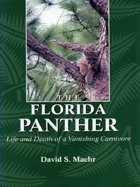 The Florida Panther: Life And Death Of A Vanishing Carnivore
David S. Maehr
Island Press, 1997 When the first field study of the Florida panther took place in 1973, so little was known about the animal that many scientists believed it was already extinct. During more extensive research conducted from 1981 to 1986, panthers were proven to exist, but the handful of senile, anemic, and parasite-infested specimens that were captured indicated a grim future. During those early years a remarkably enduring image of the panther was born, and despite voluminous data gathered over the next decade that showed the panther to be healthy, long-lived, and reproducing, that earlier image has yet to be dispelled. For nine years, biologist David S. Maehr served as project leader of the Florida Panther Study Project, helping to gather much of the later, surprisingly positive data. In The Florida Panther, he presents the first detailed portrait of the animal -- its biology, natural history, and current status -- and a realistic assessment of its prospects for survival. Maehr also provides an intriguing look at the life and work of a field biologist: how captures are made, the intricacies of radio-telemetry tracking, the roles of various team members. He describes the devastating intrusion of politics into scientific work, as he discusses the widespread problems caused by the failure of remote and ill-informed managers to provide needed support and to communicate effectively to the public the goals and accomplishments of the scientists. He examines controversial efforts to establish a captive breeding program and to manipulate the Florida panther's genetic stock with the introduction of relatives from west Texas. Protection of high-quality habitat, much of it in the hands of private landowners, is the key to the long-term survival of the Florida panther. Unless agency decisionmakers and the public are aware of the panther's true situation, little can be done to save it. This book will play a vital role in correcting widespread misconceptions about the panther's current condition and threats to its survival.
 The Florida Phosphate Industry: A History of the Development and Use of a Vital Mineral
Fred Blakey
Harvard University Press, 1973 “For every problem there is a solution—simple, neat, and wrong.” H. L. Mencken made this observation years ago, and it is quoted at the beginning of Fred Blakey’s study of Florida’s phosphate industry. Few people would disagree that there is a real environmental crisis facing the world today. The cause is unrestrained growth of the population, of economies, and of the exploitation of natural resources. The author points out that this viewpoint is foreign to a people who have equated growth with progress, and bigness with goodness. Only recently have Americans conceded that their resources are not inexhaustible.
Blakey tells us that we have been bombarded with solutions to a problem that professionals view as not yet fully understood nor adequately defined. Americans face the problem not only of pollution, but of management, of values, of their very way of life. If the earth is to provide the materials for the survival of man’s society, then a prudent society must provide for an intimate understanding of the earth. Phosphorus, the topic of this study, is an element necessary for all forms of life. Long before carbon, nitrogen, or oxygen supplies become critically short, the supply of phosphorus will be exhausted. When this happens, Blakey assures us, life will end, and he demonstrates that we are losing ever-increasing amounts of this vital element every year.
This work presents a microscopic view of the ecological problems and prospects in the conservation and use of the mineral. Specifically, it is a history of the Florida phosphate industry. If the record of the Florida phosphate industry is any guide, then ecological disaster need not occur, but enlightened use of phosphorus and all other natural resources would seem to be imperative. The author tells us it is necessary to redefine some of our traditional priorities, beliefs, and values. Failure to do this indicates a willingness to continue to accept solutions that are “simple, neat—and wrong.”
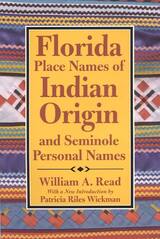 Florida Place-Names of Indian Origin and Seminole Personal Names
William A. Read
University of Alabama Press, 2003 A compendium of Indian-derived names from the three languages of the Muskhogean family—Seminole, Hitchiti, and Choctaw. The first Native peoples of what is now the United States who met and interacted with Europeans were the people of the lower Southeast. They were individuals of the larger Maskókî linguistic family who inhabited much of present-day Florida, Georgia, Alabama, Mississippi, South Carolina, and eastern portions of Tennessee, Kentucky, and Louisiana. Today, sixteen federally recognized tribes trace their heritage from these early Maskókî peoples, and many of them in both Florida and Oklahoma still speak and understand this root language. The continuing vitality of this core language, and of Seminole culture and influence, makes this linguistic examination by William Read ever more valuable. A companion to his study of Indian Place Names in Alabama, this long out-of-print guide offers a new introduction from Patricia Wickman in which she provides current understandings of Seminole language and derivations and a brief analysis of Read's contribution to the preservation of the Native linguistic record.
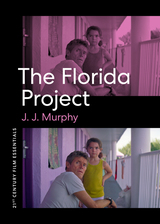 The Florida Project
J. J. Murphy
University of Texas Press, 2021 In Sean Baker’s award-winning 2017 film The Florida Project, a young girl, her single mother, and her friends live in rundown motels near Disney World, the children’s summer fun contrasting with the grim conditions around them. In this book, J. J. Murphy delves deep into the movie’s development and filming while also examining it within the wider context of Baker’s career. Using production documents, different versions of the screenplay, and interviews with principal members of the production team, Murphy traces the evolution of The Florida Project from initial idea through its various stages of production. He highlights Baker’s unconventional strategies in making a film about a marginalized subculture, including alternative scripting, guerrilla-like filmmaking, improvisation, and the unorthodox casting of local and first-time actors. Murphy also explores how Baker’s impromptu style sometimes rankled crew members and caused a major crisis on set, revealing the difficulties indie filmmakers can face when working with professional crews on larger films. A lively analysis of this critically acclaimed movie, its director, and its production, The Florida Project also betters our understanding of contemporary independent cinema as a whole.
 The Florida Room
Alexandra T. Vazquez
Duke University Press, 2022 In The Florida Room Alexandra T. Vazquez listens to the music and history of Miami to offer a lush story of place and people, movement and memory, dispossession and survival. She transforms the “Florida room”—an actual architectural phenomenon—into a vibrant spatial imaginary for Miami’s musical cultures and everyday life. Drawing on songs, ephemera, and oral histories from artists, families, and inheritors of their traditions, Vazquez hears Miami as a city that has long been shaped by Indigenous Florida, the Bahamas, the Caribbean, and southern Georgia. She draws connections between seemingly disparate artists, sounds, and stories, from singer Gwen McCrae to pirate radio innovator DJ Uncle Al, from the Miccosukee rock band Tiger Tiger to the Cuban-American songwriter Desmond Child, among the percussionists Dafnis Prieto, Obed Calvaire, and Yosvany Terry, and through the notes of Eloise Lewis, Betty Wright, and the Miami Bass group Anquette. By listening to musical collaborations and ancestral ties across place and time, Vazquez brings together formal musical details, the histories of people and locations they hold, and the aesthetic traditions transformed inside them.
Floridoro: A Chivalric Romance
Moderata Fonte
University of Chicago Press, 2006 The first original chivalric poem written by an Italian woman, Floridoro imbues a strong feminist ethos into a hypermasculine genre. Dotted with the usual characteristics—dark forests, illusory palaces, enchanted islands, seductive sorceresses—Floridoro is the story of the two greatest knights of a bygone age: the handsome Floridoro, who risks everything for love, and the beautiful Risamante, who helps women in distress while on a quest for her inheritance. Throughout, Moderata Fonte (1555–92) vehemently defends women’s capacity to rival male prowess in traditionally male-dominated spheres. And her open criticism of women’s lack of education is echoed in the plights of various female characters who must depend on unreliable men.
First published in 1581, Floridoro remains a vivacious and inventive narrative by a singular poet.
Flor's Journey to Independence
Barbara Vaille and Jennifer QuinnWilliams
University of Michigan Press, 2005 Flor's Journey to Independence begins as Flor and her four-year-old daughter, Betina, are unexpectedly abandoned by Flor's husband, Ricardo. Flor is suddenly faced with paying the bills and caring for Betina on her own, as she also struggles with limited English skills. Still, Flor's determination gets her through the hard times, and once she enrolls in an English class for adults and begins working, she finds that her new life brings her new friends and opportunities.
A modified version of this story is also available on our website, www.press.umich.edu/esl/stories.
The MICHIGAN Stories for Newcomers are original fiction written for adult English learners who wish to improve their reading and English skills
Florula of Mucuge
R. M. Harley and N. A. Simmons
Royal Botanic Gardens, Kew, 1986 A descriptive checklist of the plants of Chapada Diamantina region in the Brazilian state of Bahia, based on collections made by Kew expeditions 1974-80.
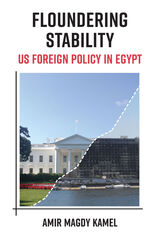 Floundering Stability: US Foreign Policy in Egypt
Amir Magdy Kamel
University of Michigan Press, 2023 The US commitment to stability—both domestically and abroad—has been a consistent feature in the way Washington, DC carries out international relations. This commitment is complimented by the increased overlap between the economic and political spheres in international affairs. Consequently, this US approach to foreign interaction is informed by an assumption that foreign policy tools can influence global stability for the better. In order to investigate this assumption, this book details the foundations of what Amir Magdy Kamel refers to as the US Stability Policy—how it evolved over time and how it was implemented in Egypt. He finds that domestic and global forces were left unaccounted for by the Stability Policy, ultimately leading to a failure to achieve the self-stated stability goals.
Kamel’s analysis is informed through a unique mixed-method approach that sheds light on how and why this policy fared so poorly under Mubarak’s Egypt. He develops and tests a unique and particular way of examining the Stability Policy and presents a framework for future work to replicate and build on in the quest to understand other state-on-state relationships and the effectiveness of other foreign economic policies in achieving stability goals. Floundering Stability reflects on what Kamel’s findings mean for the relationship between the US and Egypt, as well as specific US foreign policy suggestions on how the same mistakes can be avoided in the future.
 Flour for Man’s Bread: A History of Milling
Walter Dorwin TeagueJohn Storck, EditorIllustrations by Harold Rydell
University of Minnesota Press, 1952 Flour for Man's Bread was first published in 1952. Minnesota Archive Editions uses digital technology to make long-unavailable books once again accessible, and are published unaltered from the original University of Minnesota Press editions. From prehistoric times to the present, the ways in which man has made flour for his bread have forged the patterns of technological progress and have greatly influenced his social development. This book describes in detail how people of the western world have ground their grain - by hand, by animal-driven wheels, by crude water-powered mills, and, finally, by complex engineering methods. The story of milling provides a graphic history of man's ingenuity in the mechanical arts, his harnessing of power sources, and his development of agricultural skill. While the central theme is the improvement of technical processes, this development is presented, not in a vacuum, but in the context of economic geography and social history. Thus the volume offers much of importance to students of social economic history, archaeology, anthropology, sociology, agriculture, and general technology, as well as those with a specific interest in milling methods. The book brings to readers some of the advantages of what was originally projected as a museum of flour milling several years ago by General Mills. Walter Dorwin Teague, the noted industrial designer, drew plans for the museum and arranged for the fundamental research, which was carried out by Dr. John Storck, anthropologist and former professor at Columbia University and Sarah Lawrence College. Hundreds of detailed drawings illustrating the processes and devices described were prepared under their direction. Although plans for the museum had to be abandoned, the extensive research and excellent illustrative material are now made available in this comprehensive, single volume history of milling and its social and economic implications.
Flourish
Dora Malech
Carnegie Mellon University Press, 2020 In Flourish, multiple meanings catch light—as the leaves of growing things might, or the facets of cut gemstones, or a signal mirror flashing in distress. These poems explore themes of thriving, growth, innovation, and survival, while immersing the reader in the pleasures of language itself—the “flourish” of linguistic gesture, play, form, turn, and adornment.
Here, the lens zooms in and out to micro and macro levels, asking us to see the familiar with new eyes. The collection engages with the materials of the worlds we inhabit—natural worlds and those of our own making—and a full spectrum of poetry’s own materials, building worlds of words and illuminating the shadowed terrain of our interior landscapes as well.
 Flourishing Fasts: Vegetarian Sects in Late Imperial and Modern Chinese Societies
Nikolas Broy
Harvard University Press, 2025 Flourishing Fasts is the first book in any language to explore the history of the Zhaijiao, commonly translated as “vegetarian sects,” that originated in southeastern China during the Ming and Qing dynasties and are still active in contemporary Taiwan. Combining historical analysis and ethnographic fieldwork, Nikolas Broy reveals the entangled nature of the Zhaijiao—and other Chinese sectarian groups—within their socioreligious environment. Conventionally considered nonconformist dissenters or lay Buddhists, the Zhaijiao in fact embody one intersection of the “Three Teachings” of Buddhism, Daoism, and Confucianism and manifest aspects of local religious life and universal salvationist teachings. Not limited to everyday religious rites such as worshiping local gods, conducting initiation festivals, and performing ritual services for nonmembers, the Zhaijiao also serve as institutions around which social and political life are centered—for example through mobilizing local resources for public enterprises or articulating property rights vis-à-vis the state.
In this wide-ranging discussion that covers practices, religious symbols and teachings, mythological narratives, moral values, architecture, and material culture over more than four hundred years, Broy situates the Zhaijiao at the very core of local societies and shows how they actively engage in political, economic, legal, and cultural affairs.
 Flourishing Thought: Democracy in an Age of Data Hoards
Ruth A. Miller
University of Michigan Press, 2016 Challenging the posthumanist canon that celebrates the preeminence of matter, Ruth Miller, in Flourishing Thought contends that what nonhuman systems contribute to democracy is thought. Drawing on recent feminist theories of nonhuman life and politics, Miller shows that reproduction and flourishing are not antithetical to contemplation and sensitivity. After demonstrating that processes of life and processes of thought are indistinguishable, Miller finds that four menacing accumulations of matter and information—global surveillance, stored embryos, human clones, and reproductive trash—are politically productive rather than threats to democratic politics. As a consequence, she questions the usefulness of individual rights such as privacy and dignity, contests the value of the rational metaphysics underlying human-centered political participation, and reevaluates the gender relations that derive from this type of participation. Ultimately, in place of these human-centered structures, Miller posits a more meditative mode of democratic engagement.
Miller’s argument has shattering implications for the debates over the proper use and disposal of embryonic tissue, alarms about data gathering by the state and corporations, and other major ethical, social, and security issues.
 The Flow of Illicit Funds: A Case Study Approach to Anti–Money Laundering Compliance
Ola M. Tucker
Georgetown University Press, 2022 High-profile case studies provide compliance professionals with a deep, holistic understanding of modern-day money laundering to better detect and deter it Money laundering is a serious crime that presents a heightened, yet underrated, global threat. Although often thought of as a victimless crime, money laundering significantly impacts the global financial system, which leads to further crime, corruption, human exploitation, and environmental degradation and causes tremendous human suffering, especially in the most impoverished populations. Recent advances in technology, communications, and globalization mean there are more illicit funds in circulation today than ever before. In order to catch these criminals and expose their underground networks, compliance professionals must learn to navigate an increasingly complex web of criminal activity. In The Flow of Illicit Funds, Ola M. Tucker goes beyond the implementation of anti–money laundering compliance programs offered by most guides and provides professionals with a holistic understanding of the modern money laundering system. Using recent case studies, Tucker explains some of the most common money laundering techniques used by criminals today, describes the key role of the financial system in the disguise and transfer of illicit funds, and offers valuable insight into how financial institutions can protect themselves from being used as conduits for the movement of dirty money. The book concludes by offering suggestions to help compliance professionals better detect and deter money laundering. Through this unique perspective, compliance professionals and students will gain a broader overall understanding of the process of money laundering and the techniques criminals commonly use, including valuable insight into how criminals find legal loopholes and manipulate the financial system.
 The Flow of Life: Essays on Eastern Indonesia
James J. Fox
Harvard University Press, 1980 Indonesia east of Bali is perhaps the least known of all major cultural areas of Southeast Asia. Yet the anthropology of the region has long held a prominent place in the development of structuralist theories of marital exchange and symbolic classification. Falling in a distinguished lineage running from van Wouden to Lévi-Strauss to Rodney Needham, The Flow of Life presents a comprehensive set of essays by a distinguished group of international scholars, which provides both a full picture of this culturally rich area and an important extension of earlier structuralist theory.This volume is bound to become the standard source on the social anthropology of eastern Indonesia. But it is a work of more than regional significance, providing a variety of empirical resources to address the questions which lie at the bottom of much structuralist thought about mind and society: what is the nature of symbolic thought? how does consciousness intertwine with society and ecology? what is the difference between “primitive” and “modern” society?
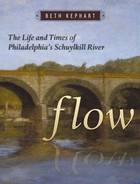 Flow: The Life and Times of Philadelphia's Schuylkill River
Beth Kephart
Temple University Press, 2014 The Schuylkill River-the name in Dutch means "hidden creek"-courses many miles, turning through Philadelphia before it yields to the Delaware. "I am this wide. I am this deep. A tad voluptuous, but only in places," writes Beth Kephart, capturing the voice of this natural resource in Flow. An award-winning author, Kephart's elegant, impressionistic story of the Schuylkill navigates the beating heart of this magnificent water source. Readers are invited to flow through time-from the colonial era and Ben Franklin's death through episodes of Yellow Fever and the Winter of 1872, when the river froze over-to the present day. Readers will feel the silt of the Schuylkill's banks, swim with its perch and catfish, and cruise-or scull-downstream, from Reading to Valley Forge to the Water Works outside center city. Flow's lush narrative is peppered with lovely, black and white photographs and illustrations depicting the river's history, its people, and its gorgeous vistas. Written with wisdom and with awe for one of the oldest friends of all Philadelphians, Flow is a perfect book for reading while the ice melts, and for slipping in your bag for your own visit to the Schuylkill.
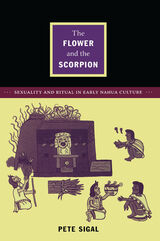 The Flower and the Scorpion: Sexuality and Ritual in Early Nahua Culture
Pete Sigal
Duke University Press, 2011 Prior to the Spanish conquest, the Nahua indigenous peoples of central Mexico did not have a notion of “sex” or “sexuality” equivalent to the sexual categories developed by colonial society or those promoted by modern Western peoples. In this innovative ethnohistory, Pete Sigal seeks to shed new light on Nahua concepts of the sexual without relying on the modern Western concept of sexuality. Along with clerical documents and other Spanish sources, he interprets the many texts produced by the Nahua. While colonial clerics worked to impose Catholic beliefs—particularly those equating sexuality and sin—on the indigenous people they encountered, the process of cultural assimilation was slower and less consistent than scholars have assumed. Sigal argues that modern researchers of sexuality have exaggerated the power of the Catholic sacrament of confession to change the ways that individuals understood themselves and their behaviors. At least until the mid-seventeenth century, when increased contact with the Spanish began to significantly change Nahua culture and society, indigenous peoples, particularly commoners, related their sexual lives and imaginations not just to concepts of sin and redemption but also to pleasure, seduction, and rituals of fertility and warfare.
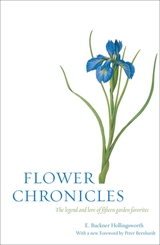 Flower Chronicles
E. Buckner Hollingsworth
University of Chicago Press, 2004 First published in 1958, this compendium on the history of flowers has lost almost none of its bloom. With a flair for research and citation, E. Buckner Hollingsworth draws on folklore, poetry, annals of medicine, and gardening manuals to report essential historical information on the domestication of garden favorites before they were grown as ornamental plants. Organized by species, Flower Chronicles brims with literary and historical references, anecdotes, and digressions on the lives of merchants, housewives, perfumers, and surgeons. Though she writes with a light touch, Hollingsworth tackles Greek literature, Shakespeare, De Quincey, and Herrick.
A tremendously entertaining and charming book, not only for its richness of information but because Hollingsworth clearly enjoys her material, Flower Chronicles has an antiquarian feel about it-with line drawings, woodcuts, and translations from the Greek—but the text never feels dated. Out of print for nearly thirty years, Flower Chronicles reemerges as a garden literature classic.
"With humor and literary taste, Mrs. Hollingworth has compiled an astonishing amount of scholarly yet entertaining material from her studies in archaeology and mythology and her researches in ancient pharmacopeias, botanies, cookbooks, herbals, and stillroom books."-New Yorker
"Mrs. Hollingsworth writes gaily and quotes from old books, with a wonderful taste for the curious English of Elizabethan gardeners, and sharp notice of what poets and translators of talent have set down. To this she has added the excitement of discovery of forms not noticed by her predecessors."-New York Herald Tribune Book Review
 Flower Day: A Story of 24 Hours and 24 Floral Lives
Sandra Knapp
University of Chicago Press, 2025 An illustrated hourly guide that spotlights twenty-four flowers as they attract pollinators, resist predators, and survive on our changing planet.
Is it 4 AM or chicory o’clock? In this short book, botanist and award-winning author Sandra Knapp walks us through a day in a global garden. Each chapter of Flower Day introduces a single flower during a single hour, highlighting twenty-four different species from around the world.
Beginning at midnight in the Americas, we spot the long tubular flowers of the moonflower, Ipomoea alba; they attract a frenzy of hawk moths before the dawn arrives and the flowers wither and collapse. As day breaks, dandelions and chicory open their heads—actually made up of many individual flowers tightly packed together—and flies and bees visit to get the energy they need to lay eggs and raise their young. Later, at eight o’clock in the morning, the sun rises over the watery Amazon basin, and we meet the giant waterlily, slowly turning from white to pink and purple. Trapped inside are the beetles who feasted on the flowers during the night. That evening, at seven o’clock, we travel to the Caribbean to smell night-blooming jessamine’s powerful—some may say nauseating—sweet scent. But this member of the nightshade family isn’t just a thing of beauty—it has a reputation as both a poison and invasive species, crowding out endangered native trees.
For each hour in our flower day, celebrated artist Katie Scott has depicted these scenes with gorgeous pen-and-ink illustrations. Working closely together to narrate and illustrate these unique moments in time, Knapp and Scott have created an engaging read that is a perfect way to spend an hour or two—and a true gift for amateur botanists, gardeners, and anyone who wants to stop and appreciate the flowers.
 Flower Growing in the North: A Month-by-Month Guide
George E. Luxton
University of Minnesota Press, 1956
Flower Growing in the North was first published in 1956. Minnesota Archive Editions uses digital technology to make long-unavailable books once again accessible, and are published unaltered from the original University of Minnesota Press editions.
Since home gardeners living in regions of very cold winters and short growing seasons find little attention paid to their special problems in most gardening books, they will welcome this month-by-month guide. It relates times of planting, needs for winter protection, and selection of plant varieties to the limitations of the northern climate. The best of George Luxton's popular gardening columns in the Minneapolis Sunday Tribune form the basis of the book. For the winter season there is advice on the care of house plants and how to grow seedlings for transplanting outdoors. For the summer gardener there is information about annuals and perennials, fertilizers and insecticides, and garden equipment. Instructions on tree, shrub, and lawn care are given, too. Also included are many of the "Grandma sayings" from Mr. Luxton's newspaper columns. These homely bits of garden lore, which stem from his recollections of his own grandmother, are as intriguing and useful today as they were a generation of two ago.
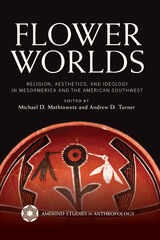 Flower Worlds: Religion, Aesthetics, and Ideology in Mesoamerica and the American Southwest
Edited by Michael D. Mathiowetz and Andrew D. Turner
University of Arizona Press, 2021 The recognition of Flower Worlds is one of the most significant breakthroughs in the study of Indigenous spirituality in the Americas. These worlds are solar and floral spiritual domains that are widely shared among both pre-Hispanic and contemporary Native cultures in Mesoamerica and the American Southwest. Flower Worldsis the first volume to bring together a diverse range of scholars to create a truly multidisciplinary understanding of Flower Worlds. During the last thirty years, archaeologists, art historians, ethnologists, Indigenous scholars, and linguists have emphasized the antiquity and geographical extent of similar Flower World beliefs among ethnic and linguistic groups in the New World.
Flower Worlds are not simply ethereal, otherworldly domains, but rather they are embodied in lived experience, activated, invoked, and materialized through ritual practices, expressed in verbal and visual metaphors, and embedded in the use of material objects and ritual spaces. This comprehensive book illuminates the origins of Flower Worlds as a key aspect of religions and histories among societies in Mesoamerica and the American Southwest. It also explores the role of Flower Worlds in shaping ritual economies, politics, and cross-cultural interaction among Indigenous peoples.
Flower Worlds reaches into multisensory realms that extend back at least 2,500 years, offering many different disciplines, perspectives, and collaborations to understand these domains. Today, Flower Worlds are expressed in everyday work and lived experiences, embedded in sacred geographies, and ritually practiced both individually and in communities. This volume stresses the importance of contemporary perspectives and experiences by opening with living traditions before delving into the historical trajectories of Flower Worlds, creating a book that melds scientific and humanistic research and emphasizes Indigenous voices.
Contributors: Oswaldo Chinchilla Mazariegos, James M. Córdova, Davide Domenici, Ángel González López, Kelley Hays-Gilpin, Michael D. Mathiowetz, Cameron L. McNeil, Felipe S. Molina, Johannes Neurath, John M. D. Pohl, Alan R. Sandstrom, David Delgado Shorter, Karl A. Taube, Andrew D. Turner, Lorena Vázquez Vallín, Dorothy Washburn
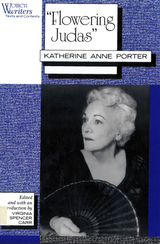 "Flowering Judas": Katherine Anne Porter
Carr, Virginia S
Rutgers University Press, 1993 Katherine Anne Porter often spoke of her story "Flowering Judas" as the tale she liked best of all her stories because it came the nearest to what she meant it to be. It is the story of Laura, an idealistic woman, who travels to Mexico from Arizona at the age of twenty-two to assist the Obreg-n Revolution. This casebook on "Flowering Judas" addresses Porter's ambivalence surrounding her roles as woman and artist and also attests to the profound influence of Mexico upon her work. Readers of this early tale will not be surprised to learn that although Porter was a practicing feminist in her life and her work, she actually eschewed the feminist label. Virginia Spencer Carr brings her own sharply focused biographer's eye to the introduction, further illuminating the story and the superb critical essays that it provokes. The casebook includes the authoritative text of the story itself, Porter's own statement regarding the genesis of this highly acclaimed work, an important interview, a collection of significant essays on "Flowering Judas" and the historical, cultural, and personal milieu from which the tale evolved, a bibliography, and a chronology of Porter's life and work.
 The Flowering of Muslim Theology
Josef van Ess
Harvard University Press, 2006 Josef van Ess is the world's most distinguished scholar of classical kalam, the Muslim theology that was the precursor to, and foundation for, modern Islam. This book makes available, for the first time in English, the fruit of van Ess's thirty-five years of work in the field. A lucid and authoritative introduction to classical Islam, it opens a window on the intellectual world that gave rise to Muslim theology.
A sustained look at important issues in early kalam, The Flowering of Muslim Theology discusses the emergence of theology in the classical period and offers acute and illuminating comparisons with the Christian (and Jewish) traditions. Van Ess looks at the issue of heresy, at early ideas about straying from true belief. In a substantial and original instance of Koranic exegesis, he considers a problem much debated among classical theologians: whether it is possible to see God. He examines the different ways in which early Muslim thinkers appropriated atomism, a natural philosophy that was originally materialistic and atheistic, for their own theological purposes. He explores the explosive mix of theology and political thought, in an analysis of the development of ideas about the role and authority of a ruler. And he considers the relationship, or contradiction, between faith and knowledge: the enduring question of how one can know whether something is right or true.
A work of intellectual history enlivened by vivid examples, The Flowering of Muslim Theology gives a wider audience rare insight into Islam's rich classical past.
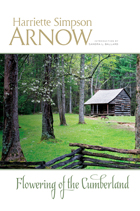 Flowering of the Cumberland
Harriette Simpson Arnow
Michigan State University Press, 2013 Harriette Arnow’s search for truth as early American settlers knew it began as a child—the old songs, handed-down stories, and proverbs that colored her world compelled her on a journey that informs her depiction of the Cumberland River Valley in Kentucky and Tennessee. Arnow drew from court records, wills, inventories, early newspapers, and unpublished manuscripts to write Seedtime on the Cumberland, which chronicles the movement of settlers away from the coast, as well as their continual refinement of the “art of pioneering.” A companion piece, this evocative history covers the same era, 1780–1803, from the first settlement in what was known as “Middle Tennessee” to the Louisiana Purchase. When Middle Tennessee was the American frontier, the men and women who settled there struggled for survival, land, and human dignity. The society they built in their new home reflected these accomplishments, vulnerabilities, and ambitions, at a time when America was experiencing great political, industrial, and social upheaval.
Flowering Plants: Asteraceae, Part 1
Robert H. Mohlenbrock
Southern Illinois University Press, 2015 This, the first of three volumes on the aster family planned for the Illustrated Flora of Illinois series, recognizes 388 species in 119 genera, as well as 20 hybrids and 73 lesser taxa. In Asteraceae, Part 1, author Robert Mohlenbrock presents new and historic information in a clear and easy-to-read style. The volume provides an easy-to-use key to the genera and species and a complete description and nomenclatural and habitat notes for each plant, including its usefulness, if applicable. New nomenclatural combinations are shown for several species. The precise illustrations and detailed information allow for the identification of some of the most difficult to identify plants in the state—goldenrods, asters, artemisias, and fleabanes, among others. Includes 128 original illustrations by Paul Nelson.
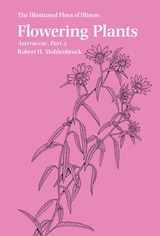 Flowering Plants: Asteraceae, Part 2
Robert H. Mohlenbrock
Southern Illinois University Press, 2019 In this second volume on the aster family, botanist Robert H. Mohlenbrock recognizes 133 species in 42 genera, as well as 7 hybrids and 29 lesser taxa. Flowering Plants: Asteraceae, Part 2 provides an easy-to-use key to the genera and species and a complete description and nomenclatural and habitat notes for each plant, including its usefulness, if applicable. The book details the most important features of the species and includes common, locally used names. Synonyms that have been applied to species and lesser taxa in Illinois are given for each species.
In addition, Mohlenbrock has identified the overall range for each species in Illinois, compiled from various sources, including examinations of herbarium material and Mohlenbrock’s own field studies. The range is given from the northeastern to the northwestern extremities, south to the southwestern limit, and then eastward to the southeastern limit.
As important to amateurs interested in wildflower identification as to botanists and land planners, this second volume of Mohlenbrock’s Asteraceae is an essential addition to the esteemed Illustrated Flora of Illinois series.
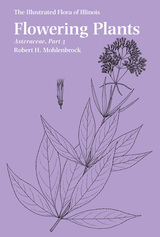 Flowering Plants: Asteraceae, Part 3
Robert H. Mohlenbrock
Southern Illinois University Press, 2017 Flowering Plants: Asteraceae, Part 3 is the third and final volume in botanist Robert H. Mohlenbrock’s comprehensive sequence of books on the aster family in Illinois. In this volume, Mohlenbrock identifies 128 species in 49 genera with 11 hybrids and 57 lesser taxa. He provides an easy-to-use key to the genera and species and a complete description and nomenclatural and habitat notes for each plant, including its uses, if applicable. The book details the most important features of the species and includes common, locally used names. Synonyms that have been applied to species and lesser taxa in Illinois are given under each species.
In addition, Mohlenbrock has identified the overall range for each species in Illinois, compiled from various sources, including examinations of herbarium material and Mohlenbrock’s own field studies. The overall range for each species is given from the northeastern to the northwestern extremities, south to the southwestern limit, then eastward to the southeastern limit.
As important to amateurs interested in wildflower identification as to professional botanists and land planners, this last volume of Mohlenbrock’s Asteraceae is an essential addition to the esteemed Illustrated Flora of Illinois series.
Flowering Plants: Basswoods to Spurges
Robert H. Mohlenbrock
Southern Illinois University Press, 1982 This is the fourth volume in The Illustrated Flora of Illinois devoted to dicotyledons, or dicot plants. Dicots are the greatest group of flowering plants, exceeding the monocotyledons, or monocots. Dicots produce a pair of seed leaves during germination while monocots produce only a single seed leaf. This volume contains four orders and ten families of dicots. The orders included in this volume are Malvales, Urticales, Rhamnales, and Euphorbiales. Within the Malvales are the families Tiliaceae, Sterculiaceae, and Malvaceae. The families Ulmaceae, Moraceae, and Urticaceae comprise the Urticales. Rhamnaceae and Elaeagnaceae make up the Rhamnales. The Euphorbiales include only the Thymelaeceae and the Euphorbiaceae.
 Flowering Plants: Evolution above the Species Level
G. Ledyard Stebbins
Harvard University Press, 1974 One of the world's leading evolutionary biologists here reexamines the evolutionary history of flowering plants. This important book is the first to interpret the phylogeny of flowering plants in the light of modern knowledge about genetics, developmental biology, and ecology.
Mr. Stebbins is concerned with the evolution of genera, families, and other higher taxa; his analysis is based upon a unified theory that identifies the same fundamental processes at work in the origin of both species and the broader taxonomic categories. He shows, however, that subspecific evolution depends primarily on the natural selection of vegetative characters, whereas the emphasis at the transspecific level is on reproductive characters.
Major changes in evolutionary direction are interpreted as resulting from an interaction of environmental change and the inherent capacity of the organism to alter preferentially in some ways and not in others. The author facilitates this discussion by examining reversibility in certain simple evolutionary trends.
After reviewing basic principles and exploring major patterns of evolution in flowering plants, Mr. Stebbins turns to their actual history. On the basis of a detailed analysis he concludes that the most primitive forms are not represented in any extant category and are not found in the fossil record. His work gives definitive weight to the researches of others who have postulated a monophyletic origin of the angiosperms from a single, extinct group.
Although this beautifully illustrated volume will prove indispensable to botanists, it will be of great interest also to any student of evolutionary theory, theoretical biology, and ecology.
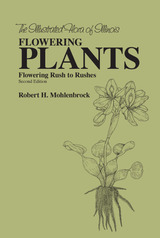 The Flowering Plants: Flowering Rush to Rushes
Robert H. Mohlenbrock
Southern Illinois University Press, 2006 The second edition of Flowering Plants: Flowering Rush to Rushes offers new material, including a preface, seventeen new illustrations of the additional species now known from Illinois, a revised list of illustrations, and an appendix of the additions and changes since 1970 in the identification, classification, and location of the plants included in the first edition. This new edition of the first volume in the multi-volume series of The Illustrated Flora of Illinois—which provides a working reference for the identification and classification of these plant forms in the state—includes flowering rushes, arrowheads, pondweeds, naiads, duckweeds, cattails, bur reeds, spiderworts, and rushes. In his introduction, Robert H. Mohlenbrock defines terms and procedures used in the identification and classification of this group of flowering plants referred to as monocotyledons—plants that produce upon germination a single cotyledon or seed-leaf and are often identified by their tall, slender, grass-like leaves. He outlines the life histories and morphologies of the representative monocots and illustrates the plants’ habits and frequencies in Illinois. Geared to the amateur as well as the professional botanist, the volume includes a glossary of definitions and identification keys to classify the plants according to order, family, genus, and species. The identifying characteristics of each descending class are also given in detail. The morphology of each species is outlined along with data on frequency of occurrence, related soil and climate conditions, and history of past collections. Among the 125 illustrations are detailed sketches of the important features of each species and maps indicating the geographical locations of each species in Illinois.
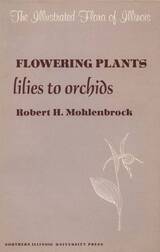 Flowering Plants: Lilies to Orchids
Robert H. Mohlenbrock
Southern Illinois University Press, 1970 A continuation of “The Illustrated Flora of Illinois” series, this volume features Illinois flowering plants. This series is designed to provide a working reference for the identification and classification of all the plant forms found in the state. This series is the first of its kind, as no other study of this sort has been undertaken in any other state, and as such, is an unparalleled contribution to its field. In his introduction to this volume, Mr. Mohlenbrock discusses some of the terms and procedures used in the identification and classification of the plants. He outlines the life histories and morphologies of some of the representative monocots, and also illustrates some of their habits and frequencies in Illinois. Since these volumes are meant to be used by the amateur as well as the professional botanist, the methods and terms used in the text are explained. The directions for the use of the various identification keys are given so that even the novice plant lover will be able to identify the species encountered. For the uninitiated, a glossary is provided which gives definitions for all terms that might be unfamiliar. All necessary aids to identification are included in the text itself. The identification keys make it initially possible to classify the plants according to order, family, genus and finally, species and the identifying characteristics of each descending class are given in detail. The morphology of each species is outlined, along with data on frequency of occurrence, related soil and climate conditions and history of past collections, and history of past collections. An illustration showing the more important features of the species in detail is included with the description, as well as a map indicating its geographical locations in Illinois. This book will be invaluable to students, teachers and professionals; particularly those who are interested in observing the plants in their natural habitat. Those who use it will find it possible to obtain a broad view of changing plant forms as they relate to soil and climate variations throughout the state. And it will provide a delightful diversion for all who enjoy viewing beautiful forms in nature. A walk through the forest will become an opportunity for discovery and appreciation.
Flowering Plants: Magnolias to Pitcher Plants
Robert H. Mohlenbrock
Southern Illinois University Press, 1981 This volume, the eighth devoted to flowering plants in the Illustrated Flora of Illinois series, is the third of several devoted to dicotyledons, which include such well-known plants as roses, peas, mustards, mints, nightshades, milkweeds, and asters. Mohlenbrock here represents four orders (Annonales, Berberidales, Nymphaeales, and Sarraceniales) and fifteen families of plants. As in previous volumes in this series, the common names are those used locally in Illinois. An illustration of each species depicts the distinguishing features and the habitat in Illinois.
Flowering Plants: Nightshades to Mistletoe
Robert H. Mohlenbrock
Southern Illinois University Press, 1990 This sixth volume of dicots contains three orders and eight families. The orders included are Solanales, Campanulales, and Santalales. Within the Solanales are the families Solanaceae, Convolvulaceae, Cuscutaceae, and Polemoniaceae. The Campanulales contain only the family Campanulaceae. The Santalales include the families Celastraceae, Santalaceae, and Viscaceae. As with each volume in this series Mohlenbrock includes a complete plant description, illustrations showing diagnostic features, distribution maps, and ecological notes.
Flowering Plants of Seychelles
S. A. Robertson
Royal Botanic Gardens, Kew, 1989 A comprehensive,illustrated checklist of the islands' flora. Some 1,140 species are covered, each with brief taxonomic notes, and record of localities where known.
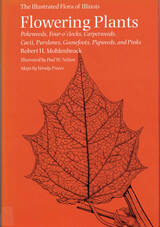 Flowering Plants: Pokeweeds, Four-o'clocks, Carpetweeds, Cacti, Purslanes, Goosefoots, Pigweeds, and Pinks
Robert H. Mohlenbrock
Southern Illinois University Press, 2001 Robert H. Mohlenbrock provides a definitive account of the pokeweed, four-o'clock, carpetweed, cactus, purslane, goosefoot, pigweed, and pink families in Illinois. Flowering Plants: Pokeweeds, Four-o’clocks, Carpetweeds, Cacti, Purslanes, Goosefoots, Pigweeds, and Pinks is the fifteenth volume of the Illustrated Flora of Illinois series and the ninth devoted to dicots, or plants that have two seed-leaves, or cotyledons, upon germination. Each of the 141 plants is beautifully illustrated by Paul W. Nelson. Nelson shows the full habitat of the plant and close-ups of various vegetative and reproductive structures that are crucial for the identification of individual species. Each illustration includes detailed drawings of the flowers, fruits, and seeds of the plant covered. Mohlenbrock provides a complete description of each species as well as a discussion of the nomenclature and habitats, and his fifty-three years of experience enable him to present little-known diagnostic features for many species. Range maps show the county distribution of each species in Illinois. Mohlenbrock includes a statement giving the overall range of each species in the United States as well as a detailed key for the identification of the species. Flowering Plants contains many plants whose obscure flower parts make them exceedingly difficult to identify. The close-up illustrations of these parts will aid the user of the book immensely in identification of the species. Included are several species previously unknown in Illinois. New illustrations, which include detailed drawings of the flowers, fruits, and seeds are presented for each species covered in this book. Mohlenbrock’s fifty-three years of experience enable him to present little-known diagnostic features for many species.
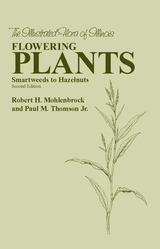 Flowering Plants: Smartweeds to Hazelnuts
Robert H. Mohlenbrock and Paul M. Thomson Jr.
Southern Illinois University Press, 2009 Since the publication of the first edition of Smartweeds to Hazelnuts in 1987, thirteen additional species and one hybrid have been discovered in Illinois. In addition, numerous nomenclatural changes have occurred for plants already known.
This second edition updates the status of the Polygonaceae, Hamamelidaceae, Platanaceae, Fagaceae, Betulaceae, and Corylaceae in Illinois. Each of the newly discovered species has been added and is fully illustrated. Updated nomenclature as well as Illinois distributional data are included for each species. In addition to the fourteen new plant illustrations, the appendix contains new information on the descriptions and the geographical locations of plants in the first edition, and revised identification keys.
Robert H. Mohlenbrock and Paul M. Thomson Jr. have included a complete description, illustrations showing diagnostic features, distribution maps, and ecological notes for each plant included in this volume.
This new edition will be invaluable to scholars of botany as well as laypersons interested in observing plants in their natural habitat.
Flowering Plants: Willows to Mustards
Robert H. Mohlenbrock
Southern Illinois University Press, 1980 This eighth volume in the comprehensive Illustrated Flora of Illinois series is the seventh volume devoted to flowering plants (the eighth volume is devoted to ferns) and the second treating dicotyledons, which include such well-known plants as roses, peas, mustards, mints, nightshades, milkweeds, and asters. The previous volume on dicots, Flowering Plants: Hollies to Loasas, was published in 1978. In the present volume, Mohlenbrock includes three orders of vascular plants encompassing five families. The orders are Salicales and Tamaricales, of the Salicaceae and Tamaricaceae families, and Capparidales, of the Capparidaceae, Resedaceae, and Brassicaceae families. In all, 44 genera and 117species are treated in this volume, each species illustrated in detail.
 Flowering Tales: Women Exorcising History in Heian Japan
Takeshi Watanabe
Harvard University Press, 2020 Telling stories: that sounds innocuous enough. But for the first chronicle in the Japanese vernacular, A Tale of Flowering Fortunes (Eiga monogatari), there was more to worry about than a good yarn. The health of the community was at stake. Flowering Tales is the first extensive literary study of this historical tale, which covers about 150 years of births, deaths, and happenings in late Heian society, a golden age of court literature in women’s hands. Takeshi Watanabe contends that the blossoming of tales, marked by the Tale of Genji, inspired Eiga’s new affective history: an exorcism of embittered spirits whose stories needed to be retold to ensure peace.
Tracing the narrative arcs of politically marginalized figures, Watanabe shows how Eiga’s female authors adapted the discourse and strategies of the Tale of Genji to rechannel wayward ghosts into the community through genealogies that relied not on blood but on literary resonances. These reverberations, highlighted through comparisons to contemporaneous accounts in courtiers’ journals, echo through shared details of funerary practices, political life, and characterization. Flowering Tales reanimates these eleventh-century voices to trouble conceptions of history: how it ought to be recounted, who got to record it, and why remembering mattered.
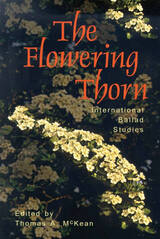 The Flowering Thorn: International Ballad Studies
Thomas McKean
Utah State University Press, 2003 The flowering thorn expresses the dual nature of the ballad: at once a distinctive expression of European tradition, but also somewhat tricky to approach from a scholarly perspective, requiring a range of disciplines to illuminate its rich composition. Most of this latter quality has to do with the very features that characterize ballads... or narrative songs. These include an appearance of fragmentation; a wide range of cultural and social referents; complex, evocative symbolic language; and variation. The notable multiformity of meaning, text and tune is mirrored in scholarship, too. The Flowering Thorn is therefore wide ranging, with articles written by world authorities from the fields of folklore, history, literature, and ethnology, employing a variety of methodologies—structuralism to functionalism, repertoire studies to geographical explorations of cultural movement and change. The twenty-five selected contributions represent the latest trends in ballad scholarship, embracing the multi-disciplinary nature of the field today. The essays have their origins in the 1999 International Ballad Conference of the Kommission fur Volksdichtung (KfV), which focused particularly on ballads and social context; performance and repertoire; genre, motif, and classification. The revised, tailored, and expanded essays are divided into five sections—the interpretation of narrative song; structure and motif; context, version, and transmission; regions, reprints, and repertoires; and the mediating collector's offering a range of examples from fifteen different cultures, ten of them drawing on languages other than English, resulting in a series of personal journeys to the heart of one of Europe's richest, most enduring cultural creations. —Thomas McKean, from the Introduction CONTRIBUTORS: Mary Anne Alburger, David Atkinson, Julia C. Bishop, Valentina Bold, Katherine Campbell, Nicolae Constantinescu, Luisa Del Giudice, Sheila Douglas, David G. Engle, Frances J. Fischer, Simon Furey, Vic Gammon, Marjetka Golez-Kaucic, Pauline Greenhill, Cozette Griffin-Kremer, J. J. Dias Marques, William Bernard McCarthy, Isabelle Peere, Gerald Porter, James Porter, Roger de V. Renwick, Sigrid Rieuwerts, Michèle Simonsen, Larry Syndergaard, Stefaan Top, Larysa Vakhnina, Lynn Wollstadt
Flowers as Mind Control: poems
Laura Minor
BkMk Press, 2021 This book, which was selected by poet John Hodgen for the John Ciardi Prize for Poetry, ranges across rural Florida and Georgia as well as Los Angeles and New York City, include considerations of homesickness, memory, music, alcohol, love, and loss. With a voice at once inquisitive and prescient, Minor meditates on consumption, vice, homesickness, memory, family, and the landscape. Minor’s writing is unerringly lyric and blooming with elegant charm and keen description. This book is an alchemy of fortitude in the face of despair and all the transformative possibility that comes with the hope for a better future.
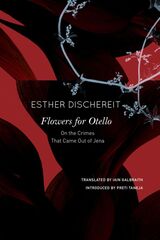 Flowers for Otello: On the Crimes That Came Out of Jena
Esther Dischereit
Seagull Books, 2022 A powerful performance text that illuminates incidents of anti-immigrant violence in contemporary Germany.
Between 1998 and 2007 a series of killings in Germany, disdainfully styled “doner murders” by the media, were attributed by German police to internecine rivalries among immigrants. The victims included eight citizens of Turkish origin, a Greek citizen, and a German policewoman. Not until 2011 did the German public learn not only that the police had ignored signs pointing to the real perpetrators, a neo-Nazi group called the National Socialist Underground, but also that important files, possibly containing evidence implicating state agencies, had disappeared from the archives of Federal Police and intelligence organizations.
Esther Dischereit, one of the preeminent German-Jewish voices of the post-Holocaust generation, takes that failure of the state to protect its citizens from racist violence as the core of her performance text Flowers for Otello: On the Crimes That Came Out of Jena. Seeking an appropriate language with which to meet the bereaved, she also finds a way to raise the blanket of silence that is used by those who would prefer that we forget. Combining witness testimony, myth, and incidents from a history of violence against minorities, Flowers for Otello, in Iain Galbraith’s translation, refuses chaos, instead revealing the chilling, patterned order of tragedy while bringing a great writer’s humanism to the fore.
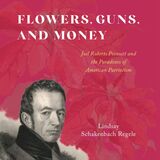 Flowers, Guns, and Money: Joel Roberts Poinsett and the Paradoxes of American Patriotism
Lindsay Schakenbach Regele
University of Chicago Press, 2023 This is an auto-narrated audiobook version of this book.
A fascinating historical account of a largely forgotten statesman, who pioneered a form of patriotism that left an indelible mark on the early United States.
Joel Roberts Poinsett’s (1779–1851) brand of self-interested patriotism illuminates the paradoxes of the antebellum United States. He was a South Carolina investor and enslaver, a confidant of Andrew Jackson, and a secret agent in South America who fought surreptitiously in Chile’s War for Independence. He was an ambitious Congressman and Secretary of War who oversaw the ignominy of the Trail of Tears and orchestrated America’s longest and costliest war against Native Americans, yet also helped found the Smithsonian. In addition, he was a naturalist, after whom the poinsettia—which he appropriated while he was serving as the first US ambassador to Mexico—is now named.
As Lindsay Schakenbach Regele shows in Flowers, Guns, and Money, Poinsett personified a type of patriotism that emerged following the American Revolution, one in which statesmen served the nation by serving themselves, securing economic prosperity and military security while often prioritizing their own ambitions and financial interests. Whether waging war, opposing states’ rights yet supporting slavery, or pushing for agricultural and infrastructural improvements in his native South Carolina, Poinsett consistently acted in his own self-interest. By examining the man and his actions, Schakenbach Regele reveals an America defined by opportunity and violence, freedom and slavery, and nationalism and self-interest.
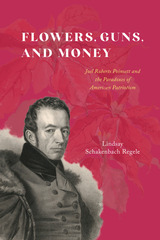 Flowers, Guns, and Money: Joel Roberts Poinsett and the Paradoxes of American Patriotism
Lindsay Schakenbach Regele
University of Chicago Press, 2023 A fascinating historical account of a largely forgotten statesman, who pioneered a form of patriotism that left an indelible mark on the early United States.
Joel Roberts Poinsett’s (1779–1851) brand of self-interested patriotism illuminates the paradoxes of the antebellum United States. He was a South Carolina investor and enslaver, a confidant of Andrew Jackson, and a secret agent in South America who fought surreptitiously in Chile’s War for Independence. He was an ambitious Congressman and Secretary of War who oversaw the ignominy of the Trail of Tears and orchestrated America’s longest and costliest war against Native Americans, yet also helped found the Smithsonian. In addition, he was a naturalist, after whom the poinsettia—which he appropriated while he was serving as the first US ambassador to Mexico—is now named.
As Lindsay Schakenbach Regele shows in Flowers, Guns, and Money, Poinsett personified a type of patriotism that emerged following the American Revolution, one in which statesmen served the nation by serving themselves, securing economic prosperity and military security while often prioritizing their own ambitions and financial interests. Whether waging war, opposing states’ rights yet supporting slavery, or pushing for agricultural and infrastructural improvements in his native South Carolina, Poinsett consistently acted in his own self-interest. By examining the man and his actions, Schakenbach Regele reveals an America defined by opportunity and violence, freedom and slavery, and nationalism and self-interest.
Flowers in the Dustbin: Culture, Anarchy, and Postwar England
Neil Nehring
University of Michigan Press, 1993 Flowers in the Dustbin looks at the volatile relations between literature, rock music, and youth subcultures in postwar England. Neil Nehring traces the continuities between the original avant-garde of the twenties and thirties and the postwar youth culture, arguing that anarchism never really disappeared from the world. The author shows that British youth groups like the Mods, the Rockers, Punks, and Teddy Boys and the music that inspired them appear increasingly more acute than their literary counterparts, belying conventional assumptions about the relative powers of "high" and "low" culture. By examining literary texts as part of a larger sampling of cultural forms and their uses in everyday life, Flowers in the Dustbin provides a striking illustration of the significance the field of cultural studies holds for studies in English.
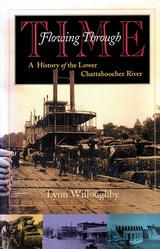 Flowing Through Time: A History of the Lower Chattahoochee River
Lynn Willoughby
University of Alabama Press, 1998 This handsome, illustrated book chronicles the history of the Lower Chattahoochee River and the people who lived along its banks from prehistoric Indian settlement to the present day. In highly accessible, energetic prose, Lynn Willoughby takes readers down the Lower Chattahoochee River and through the centuries. On this journey, the author begins by examining the first encounters between Native Americans and European explorers and the international contest for control of the region in the 17th and 19th centuries.Throughout the book pays particular attention to the Chattahoochee's crucial role in the economic development of the area. In the early to mid-nineteenth century--the beginning of the age of the steamboat and a period of rapid growth for towns along the river--the river was a major waterway for the cotton trade. The centrality of the river to commerce is exemplified by the Confederacy's efforts to protect it from Federal forces during the Civil War. Once railroads and highways took the place of river travel, the economic importance of the river shifted to the building of dams and power plants. This subsequently led to the expansion of the textile industry. In the last three decades, the river has been the focus of environmental concerns and the subject of "water wars" because of the rapid growth of Atlanta. Written for the armchair historian and the scholar, the book provides the first comprehensive social, economic, and environmental history of this important Alabama-Georgia-Florida river. Historic photographs and maps help bring the river's fascinating story to life.
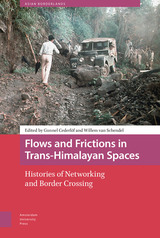 Flows and Frictions in Trans-Himalayan Spaces: Histories of Networking and Border Crossing
Gunnel Cederlöf
Amsterdam University Press, 2022 Flows and Frictions in Trans-Himalayan Spaces traces movements and connections in a region known for its formidable obstacles to mobility. Eight original essays and a conceptual introduction engage with questions of networks and interconnection between people across a bordered landscape. Mobility among the extremely varied ecologies of south-western China, Myanmar and north-eastern India, with their rugged terrain, high mountains, monsoon-fed rivers and marshy lowlands, is certainly subject to friction. But today, harsh political realities have created hard borders and fractured this trans-Himalayan terrain. However, the closely researched chapters in this book demonstrate that these borders have not prevented an abundance of movements, connections and flows. Mobility has always coexisted with friction here, but this coexistence has been unsettled, giving this space its historical shape and its contemporary dynamism. Introducing the concept of the ‘corridor’ as an analytical framework, this collection investigates mobility and flows in this unique socio-political landscape.
 Flows of Violence: Water, Infrastructures, and the State in Buenaventura, Colombia
Felipe Fernández
University of Arizona Press, 2025 Flows of Violence offers a profound ethnographic exploration of the intricate relationship between violence and water infrastructure in one of Colombia’s most marginalized cities. This groundbreaking work engages with the concept of “infrastructural violence,” revealing how the Colombian state’s neglect and inadequate provision of water services perpetuate inequality and suffering among Buenaventura’s residents. Through extensive fieldwork, Fernández provides rich empirical data and firsthand accounts that bring to light the daily struggles and resilience of the city’s inhabitants.
The book critically examines how everyday crime and state neglect intersect, altering the improvised practices of water storage and access among the population. It also highlights the innovative mechanisms employed by social movements and ordinary citizens to cope with and resist these challenges. Flows of Violence is an essential read for scholars in anthropology, geography, and Latin American studies, offering valuable insights into the sociopolitical impacts of infrastructure. This timely contribution underscores the urgent need for equitable infrastructure development and social justice, making it a pivotal text for understanding urban poverty and state dynamics in Latin America and beyond.
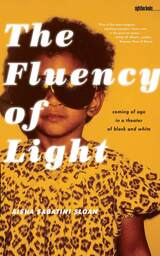 The Fluency of Light: Coming of Age in a Theater of Black and White
Aisha Sabatini Sloan
University of Iowa Press, 2013 In these intertwined essays on art, music, and identity, Aisha Sabatini Sloan, the daughter of African American and Italian American parents, examines the experience of her mixed-race identity. Embracing the far-ranging stimuli of her media-obsessed upbringing, she grasps at news clippings, visual fragments, and lyrics from past and present in order to weave together a world of sense.
Art in all forms guides the author toward understanding concepts like blackness, jazz, mortality, riots, space, time, self, and other without falling prey to the myth that all things must exist within a system of binaries. Recalling her awkward attempts at coolness during her childhood, Sabatini Sloan evokes Thelonious Monk’s stage persona as a metaphor for blackness. Through the conceptual art of Adrian Piper, the author is able to understand what is so quietly menacing about the sharp, clean lines of an art gallery where she works as an assistant. The result is a compelling meditation on identity and representation.
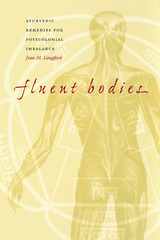 Fluent Bodies: Ayurvedic Remedies for Postcolonial Imbalance
Jean M. Langford
Duke University Press, 2002 Fluent Bodies examines the modernization of the indigenous healing practice, Ayurveda, in India. Combining contemporary ethnography with a study of key historical moments as glimpsed through early-twentieth-century texts, Jean M. Langford argues that as Ayurveda evolved from an eclectic set of healing practices into a sign of Indian national culture, it was reimagined as a healing force not simply for bodily disorders but for colonial and postcolonial ills.
Interweaving theory with narrative, Langford explores the strategies of contemporary practitioners who reconfigure Ayurvedic knowledge through institutions and technologies such as hospitals, anatomy labs, clinical trials, and sonograms. She shows how practitioners appropriate, transform, or circumvent the knowledge practices implicit in these institutions and technologies, destabilizing such categories as medicine, culture, science, symptom, and self, even as they deploy them in clinical practice. Ultimately, this study points to the future of Ayurveda in a transnational era as a remedy not only for the wounds of colonialism but also for an imagined cultural emptiness at the heart of global modernity.
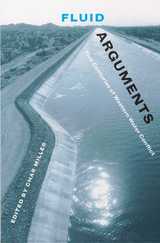 Fluid Arguments: Five Centuries of Western Water Conflict
Edited by Char Miller
University of Arizona Press, 2001 Water—or the lack of it—has shaped the contours of the American West and continues to dominate the region's development. From the incursions of the Spanish conquistadores to the dams of the New Deal era, humans have sought water in these arid lands as the key to survival and success. And as the West becomes more urbanized, water is an issue as never before. This book sets contemporary and often bitter debates over water in their historical contexts by examining some of the most contentious issues that have confronted the region over five centuries.
Seventeen contributors—representing history, geography, ethnography, political science, law, and urban studies—provide an interdisciplinary perspective on the many dimensions of water in the West: Spanish colonial water law, Native American water rights, agricultural concerns, and dam building. A concluding essay looks toward the future by examining the impact of cities on water and of water marketing on the western economy.
As farmers and ranchers from Kansas to California compete for water with powerful urban economies, the West will continue to be reshaped by this scarce and precious resource. Fluid Arguments clearly shows that many of the current disputes over water take place without a real appreciation for the long history of the debate. By shedding new light on how water allocation is established—and who controls it—this book makes a vital contribution to our understanding of water and growth in the region.
CONTENTS
Divining the Past: An Introduction / Char Miller
Part 1. Land and Water on New Spain’s Frontiers
1. "Only Fit for Raising Stock": Spanish and Mexican Land and Water Rights in the Tamaulipan Cession / Jesús F. de la Teja
2. Water, the Gila River Pimas, and the Arrival of the Spanish / Shelly C. Dudley
3. "Between This River and That": Establishing Water Rights in the Chama Basin of New Mexico / Sandra K. Mathews-Lamb
Part 2. The Native American Struggle for Water
4. Maggot Creek and Other Tales: Kiowa Identity and Water, 1870-1920 / Bonnie Lynn-Sherow
5. The Dilemmas of Indian Water Policy, 1887-1928 / Donald J. Pisani
6. First in Time: Tribal Reserved Water Rights and General Adjudications in New Mexico / Alan S. Newell
7. Winters Comes Home to Roost / Daniel McCool
Part 3. Agricultural Conundrums
8. Water, Sun, and Cattle: The Chisholm Trail as an Ephemeral Ecosystem / James E. Sherow
9. Private Irrigation in Colorado’s Grand Valley / Brad F. Raley
10. A Rio Grande "Brew": Agriculture, Industry, and Water Quality in the Lower Rio Grande Valley / John P. Tiefenbacher
11. Specialization and Diversification in the Agricultural System of Southwestern Kansas, 1887-1980 / Thomas C. Schafer
12. John Wesley Powell Was Right: Resizing the Ogallala High Plains / John Opie
Part 4. Dam those Waters!
13. Private Initiative, Public Works: Ed Fletcher, the Santa Fe Railway, and Phoenix’s Cave Creek Flood Control Dam / Donald C. Jackson
14. The Changing Fortunes of the Big Dam Era in the American West / Mark Harvey
15. Building Dams and Damning People in the Texas-Mexico Border Region: Mexico’s El Cuchillo Dam Project / Raúl M. Sánchez
Part 5. The Coming Fight
16. Water and the Western Service Economy: A New Challenge / Hal K. Rothman
Fluid Bodies and Bodily Fluids in Premodern Europe: Bodies, Blood, and Tears in Literature, Theology, and Art
Anne M. Scott
Arc Humanities Press, 2019 This interdisciplinary collection of essays, containing chapters from specialists in history, art history, medical history, and literature, examines how the intimately familiar language of the body served as a convenient medium through which to imagine and describe transformations of the larger world, both for the better and also for the worse. Its individual contributors demonstrate the myriad ways in which rethinking the human body was one way to approach rethinking the social, political, and religious realities of the world from the Middle Ages until the early modern period.
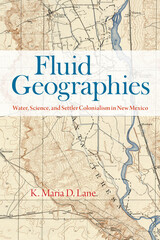 Fluid Geographies: Water, Science, and Settler Colonialism in New Mexico
K. Maria D. Lane
University of Chicago Press, 2024 An unprecedented analysis of the origin story of New Mexico’s modern water management system.
Maria Lane’s Fluid Geographies traces New Mexico’s transition from a community-based to an expert-led system of water management during the pre-statehood era. To understand this major shift, Lane carefully examines the primary conflict of the time, which pitted Indigenous and Nuevomexicano communities, with their long-established systems of irrigation management, against Anglo-American settlers, who benefitted from centralized bureaucratic management of water. The newcomers’ system eventually became settled law, but water disputes have continued throughout the district courts of New Mexico’s Rio Grande watershed ever since.
Using a fine-grained analysis of legislative texts and nearly two hundred district court cases, Lane analyzes evolving cultural patterns and attitudes toward water use and management in a pivotal time in New Mexico’s history. Illuminating complex themes for a general audience, Fluid Geographies helps readers understand how settler colonialism constructed a racialized understanding of scientific expertise and legitimized the dispossession of nonwhite communities in New Mexico.
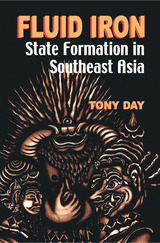 Fluid Iron: State Formation in Southeast Asia
Tony Day
University of Hawaii Press, 2002 Fluid Iron is the first extended treatment of state formation in Southeast Asia from early to contemporary times and the first book-length analysis of Western historical and ethnographic writing on the region. It includes critical assessments of the work of Clifford Geertz, O.W. Wolters, Benedict Anderson, and other major scholars who have written on early, colonial, and modern Southeast Asian history and culture. Making use of the ideas of Weber, Marx, Foucault, and postmodern and postcolonial theory, Tony Day argues that culture must be restored to the study of Southeast Asian history so that the state and historical developments in the region can be returned to their own "alternative" historical contexts and trajectories. He employs a wide range of contemporary scholarship, as well as Southeast Asian literary and historical texts, inscriptions, and temples to explore the kinds of concepts and practices--kinship networks, cosmologies, gender identities, bureaucracies, rituals, violence and aesthetics--that have been used for centuries to build states.Highly readable and accessibly written, Fluid Iron demonstrates that Southeast Asian state building has taken place in a part of the world that has always been a crossroads of cultural and transcultural change. Day urges Southeast Asians to learn more about the history of their own state formations so they can safeguard not only human freedom, but also the "incongruity" of their unique region in the years ahead.
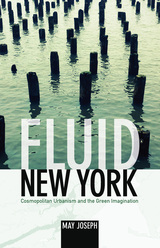 Fluid New York: Cosmopolitan Urbanism and the Green Imagination
May Joseph
Duke University Press, 2013 Hurricane Sandy was a fierce demonstration of the ecological vulnerability of New York, a city of islands. Yet the storm also revealed the resilience of a metropolis that has started during the past decade to reckon with its aqueous topography. In Fluid New York, May Joseph describes the many ways that New York, and New Yorkers, have begun to incorporate the city's archipelago ecology into plans for a livable and sustainable future. For instance, by cleaning its tidal marshes, the municipality has turned a previously dilapidated waterfront into a space for public leisure and rejuvenation. Joseph considers New York's relation to the water that surrounds and defines it. Her reflections reach back to the city's heyday as a world-class port—a past embodied in a Dutch East India Company cannon recently unearthed from the rubble at the World Trade Center site—and they encompass the devastation caused by Hurricane Sandy in 2012. They suggest that New York's future lies in the reclamation of its great water resources—for artistic creativity, civic engagement, and ecological sustainability.
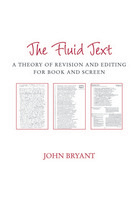 The Fluid Text: A Theory of Revision and Editing for Book and Screen
John Bryant
University of Michigan Press, 2002 Theorists, scholars, and critics usually consider literary works to be fixed objects, assuming that any variations in the text of a work should be stabilized, reduced, eliminated. John Bryant urges that these variations create valuable records of the interactions between the artist and society. Preprint revisions, revised editions, adaptations for film, and expurgations for children are among the many forms of flux that shape literary works and position them relative to their audiences. Fully understanding the life of a literary work in its cultural situation requires recognizing the fluidity of text, and the present work makes the first coherent theoretical, critical, and editorial approach to the study of revision.
The author develops his theory and its critical application drawing upon the example of Melville's Typee, using its various versions to present protocols for fluid text analysis. He shows how the mountain of scholarly material comprising the fluid text can be presented by a partnership of book and computer screen, in ways that offer new opportunities, insights,and pleasures for scholars and readers.
The Fluid Text: A Theory of Revision and Editing for Book and Screen is written in a clear and accessible style and will appeal to scholars and students in editorial theory, literary criticism and analysis, and anyone concerned with the information architecture of complex literary works in digital media.
John Bryant is Professor of English, Hofstra University. His most recent book is an edition of Melville's Tales, Poems, and Other Writings.
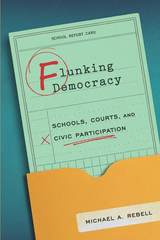 Flunking Democracy: Schools, Courts, and Civic Participation
Michael A. Rebell
University of Chicago Press, 2018 The 2016 presidential election campaign and its aftermath have underscored worrisome trends in the present state of our democracy: the extreme polarization of the electorate, the dismissal of people with opposing views, and the widespread acceptance and circulation of one-sided and factually erroneous information. Only a small proportion of those who are eligible actually vote, and a declining number of citizens actively participate in local community activities.
In Flunking Democracy, Michael A. Rebell makes the case that this is not a recent problem, but rather that for generations now, America’s schools have systematically failed to prepare students to be capable citizens. Rebell analyzes the causes of this failure, provides a detailed analysis of what we know about how to prepare students for productive citizenship, and considers examples of best practices. Rebell further argues that this civic decline is also a legal failure—a gross violation of both federal and state constitutions that can only be addressed by the courts. Flunking Democracy concludes with specific recommendations for how the courts can and should address this deficiency, and is essential reading for anyone interested in education, the law, and democratic society.
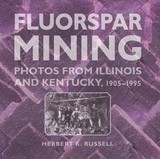 Fluorspar Mining: Photos from Illinois and Kentucky, 1905-1995
Herbert K. Russell
Southern Illinois University Press, 2019 Winner, ISHS Best of Illinois History Award, 2019
This first-ever pictorial record of the people and methods of the Illinois-Kentucky Fluorspar District from the 1900s to the 1990s covers early and modern means of extracting, hoisting, processing, and transporting the mineral from mine mouth to end user. Nearly one hundred images carefully selected by author Herbert K. Russell show early pick-and-shovel extraction and open-flame lighting as well as primitive drilling methods and transportation by barrels, buckets, barges, mule teams, and trams, in addition to the use of modern equipment and sophisticated refinement procedures such as froth flotation. Russell also provides an overview of the many industrial uses of fluorspar, from metal work by ancient Romans to the processing of uranium by scientists seeking to perfect the atomic bomb. Preserving what is known about the industry by miners, managers, and museums, this detailed and fascinating pictorial history looks both above and below ground at fluorspar mining.
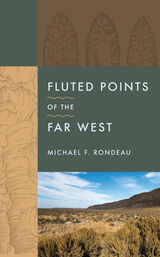 Fluted Points of the Far West
Michael F. Rondeau
University of Utah Press, 2022 Fluted Points of the Far West provides the first large-scale overview of fluted points in the far western United States, including details of their attributes, trends in production, and range of variability. It serves as a compendium of groundbreaking research by the California Fluted Lanceolate Uniform Testing and Evaluation Database (CalFLUTED) project. Details regarding size, morphology, material, basal flaking technology, breakage patterns, repair patterns, manufacturing (as revealed by unfinished fluted bifaces), margin grinding, and flute scratching are provided through this research, both in terms of general trends and noteworthy exceptions.
Designed as a ready reference, these data are also summarized for each of the four sample states covered: California, Nevada, Oregon, and Utah. Summaries introduce the history and circumstances of fluted point studies by state, a list of references for each state used in the CalFLUTED study reports, a comprehensive listing of the relevant CalFLUTED study reports, and a breakdown by state of fluted point attribute details as listed above.
Reviews and discussions cover a range of topics, including classification of fluted points, identifying flute scars, and indicative traits that a fluted point is not from the prehistoric Far West. Additional discussions cover hafting alternatives, fluted point dating, far western fluted point typology, and the likely direction of further research on a range of fluted point topics.
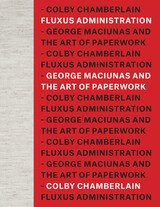 Fluxus Administration: George Maciunas and the Art of Paperwork
Colby Chamberlain
University of Chicago Press, 2024 A new, innovative approach to the work of Fluxus artist George Maciunas.
Though widely recognized as the founder of the legendary Fluxus movement, George Maciunas has long been a puzzling figure in the history of twentieth-century art. Many have questioned whether he should be considered an artist at all. In Fluxus Administration, critic and art historian Colby Chamberlain reveals the consistent artistic practice hidden behind Maciunas’s varied work in architecture, music, performance, publication, graphic design, film, and real estate as an attempt to create models for community through structures of bureaucracy.
In this deeply researched study, Chamberlain traces how Maciunas’s art insinuated itself into settings as unlikely as the routes of the postal service, the fine print of copyright law, the zoning strictures of urban planning, and the corridors of hospitals. These shifting frames of reference expand our understanding of where an artistic practice can operate and what forms it might assume. In particular, Chamberlain draws on media theory to highlight Maciunas’s ingeniously crafted paperwork, much of which is beautifully reproduced here for the first time.
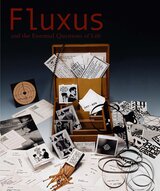 Fluxus and the Essential Questions of Life
Edited by Jacquelynn Baas
University of Chicago Press, 2011 Fluxus—from the Latin, meaning “to flow”—was a radical, international network of artists, composers, and designers in the 1960s and 1970s noted for blurring the boundaries between what we term “art” and what makes up everyday life. Following the work of American Fluxus founder George Maciunus, Fluxus and the Essential Questions of Life presents a variety of objects that express the Fluxus mission, while empowering readers to challenge the presumptions we bring to the concept and practice of art making.
Based on a large-scale traveling exhibition first organized at Dartmouth College’s Hood Museum of Art, this book chronicles the movement in the form of an art self-help book, playfully providing answers to fourteen key questions such as “Art—what is it good for?” and “What am I?” via Fluxus works. Featuring over eighty color and black-and-white illustrations, accompanied by essays from curator Jacquelynn Baas, Fluxus scholars Hannah Higgins and Jacob Proctor, and Fluxus artist Ken Friedman, this book will make an original contribution to our understanding of this provocative moment in modern art.
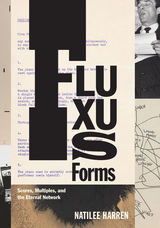 Fluxus Forms: Scores, Multiples, and the Eternal Network
Natilee Harren
University of Chicago Press, 2020 “PURGE the world of dead art, imitation, artificial art. . . . Promote living art, anti-art, promote NON ART REALITY to be grasped by all peoples,” writes artist George Maciunas in his Fluxus manifesto of 1963. Reacting against an elitist art world enthralled by modernist aesthetics, Fluxus encouraged playfulness, chance, irreverence, and viewer participation. The diverse collective—including George Brecht, Robert Filliou, Dick Higgins, Alison Knowles, George Maciunas, Yoko Ono, Nam June Paik, Benjamin Patterson, Takako Saito, Mieko Shiomi, Ben Vautier, and Robert Watts—embraced humble objects and everyday gestures as critical means of finding freedom and excitement beyond traditional forms of art-making.
While today the Fluxus collective is recognized for its radical neo-avant-garde works of performance, publishing, and relational art and its experimental, interdisciplinary approach, it was not taken seriously in its own time. With Fluxus Forms, Natilee Harren captures the magnetic energy of Fluxus activities and collaborations that emerged at the intersections of art, music, performance, and literature. The book offers insight into the nature of art in the 1960s as it traces the international development of the collective’s unique intermedia works—including event scores and Fluxbox multiples—that irreversibly expanded the boundaries of contemporary art.
 A Fly for the Prosecution: How Insect Evidence Helps Solve Crimes
M. Lee Goff
Harvard University Press, 2001 The forensic entomologist turns a dispassionate, analytic eye on scenes from which most people would recoil--human corpses in various stages of decay, usually the remains of people who have met a premature end through accident or mayhem. To Lee Goff and his fellow forensic entomologists, each body recovered at a crime scene is an ecosystem, a unique microenvironment colonized in succession by a diverse array of flies, beetles, mites, spiders, and other arthropods: some using the body to provision their young, some feeding directly on the tissues and by-products of decay, and still others preying on the scavengers.
Using actual cases on which he has consulted, Goff shows how knowledge of these insects and their habits allows forensic entomologists to furnish investigators with crucial evidence about crimes. Even when a body has been reduced to a skeleton, insect evidence can often provide the only available estimate of the postmortem interval, or time elapsed since death, as well as clues to whether the body has been moved from the original crime scene, and whether drugs have contributed to the death.
An experienced forensic investigator who regularly advises law enforcement agencies in the United States and abroad, Goff is uniquely qualified to tell the fascinating if unsettling story of the development and practice of forensic entomology.
Fly in the Buttermilk: The Life Story of Cecil Reed
Cecil A. Reed
University of Iowa Press, 1993 Born in 1913 in Collinsville, Illinois, Cecil Reed has lived all his life in the Midwest as a black man among whites. This self-styled fly in the buttermilk worked among whites with such skill and grace that they were barely aware of his existence—unless he wanted to get a bank loan or move into their neighborhood. Now, in his lively and optimistic autobiography, he speaks of his resilience throughout a life spent working peacefully but passionately for equality.
Flyboy 2: The Greg Tate Reader
Greg Tate
Duke University Press, 2016 Since launching his career at the Village Voice in the early 1980s Greg Tate has been one of the premiere critical voices on contemporary Black music, art, literature, film, and politics. Flyboy 2 provides a panoramic view of the past thirty years of Tate's influential work. Whether interviewing Miles Davis or Ice Cube, reviewing an Azealia Banks mixtape or Suzan-Lori Parks's Topdog/Underdog, discussing visual artist Kara Walker or writer Clarence Major, or analyzing the ties between Afro-futurism, Black feminism, and social movements, Tate's resounding critical insights illustrate how race, gender, and class become manifest in American popular culture. Above all, Tate demonstrates through his signature mix of vernacular poetics and cultural theory and criticism why visionary Black artists, intellectuals, aesthetics, philosophies, and politics matter to twenty-first-century America.
Fly-Fishing
Christopher Schaberg
Duke University Press, 2023 In Fly-Fishing, Christopher Schaberg ponders his lifetime pursuit of the widely mythologized art of fly-fishing. From the Michigan lakeshore where he learned to fish to casting flies in a New Orleans bayou, Schaberg sketches landscapes and fish habitats and shows how fly-fishing allows him to think about coexisting with other species. It offers Schaberg a much-needed source of humility, social isolation, connection with nature, and a reminder of environmental degradation. Rather than centering fishing on trophies, conquest, and travel, he advocates for a “small-fishing” that values catching the diminutive fish near one’s home. Introspective and personal, Fly-Fishing demonstrates how Schaberg’s obsession indelibly shapes how he understands and lives in the wider world.
Flying Against the Arrow: An Intellectual in Ceausescu's Romania
Horia-Roman Patapievici
Central European University Press, 2003 The ‘unbearable 80s’, as the last decade of the Ceauşescu era has been called in Romania, are in the focus of this quasi-autobiographical work. The book vividly portrays the difficulties encountered by a young intellectual trying to shape himself under the oppressive regime and provides a stark depiction of a man’s intellectual suffocation under hard-line socialist rule.
Flying At Night: Poems 1965-1985
Ted Kooser
University of Pittsburgh Press, 2005 Named U.S. Poet Laureate for 2004-2006, Ted Kooser is one of America's masters of the short metaphorical poem. Dana Gioia has remarked that Kooser has written more perfect poems than any poet of his generation.
In Flying at Night: Poems 1965-1985, Kooser has selected poems from two of his earlier works, Sure Signs and One World at a Time (1985). Taken together or read one at a time, these poems clearly show why William Cole, writing in the Saturday Review, called Ted Kooser "a wonderful poet," and why Peter Stitt, writing in the Georgia Review, proclaimed him "a skilled and cunning writer. . . . An authentic 'poet of the American people.'"
Flying Buttresses, Entropy, and O-Rings: The World of an Engineer
James L. Adams
Harvard University Press, 1991 From Teflon to Velcro, from bandwidths to base pairs, the artifacts of engineering and technology reflect the broad scope—and frustrating limitations—of our imagination. Best-selling author James Adams takes readers on an enlightening tour of this exciting world, demystifying such endeavors as design, research, and manufacturing.
 Flying for the Air Service: The Hughes Brothers in World War I
David K. Vaughan
University of Wisconsin Press, 1998 Flying for the Air Service provides a realistic picture of the typical flying experiences of the pilots who flew for the fledgling American Air Service during World War I. The narrative describes two brothers from Boston, George and Gerard Hughes, as they progress from apprentice pilots to flight instructors and combat pilots. After completing their pilot training program together, both were assigned as instructors. Then George was sent to France with the 12th Aero Squadrom, where he flew two-place observation aircraft over the front lines. Gerard, meanwhile, remained in America, instructing students in Texas. Eventually Gerard joined his brother's squadron in France as the war ended. Through the detailed letters and narrative comments of these two pilots, we can see clearly the hazards and challenges that were faced by those who flew in the early years of American aviation.
The Flying Garcias
Richard Garcia
University of Pittsburgh Press, 1993
“I am reminded of the Argentinean writers Julio Cortázar and Jorge Luis Borges, but with sunglasses and in California. The Flying Garcias is a sure voice and a fine book.”
—Alberto Ríos
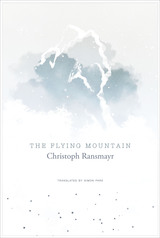 The Flying Mountain
Christoph Ransmayr
Seagull Books, 2019 In a publishing world that is all too full of realist novels written in undistinguished prose, discernible only by their covers, The Flying Mountain stands out—if for no other reason than that it consists entirely of blank verse. And that form is most suitable for the epic voyage Christoph Ransmayr relates: The Flying Mountain tells the story of two brothers who leave the southwest coast of Ireland on an expedition to Transhimalaya, the land of Kham, and the mountains of eastern Tibet—looking for an untamed, unnamed mountain that represents perhaps the last blank spot on the map. As they advance toward their goal, the brothers find their past, and their rivalry, inescapable, inflecting every encounter and decision as they are drawn farther and farther from the world they once knew.
Only one of the brothers will return. Transformed by his loss, he starts life anew, attempting to understand the mystery of love, yet another quest that may prove impossible. The Flying Mountain is thrilling, surprising, and lyrical by turns; readers looking for something truly new will be rewarded for joining Ransmayr on this journey.
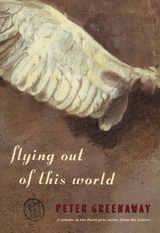 Flying Out of this World
Peter Greenaway
University of Chicago Press, 1994 Flights of fancy and fear, ecstatic highs, dreadful falls, and beckoning skies: these are the images British filmmaker Peter Greenaway collects and dissects in Flying out of This World, the second volume in a series developed by the Louvre and devoted to innovative writing on the visual arts.
As guest curator, Greenaway selected from the Louvre's collection of European prints and drawings ninety-one masterpieces that illustrate the human longing for flight. Greenaway's text, a compilation of brief commentaries that combine description, allusion, and interpretation, illuminate the images as depictions of flight desired and denied. Including works by Redon, Goya, Brueghel, Michelangelo, Mantegna, Rubens, Poussin, and Delacroix, this volume offers a combination of literary and visual art, of sight and insight.
A pursuit through the Bible, classical mythology, cosmology, theology, etymology, ornithology, and meteorology, Flying out of This World is not just an illustrated history of imagined flight, but a meditation on its meaning as a metaphor for the human condition, caught between a weighty body and a soaring spirit.
Flying Over Sonny Liston: Poems
Gary Short
University of Nevada Press, 1996 Winner of the 1996 Western States Book Award for poetry, Flying Over Sonny Liston explores with courage, compassion, and bone-deep wisdom the complicated and sometimes heartbreaking task of being human in the modern West. Whether he writes about the tortuous interior landscape of the family or the abused terrain of the Nevada desert, Gary Short is unfailingly honest, tender, and gifted with a vision for the all-revealing detail, the larger, wrenching truth. Although many of the poems are about death or express a deep and painful anger, the book is about survival. We often find in these poems a movement from the dark into a blazing light of realization that acts as a counter to sorrow, from comprehension to forgiveness, and an awareness that the daunting challenge of being human is won not in loud victories but through the delicate graces of mercy, trust, and hope.
 Flying Saucers
Donald H. Menzel
Harvard University Press A leading scientist dispels all the current mysteries about flying saucers in a new book which tells in so many words how to make them in the kitchen sink. Flying saucers or their equivalents have been observed for centuries. Many of them are caused, says Dr. Menzel, by conditions in the atmosphere—conditions which he has simulated in his laboratory; photographs of some of his experiments are among the book's many illustrations.
Dr. Menzel docs much more than debunk. He describes all the varied phenomena that have been misinterpreted as flying saucers, from the aurora borealis and the rainbow to radar mirages, and tells what causes them. He shows how our perceptions of these natural phenomena have been unconsciously distorted by fears, superstitions, and religious beliefs. He uncovers the intentional hoaxes and the practical jokes that have misled the public. He goes into the international repercussions of flying-saucer scares. All in all, this is one of the most fascinating accounts ever written about what the minds of men can fabricate about the real world.
It is admirably written science for the citizen, as well as being topical and controversial. The subject matter of the book was featured in recent articles in Look.
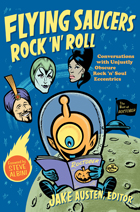 Flying Saucers Rock 'n' Roll: Conversations with Unjustly Obscure Rock 'n' Soul Eccentrics
Jake Austen, ed.
Duke University Press, 2011 For nearly twenty years, the much-beloved music magazine Roctober has featured work by some of the best underground cartoonists, exhaustive examinations of made-up genres such as “robot rock,” and an ongoing exploration of everything Sammy Davis Jr. ever sang, said, or did. But the heart of the magazine has always been the lengthy conversations with overlooked or forgotten artists. Flying Saucers Rock ’n’ Roll gathers the most compelling of these interviews. Eccentric, important artists—including the rockabilly icon Billy Lee Riley, the jazz musician and activist Oscar Brown Jr., the “Outlaw Country” singer David Allan Coe, and the pioneer rock ’n’ roll group the Treniers—give the most in-depth interviews of their lengthy careers. Obscure musicians, such as the Armenian-language novelty artist Guy Chookoorian and the frustrated interstellar glam act Zolar X, reveal fascinating lives lived at rock’s margins. Roctober’s legendarily dedicated writers convey telling anecdotes in the fervent, captivating prose that has long been appreciated by music enthusiasts. Along with the entertaining interviews, Flying Saucers Rock ’n’ Roll features more than sixty images from the pages of Roctober and ten illustrations created for the book by the underground rock ’n’ roll artist King Merinuk. Contributors
Steve Albini
Ben Austen
Jake Austen
John Battles
Bosco
Ken Burke
Mike Maltese
King Merinuk
Ken Mottet
Jonathan Poletti
James Porter
"Colonel" Dan Sorenson
Jacqueline Stewart
Flying through a Hole in the Storm: Poems
Fleda Brown
Ohio University Press, 2021 A keenly observant collection of poems on disaster, aging, and apocalypse. Golda Meir once said, “Old age is like a plane flying through a storm. Once you're aboard, there’s nothing you can do.” The poems in Fleda Brown’s brave collection, her thirteenth, take readers on a journey through the fury of this storm. There are plenty of tragedies to weather here, both personal and universal: the death of a father, a child’s terminal cancer, the extinction of bees, and environmental degradation. Brown’s poems are wise, honest, and deeply observant meditations on contemporary science, physics, family, politics, and aging. With tributes to visionary artists, including Frida Kahlo, Pablo Picasso, and Grandma Moses, as well as to life’s terrors, sadnesses, and joys, these works are beautiful dispatches from a renowned poet who sees the shadows lengthening and imagines what they might look like from the other side.
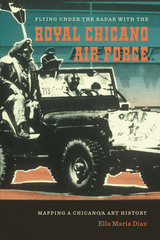 Flying Under the Radar with the Royal Chicano Air Force: Mapping a Chicano/a Art History
By Ella Maria Diaz
University of Texas Press, 2017 Winner, National Association for Chicana and Chicano Studies Book Award, 2019 The Royal Chicano Air Force produced major works of visual art, poetry, prose, music, and performance during the second half of the twentieth century and first decades of the twenty-first. Materializing in Sacramento, California, in 1969 and established between 1970 and 1972, the RCAF helped redefine the meaning of artistic production and artwork to include community engagement projects such as breakfast programs, community art classes, and political and labor activism. The collective’s work has contributed significantly both to Chicano/a civil rights activism and to Chicano/a art history, literature, and culture. Blending RCAF members’ biographies and accounts of their artistic production with art historical, cultural, and literary scholarship, Flying under the Radar with the Royal Chicano Air Force is the first in-depth study of this vanguard Chicano/a arts collective and activist group. Ella Maria Diaz investigates how the RCAF questioned and countered conventions of Western art, from the canon taught in US institutions to Mexican national art history, while advancing a Chicano/a historical consciousness in the cultural borderlands. In particular, she demonstrates how women significantly contributed to the collective’s output, navigating and challenging the overarching patriarchal cultural norms of the Chicano Movement and their manifestations in the RCAF. Diaz also shows how the RCAF’s verbal and visual architecture—a literal and figurative construction of Chicano/a signs, symbols, and texts—established the groundwork for numerous theoretical interventions made by key scholars in the 1990s and the twenty-first century.
 Flying Yoginis
Irwin Allan Sealy
Seagull Books, 2026 A profound reckoning with feminine power, sacred art, and the restless spirit of resistance.
Irwin Allan Sealy—master chronicler of the Indian imagination—sets off on a singular quest: to follow in the wake of the yoginis, those fierce, flying, shape-shifting female adepts of yoga whose images were carved in stone a thousand years ago across India and who now sit, displaced, in American museums.
Part travelogue, part philosophical musing, part cultural excavation, Flying Yoginis is a meditation on art, power, devotion, and the subversive energy of women who step out of line. With wit and wonder, Sealy traces their transcontinental journey from lost temples near Kanchipuram to glass-walled galleries in Kansas City and Minneapolis—finding along the way unexpected kinship with rebels and visionaries, from Rosa Parks to Carson McCullers. Blending the spiritual with the personal, the mythic with the mundane, Sealy offers a dazzling, genre-defying reflection on how the sacred persists, how memory travels, and how history is always being rewritten by those bold enough to reclaim it.
 Foch versus Clemenceau: France and German Dismemberment, 1918-1919
Jere Clemens King
Harvard University Press When, at the end of the First World War, Marshal Ferdinand Foch, soldier and popular hero, assumed the role of self-appointed peacemaker, he proved himself a source of embarrassment and irritation. Challenging Georges Clemenceau's right to negotiate the peace settlement, Foch attempted to arrange a peace which, according to him, would provide France with security, but which, according to his civilian superior, would have lost France's urgently needed allies.
French internal conflict in civil-military relations during the Versailles Peace Conference was thus primarily between Clemenceau and Foch, both inspired by the most patriotic of motives.
Foch versus Clemenceau gives a vivid account of the diplomatic maneuvers among France, its allies, and Germany during the period of the Conference. It sketches the Rhineland separatist movement in 1919--with Dorten's abortive, even amusing putsch, the Palatine-Rhineland Rebellion--as incidental background to the momentous struggle between Foch and his field commanders on the one hand and the President of the Council, Clemenceau, on the other over their differing conceptions of a realizable peace which could guarantee France's security.
Focus on Teaching
Edited by Walter Doyle and Thomas L. Good
University of Chicago Press, 1982
Focus on Vision
R. A. Weale
Harvard University Press, 1982 Here is a brief but comprehensive tour of the physiology of vision, guided by one of the grand masters of the discipline. Offering first a solid grounding in structure and function, the book emphasizes those areas that the author considers to be of most significance in current research. Much attention is given to the role of vision in circadian timekeeping, the development of the visual system, the effect of aging on the eye, and the provocative questions of perception and illusion.
An eminently readable text, Focus on Vision will more than satisfy the needs of students in ophthalmology, optometry, physiological optics, biology, psychology, and art. It is fully illustrated and contains lists of references and further reading. The questions at the end of each chapter may be used to test understanding or simply to excite discussion.
Focus Projection in Serbo-Croatian
Svetlana Godjevac
CSLI, 2004 Research on the English language suggests that the relationship between phonological prominence, word order, and focus—better known as focus projection—is mediated through syntax. This book breaks new ground with its demonstration of how the Serbo-Croatian language shows the workings of this relationship.
Svetlana Godjevac explores the development of focus projection. Further distinguishing her work from the numerous studies of the English language, she analyzes how focus projection in Serbo-Croatian also depends on the semantic type of the prominence bearing element. This volume is an innovative analysis of linguistic theory as well as a study of a lesser examined language.
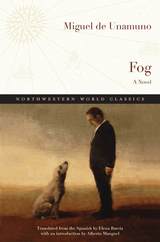 Fog: A Novel
Miguel de Unamuno, Translated from the Spanish by Elena Barcia with an introduction by Alberto Manguel
Northwestern University Press, 2017 Fog is a fresh new translation of the Spanish writer Miguel de Unamuno’s Niebla, first published in 1914. An early example of modernism’s challenge to the conventions of nineteenth-century realist fiction, Fog shocked critics but delighted readers with its formal experimentation and existential themes. This revolutionary novel anticipates the work of Sartre, Borges, Pirandello, Nabokov, Calvino, and Vonnegut.
The novel’s central character, Augusto, is a pampered, aimless young man who falls in love with Eugenia, a woman he randomly spots on the street. Augusto’s absurd infatuation offers an irresistible target for the philosophical ruminations of Unamuno’s characters, including Eugenia’s guardian aunt and “theoretical anarchist” uncle, Augusto’s comical servants, and his best friend, Victor, an aspiring writer who introduces him to a new, groundbreaking type of fiction. In a desperate moment, Augusto consults his creator about his fate, arguing with Unamuno about what it means to be “real.” Even Augusto’s dog, Orfeo, offers his canine point of view, reflecting on the meaning of life and delivering his master’s funeral oration.
Fog is a comedy, a tragic love story, a work of metafiction, and a novel of ideas. After more than a century, Unamuno’s classic novel still moves us, makes us laugh, and invites us to question our assumptions about literature, relationships, and mortality.
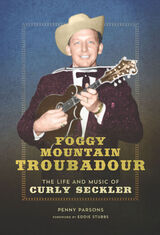 Foggy Mountain Troubadour: The Life and Music of Curly Seckler
Penny Parsons
University of Illinois Press, 2016 With his trademark mandolin style and unequaled tenor harmonies, Curly Seckler has carved out a seventy-seven-year career in bluegrass and country music. His foundational work in Flatt and Scruggs's Foggy Mountain Boys secured him a place in bluegrass history, while his role in The Nashville Grass made him an essential part of the music's triumphant 1970s revival. Written in close collaboration with Mr. Seckler and those who know him, Foggy Mountain Troubadour is the first full-length biography of an American original. Penny Parsons follows a journey from North Carolina schoolhouses to the Grand Ole Opry stage and the Bluegrass Hall of Fame, from boarding houses to radio studios and traveling five to a car on two-lane roads to make the next show. Throughout, she captures the warm humor, hard choices, and vivid details of a brilliant artist's life as he criss-crosses a nation and a century making music.
Fokker C.11w
Edwin Hoogschagen
Amsterdam University Press, 2024 The sturdy Fokker C.XIw was designed and built for service in the Royal Netherlands Navy. Development started in early 1934. The biplane scout was the first Dutch aircraft which could be catapult launched. At that time, a new flagship for the Netherlands East Indies Squadron was under construction and would receive a Heinkel K 8 catapult. Fifteen aircraft were ordered and served as long-range reconnaissance for the fleet from 1936 to 1942. It was mainly operated in the Netherlands Indies and stationed aboard illustrious ships such as the cruisers HNLMS De Ruyter, Java, and Tromp.
Fokker C.X
Edwin Hoogschagen
Amsterdam University Press, 2023 Designed in 1933, the elegant looking Fokker C.X was outdated from the start. The type was intended as strategic reconnaissance plane but was not suited for this task. More modern, twin-engine types had claimed this specialized role. Instead, the biplane served well as short range scout and light bomber.
The C.X is a little-known member of the Dutch Fokker stable. Just like the D.XXI this biplane served in the air forces of two little neutral countries on the eve of World War II. Both fought gallantly in a war of David versus Goliath proportions, and the complete operational history of the type spans a total of 25 years. In retrospect, the C.X was the last fighting biplane type built by Fokker and the company's last pre-war military type to survive.
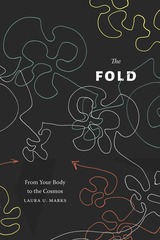 The Fold: From Your Body to the Cosmos
Laura U. Marks
Duke University Press, 2024 In The Fold, Laura U. Marks offers a practical philosophy and aesthetic theory for living in an infinitely connected cosmos. Drawing on the theories of Leibniz, Glissant, Deleuze, and theoretical physicist David Bohm—who each conceive of the universe as being folded in on itself in myriad ways—Marks contends that the folds of the cosmos are entirely constituted of living beings. From humans to sandwiches to software to stars, every entity is alive and occupies its own private enclosure inside the cosmos. Through analyses of fiction, documentary and experimental movies, interactive media, and everyday situations, Marks outlines embodied methods for detecting and augmenting the connections between each living entity and the cosmos. She shows that by affectively mediating with the ever-shifting folded relations within the cosmos, it is possible to build “soul-assemblages” that challenge information capitalism, colonialism, and other power structures and develop new connections with the infinite. With this guide for living within the enfolded and unfolding cosmos, Marks teaches readers to richly apprehend the world and to trace the processes of becoming that are immanent within the fold.
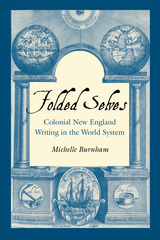 Folded Selves: Colonial New England Writing in the World System
Michelle Burnham
Dartmouth College Press, 2014 Folded Selves radically refigures traditional portraits of seventeenth-century New England literature and culture by situating colonial writing within the spatial, transnational, and economic contexts that characterized the early-modern “world system” theorized by Immanuel Wallerstein and others. Michelle Burnham rethinks American literary history and the politics of colonial dissent, and her book breaks new ground in making the economic relations of investment, credit, and trade central to this new framework for early American literary and cultural study. Transcontinental colonialism and mercantile capitalism underwrote not just the emerging world system but New World writing—suggesting that early modern literary aesthetics and the early modern economy helped to sponsor each other. Burnham locates in New England’s literature of dissent—from Ma-re Mount to the Salem witchcraft trials – a persistent use of economic language, as well as competing economies of style. The brilliance of Burnham’s study is that it exposes the transoceanic material and commercial concerns of colonial America’s literature and culture of dissent.
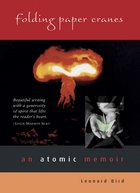 Folding Paper Cranes: An Atomic Memoir
Leonard Bird
University of Utah Press, 2005 Between 1951 and 1962 the Atomic Energy Commission triggered some one hundred atmospheric detonations of nuclear weapons at the Nevada Test Site. U.S. military troops who participated in these tests were exposed to high doses of radiation. Among them was a young Marine named Leonard Bird. In Folding Paper Cranes Bird juxtaposes his devastating experience of those atomic exercises with three visits over his lifetime—one in the 1950s before his Nevada assignment, one in 1981, and one in the early 1990s—to the International Park for World Peace in Hiroshima.
Among the monuments to tragedy and hope in Hiroshima’s Peace Park stands a statue of Sadako Sasaki holding a crane in her outstretched arms. Sadako was two years old when the atomic bomb was dropped on her city; she was diagnosed with leukemia ten years later. According to popular Japanese belief, folding a thousand paper cranes brings good fortune. Sadako spent the last months of her young life folding hundreds of paper cranes. She folded 644 before she died.
As he journeys from the Geiger counters, radioactive dust, and mushroom clouds of the Nevada desert to the bronze and ivory memorials for the dead in Japan, Bird—himself a survivor of radiation-induced cancer—seeks to make peace with his past and with a future shadowed by nuclear proliferation. His paper cranes are the poetry and prose of this haunting memoir.
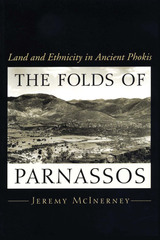 The Folds of Parnassos: Land and Ethnicity in Ancient Phokis
By Jeremy McInerney
University of Texas Press, 2000 Independent city-states (poleis) such as Athens have been viewed traditionally as the most advanced stage of state formation in ancient Greece. By contrast, this pioneering book argues that for some Greeks the ethnos, a regionally based ethnic group, and the koinon, or regional confederation, were equally valid units of social and political life and that these ethnic identities were astonishingly durable. Jeremy McInerney sets his study in Phokis, a region in central Greece dominated by Mount Parnassos that shared a border with the panhellenic sanctuary at Delphi. He explores how ecological conditions, land use, and external factors such as invasion contributed to the formation of a Phokian territory. Then, drawing on numerous interdisciplinary sources, he traces the history of the region from the Archaic age down to the Roman period. McInerney shows how shared myths, hero cults, and military alliances created an ethnic identity that held the region together over centuries, despite repeated invasions. He concludes that the Phokian koinon survived because it was founded ultimately on the tenacity of the smaller communities of Greece.
 The Folger Library Edition of The Works of Richard Hooker
Richard Hooker
Harvard University Press, 1977 The writings of Richard Hooker are of central interest to those studying English Renaissance thought and literature. In this, the third volume of a much-needed critical edition of the Works of Richard Hooker, are the posthumous books of the Laws of Ecclesiastical Polity. Hooker planned the Laws in eight books, but he died shortly after publication of Book Five. Books Six, Seven, and Eight, which contain his analysis of jurisdiction, episcopacy, and the royal supremacy, are here transcribed from versions that have the most authority. The volume also includes Hooker’s autograph notes toward those texts (brought to light by P. G. Stanwood in the course of his research) and the contemporary notes by George Cranmer and Edwin Sandys on a lost draft of Book Six. Mr. Stanwood’s introduction lays to rest all doubts about the authenticity of the last three books as we have them, doubts current since publication of Walton’s Life of Hooker in 1662.
This edition, sponsored by the Folger Library, is providing authoritative texts to serve as a basis for the scholarly reappraisal of Richard Hooker’s writings that is presently underway.
 The Folger Library Edition of The Works of Richard Hooker
Richard Hooker
Harvard University Press, 1977 Richard Hooker is the first major voice of Anglican theology, and his defense of the Elizabethan Church against the attacks of the Puritans set the prevailing tone of Anglicanism for centuries to follow. Through his eloquent treatise on ecclesiastical law the medieval political thought of Thomas Aquinas became a part of the English political heritage, to be used by such writers as Locke, Burke, and Coleridge. The Laws of Ecclesiastical Polity is also a primary statement in English of a theory of natural law. Finally, we must turn to Hooker if we are to understand the intellectual background of the Renaissance, for he luminously sets forth the ethical, political, and religious assumptions of his age.
The Folger Library has answered a long-felt need in sponsoring this critical, old-spelling edition of Hooker’s Works, prepared with all the expertise modern scholarship can bring to bear. Six scholars share the editorial responsibility, consulting their eighteen-member Board of Advisers as necessary. The texts for the edition are based on fresh transcriptions of the earliest and most authoritative documents, in many cases manuscripts written or corrected by Hooker himself or contemporary transcripts of these. The critical apparatus for each text records substantive variants among the authoritative documents as well as departures in accidentals from the copy text. The aim of the apparatus is to enable the interested reader to reconstruct the authority underlying the text.
The Preface and Books I–V of the Laws of Ecclesiastical Polity, Volumes I and II of this edition, represent all of Hooker’s work published in his lifetime. These volumes were prepared by Georges Edelen, Professor of English at Indiana University, and W. Speed Hill, Associate Professor of English, Herbert H. Lehman College, City University of New York.
 The Folger Library Edition of The Works of Richard Hooker
Richard Hooker
Harvard University Press, 1977 Although Richard Hooker (1554–1600) is now known principally as the author of the Laws of Ecclesiastical Polity, in his lifetime the Tractates and Sermons brought him greater notoriety. Hooker’s views on justification, the perseverance of faith, and the relationship of the Church of Rome to the reformed Church of England were widely reported, and texts of the tracts were extensively circulated in manuscript.
Thanks to the meticulous editing of Laetitia Yeandle, Curator of Manuscripts at the Folger Shakespeare Library, the contemporary impact of these debates can now be appreciated for the first time. These tracts provide a unique perspective on the turbulent world of late Elizabethan theology. In addition, they lay the doctrinal foundations of the Laws of Ecclesiastical Polity itself and—with the excellent commentary of Egil Grislis, Professor of Theology at the University of Manitoba in Winnipeg, enable us to trace the intellectual formation of sixteenth-century England’s most innovative and provocative theologian.
The volume includes a newly discovered letter; three newly attributed sermon fragments; and analysis by P. F. Forte of Hooker’s distinctive preaching style.
 The Folger Library Edition of The Works of Richard Hooker
Richard Hooker
Harvard University Press We turn to Richard Hooker to understand the intellectual background of the Renaissance. He sets forth in his writing the ethical, political, and religious assumptions of his age. This magnificent old-spelling edition of Hooker’s works has long been needed, and is being greeted with universal admiration.
Volume Four presents the text of the first and only major attack on the Laws of Ecclesiastical Polity—namely, A Christian Letter, 1599—with Hooker’s marginal notes made on his own copy of the Letter; and the more extensive essays which he left in manuscript, written in preparation for a published reply. The importance of these notes and essays lies in their expansion of some of the more controversial points made in the Laws, and in the light they shed on Hooker, his personality, method, and sources.
John Booty’s Introduction and substantial commentary place Hooker’s arguments firmly in their historical and theological contexts.
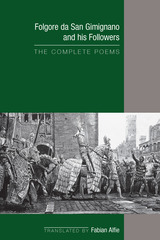 Folgore da San Gimignano and his Followers: The Complete Poems
Fabian Alfie
Arizona Center for Medieval and Renaissance Studies, 2019 This translation brings the complete works of three minor but important Italian poets — Dante’s contemporaries at the turn of the 14th century — to English speakers for the very first time. Taken together, the three authors sketch an idealized portrait of courtly life juxtaposed to the gritty, politically fractured world of northern Italy’s mercantile urban centers in which they lived. One poet, Folgore di San Gimignano, idealizes court life during the period; the second, Cenne da la Chitarra, looks at it more realistically and parodies Folgore; and the third, Pietro dei Faitinelli, takes inspiration from Folgore’s political writings and focuses on the politics of the times. The juxtaposition of the three poets in this work is effective and arguably shows them to be a poetic school. Tournaments, dinner tables, and public squares spring to life through vivid, material details, which should catch the interest of cultural historians and literary scholars alike. This translation is especially deft at reproducing the rich variety of culinary and sartorial vocabulary offered by the poets, and the translations of Pietro dei Faitinelli are especially well-executed.
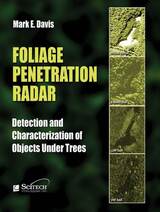 Foliage Penetration Radar: Detection and characterisation of objects under trees
Mark E. Davis
The Institution of Engineering and Technology, 2011 This book covers all aspects of foliage penetration (FOPEN) radar, concentrating on both airborne military radar systems as well as earth resource mapping radars. It is the first concise and thorough treatment of FOPEN, covering the results of a decade-long investment by DARPA in characterizing foliage and earth surface with ultrawideband UHF and VHF synthetic aperture radar (SAR). Comparisons of the technologies for radar design and signal processing are presented, as are specific design approaches for transmitter design for operation in a dense radio frequency spectrum. Adaptive processing to remove the effects of radio and television signals from the system are also covered. In 10 years, FOPEN systems will find use in crop monitoring, land mine remediation, and creating digital maps under trees. This book will be the foundation for continued research for years to come both for radar and systems engineers in defense and earth resources companies. Government researchers, program managers and planners who have an interest in the unique capabilities of this radar technology, as well as university staff and faculty teaching radar and signal processing will find this book a critical part of their learning for years to come.
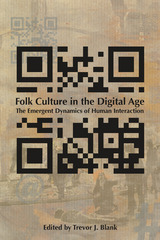 Folk Culture in the Digital Age: The Emergent Dynamics of Human Interaction
Trevor J. Blank
Utah State University Press, 2012 Smart phones, tablets, Facebook, Twitter, and wireless Internet connections are the latest technologies to have become entrenched in our culture. Although traditionalists have argued that computer-mediated communication and cyberspace are incongruent with the study of folklore, Trevor J. Blank sees the digital world as fully capable of generating, transmitting, performing, and archiving vernacular culture. Folklore in the Digital Age documents the emergent cultural scenes and expressive folkloric communications made possible by digital “new media” technologies.
New media is changing the ways in which people learn, share, participate, and engage with others as they adopt technologies to complement and supplement traditional means of vernacular expression. But behavioral and structural overlap in many folkloric forms exists between on- and offline, and emerging patterns in digital rhetoric mimic the dynamics of previously documented folkloric forms, invoking familiar social or behavior customs, linguistic inflections, and symbolic gestures.
Folklore in the Digital Age provides insights and perspectives on the myriad ways in which folk culture manifests in the digital age and contributes to our greater understanding of vernacular expression in our ever-changing technological world.
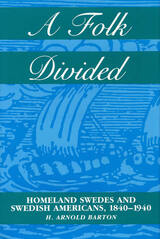 A Folk Divided: Homeland Swedes and Swedish Americans, 1840-1940
H. Arnold Barton
Southern Illinois University Press, 1994
In this unique longitudinal study of how a divided people relate to one another, H. Arnold Barton outlines dilemmas created by the great migration of Swedes to the United States from 1840 through 1940 and the complex love-hate relationship that resulted between those who stayed and those who left. During that hundred-year period, one Swede out of five voluntarily immigrated to the United States, and four-fifths of those immigrants remained in their new country. This study seeks to explore the far-reaching implications of this mass migration for both Swedes and Swedish Americans.
The Swedes were a literate, historically aware people, and the 1.2 million Swedes who immigrated to the United States offer a particularly well-documented and illuminating case study. Barton has skillfully woven into the text translations of little known published and unpublished Swedish sources from both sides of the Atlantic, to embody—in haunting human terms—both what was gained and what was lost through emigration.
Past studies have traditionally shown ethnic mobilization to be a defensive reaction against the exclusive nativism of resident Americans. Barton convincingly demonstrates, however, that the creation of a distinctive Swedish-American identity was at least equally an expression of the immigrants’ need to justify leaving their homeland to their former compatriots and to themselves by asserting a rightful and unique place within the Swedish national community. He concludes that the relationship between Swedes and Swedish Americans was essentially similar to that experienced by other peoples divided by migration, and that the long debate over the United States and emigration at its deepest level reveals both hopes and fears most conspicuously symbolized by America and "Americanization" in an increasingly integrated world undergoing the relentless advance of modernization.
Folk Groups And Folklore Genres: An Introduction
edited by Elliott Oring
Utah State University Press, 1986 Oring's introductory folklore text consists of a series of essays by leading scholars that give the student a solid sense of major folklore topics and interpretive techniques. This book has met the need for good instructional material for decades- covering a period of tremendous growth in folklore programs and introductory courses in colleges and universities around the world.
Folk Groups And Folklore Genres Reader: A Reader
edited by Elliott Oring
Utah State University Press, 1989 Compiled to accompany the best-selling textbook, Folk Groups and Folklore Genres: An Introduction, the selections in this anthology extend the discussion in diverse directions, alert the reader to new problems, and introduce alternative perspectives. The essays include folklore classics and recent works, and are organized in sections that correspond to the chapter headings in An Introduction.
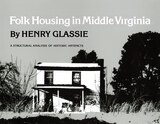 Folk Housing in Middle Virginia: A Structural Analysis of Historic Artifacts
Henry Glassie
University of Tennessee Press, 1976 In this fascinating analysis of eighteenth-century vernacular houses of Middle Virginia, Henry Glassie presents a revolutionary and carefully constructed methodology for looking at houses and interpreting from them the people who built and used them. Glassie believes that all relevant historical evidence—unwritten as well as written—must be taken into account before historical truth can be found. He is convinced that any study of man’s past must make use of nonverbal and verbal evidence, since written history—the story of man as recorded by the intellectual elite—does not tell us much about the everyday life, thoughts, and fears of the ordinary people of the past. Such people have always been in the majority, however, and a way has to be found to include them in any valid history. In Folk Housing in Middle Virginia, Glassie admirably sets forth such a way.
The people who lived in Middle Virginia in the eighteenth century are almost unknown to history because so little has been written about them. After Glassie selected the area—roughly Goochland and Louisa counties—for study, he selected a representative part of the countryside, recorded all the older houses there, developed a transformational grammar of traditional house designs, and examined the area’s architectural stability and change.
Comparing the houses with written accounts of the period, he found that the houses became more formal and less related to their environment at the same time as the areas established political, economic, and religious institutions were disintegrating. It is as though the builders of the houses were deliberately trying to impose order on the surrounding chaotic world. Previous orthodox historical interpretations of the period have failed to note this. Glassie has provided new insights into the intellectual and social currents of the period, and has rescued a heretofore little-known people from historiographical oblivion. Combining a fresh, perceptive approach with a broad interdisciplinary body of knowledge, Glassie has made an invaluable breakthrough in showing the way to understand the people of history who have left their material things as their only legacy.
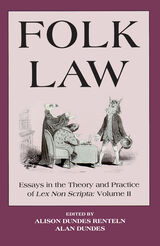 Folk Law: Essays in the Theory and Practice of Lex Non Scripta
Alison Dundes Renteln
University of Wisconsin Press, 1995 In every culture there exists unwritten law—obligations and prohibitions that are understood and passed on, and transgressions that are punished. Folk Law, a comprehensive two-volume collection of essays, examines this meeting place of folklore and jurisprudence. The contributors explore the historical significance and implications of folk law, its continuing influence around the globe, and the conflicts that arise when folk law diverges from official law.
The collection begins by defining various forms of “folk law,” drawing on examples from many cultures. The second section provides historical profiles of pioneering figures in the study of folk law. Following sections examine field research techniques used to identify folk laws; aspects of folk law within the realm of rituals, songs, and other forms of expressive culture; instances where folk law comes into conflict with national law, and the role of folk law in the international arena. The volumes also include description and analysis of two approaches to folk law—the rule approach, in which scholars dissect the codes that underlie folk law, and the case approach, in which researchers examine specific cases involving folk law.
Valuable for students and scholars of law, folklore, or anthropology, this extensive casebook marks a rare interdisciplinary approach to two important areas of research.
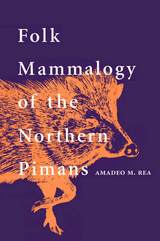 Folk Mammalogy of the Northern Pimans
Amadeo M. Rea
University of Arizona Press, 1998 Knowledge held about animals by Pima-speaking Native Americans of Arizona and northwest Mexico is intimately entwined with their way of life—a way that is fading from memory as beavers and wolves vanish also from the Southwest. Ethnobiologist Amadeo Rea has conducted extensive fieldwork among the Northern Pimans and here shares what these people know about mammals and how mammals affect their lives.
Rea describes the relationship of the River Pima, Tohono O'odham (Papago), Pima Bajo, and Mountain Pima to the furred creatures of their environment: how they are named and classified, hunted, prepared for consumption, and incorporated into myth. He also identifies associations between mammals and Piman notions of illness by establishing correlations between the geographical distribution of mammals and ideas regarding which animals do or do not cause staying sickness. This information reveals how historical and ecological factors can directly influence the belief systems of a people. At the heart of the book are detailed species accounts that relate Piman knowledge of the bats, rabbits, rodents, carnivores, and hoofed mammals in their world, encompassing creatures ranging from deer mouse to mule deer, cottontail to cougar.
Rea has been careful to emphasize folk knowledge in these accounts by letting the Pimans tell their own stories about mammals, as related in transcribed conversations. This wide-reaching study encompasses an area from the Rio Yaqui to the Gila River and the Gulf of California to the Sierra Madre Occidental and incorporates knowledge that goes back three centuries. Folk Mammalogy of the Northern Pimans preserves that knowledge for scholars and Pimans alike and invites all interested readers to see natural history through another people's eyes.
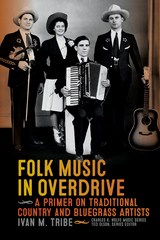 Folk Music in Overdrive: A Primer on Traditional Country and Bluegrass Artists
Ivan Tribe
University of Tennessee Press, 2018 Folk Music in Overdrive is a reader of music scholar Ivan Tribe’s more significant published articles, revised and updated from their original publication in magazines such as Bluegrass Unlimited, Precious Memories: Journal of Gospel Music, Old Time Music, and Goldenseal: West Virginia Traditional Life, as well as two never-before published essays. Tribe delivers essays on well-known solo artists such as Charlie Monroe and Mac Odell; country music duos like husband and wife team Joe and Stacy Isaacs or the brotherly duos of The Bailes, Callahan, and Goins brothers; famous and lesser-known sidemen such as fiddlers Tater Tate and Natchee the Indian, or dobro player Speedy Krise; and musical groups such as the enigmatic Coon Creek Girls. This collection represents an important contribution to music studies and spans bluegrass as a genre from its beginnings to the present.
Originally built around interviews with these figures and their close associates, these thirty-nine revised articles yield new information from a variety of sources, much from Bear Family boxed sets as well as counsel, advice, and knowledge shared by other music scholars. Tribe's profiles cover musicians and bands that were bluegrass pickers and singers themselves, as well as some musicians who are often characterized as traditional country musicians. Some led bands for all or part of their careers, while others ranked as noted sidemen or band members. Others composed songs that have become popular, indeed often standard, fare in the bluegrass field.
As part of the Charles K. Wolfe Music Series, formed in honor of the late music scholar, Folk Music in Overdrive succinctly advances traditional music scholarship and Wolfe’s own love of early country and bluegrass.
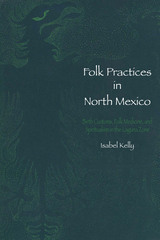 Folk Practices in North Mexico: Birth Customs, Folk Medicine, and Spiritualism in the Laguna Zone
By Isabel Kelly
University of Texas Press, 1965 The Mexican folkways described in this monograph, of scientific interest to anthropologists, will fascinate laypeople as well. Isabel Kelly collected these notes in the 1950s, as a diversion when official field work was not feasible, in the vicinity of Torreón and particularly in the nearby village of El Cuije, in northern Mexico. She recounts folk customs and habits, focusing on beliefs and practices related to health and healing and on notions concerning magic. These form, Kelly believes, a core of folk culture which has survived tenaciously in the rural areas and on the outskirts of the cities, among mestizo families of scant education and limited economic resources. These people are well acquainted with simple, matter-of-fact illnesses which result from natural causes and which respond to treatment by herbal and other home remedies or by modern medicines. But they also recognize the evil eye and the emotional upset known as “fright.” They are thoroughly familiar with the ever-present danger of ailments which are not “natural” and God-sent, but which are deliberately inflicted by an enemy, through the artifice of a sorcerer or a spiritualist. Such “instigated” illnesses may take any form, from a cold in the head to a false pregnancy. If a person suspects that poor health results from such malevolence, he or she spurns Western medicine and looks instead to the witch or to the spiritualist as the only hope of a cure. El Cuije pays an annual quota from community funds to make available modern health services provided by the government. But community funds are similarly drawn upon to provide “medical” attention for those who repair to the sorcerers. Once a week the village truck takes all presumed witchcraft victims to a nearby town, where they receive clinical treatment from professional sorcerers. Kelly sees little that is genuinely indigenous in the beliefs and practices described; many of them demonstrably result from infiltration from the Old World in the years following the Spanish Conquest. She considers spiritualistic curing—important in northern Mexico and many other parts of Latin America—in some detail, but the specific outlines of its history in northern Mexico still awaited clarification at the time of her research.
Folk Religion in Japan: Continuity and Change
Ichiro Hori
University of Chicago Press, 1968 Ichiro Hori's is the first book in Western literature to portray how Shinto, Buddhist, Confucian, and Taoist elements, as well as all manner of archaic magical beliefs and practices, are fused on the folk level.
Folk religion, transmitted by the common people from generation to generation, has greatly conditioned the political, economic, and cultural development of Japan and continues to satisfy the emotional and religious needs of the people. Hori examines the organic relationship between the Japanese social structure—the family kinship system, village and community organizations—and folk religion. A glossary with Japanese characters is included in the index.
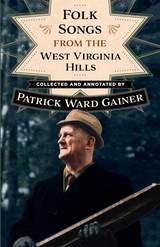 Folk Songs from the West Virginia Hills
PATRICK W. GAINER
West Virginia University Press, 2017 First published in 1975 and long out of print, Folk Songs from the West Virginia Hills is a major work of folklore poised to reach a new generation of readers. Drawing upon Patrick Ward Gainer’s extensive ethnographic fieldwork around West Virginia, it contains dozens of significant folk songs, including not only the internationally famous “Child Ballads,” but such distinctively West Virginian songs as “The West Virginia Farmer” and “John Hardy,” among others.
Folk Songs from the West Virginia Hills stands out as a book with multiple audiences. As a musical text, it offers comparatively easy access to a rich variety of folk songs that could provide a new repertoire for Appalachian singers. As an ethnographic text, it has the potential to reintroduce significant data about the musical lives of many West Virginians into conversations around Appalachian music—discourses that are being radically reshaped by scholars working in folklore, ethnomusicology, and Appalachian studies. As a historical document, it gives readers a glimpse into the research methods commonly practiced by mid-twentieth-century folklorists. And when read in conjunction with John Harrington Cox’s Folk Songs of the South (also available from WVU Press), it sheds important light on the significant role that West Virginia University has played in documenting the state’s vernacular traditions.
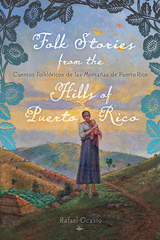 Folk Stories from the Hills of Puerto Rico / Cuentos folklóricos de las montañas de Puerto Rico
Rafael Ocasio
Rutgers University Press, 2021 This exciting new anthology gathers together Puerto Rican folktales that were passed down orally for generations before finally being transcribed beginning in 1914 by the team of famous anthropologist Franz Boas. These charming tales give readers a window into the imaginations and aspirations of Puerto Rico’s peasants, the Jíbaro. Some stories provide a distinctive Caribbean twist on classic tales including “Snow White” and “Cinderella.” Others fictionalize the lives of local historical figures, such as infamous pirate Roberto Cofresí, rendered here as a Robin Hood figure who subverts the colonial social order. The collection also introduces such beloved local characters as Cucarachita Martina, the kind cockroach who falls in love with Ratoncito Pérez, her devoted mouse husband who brings her delicious food. Including a fresh English translation of each folktale as well as the original Spanish version, the collection also contains an introduction from literary historian Rafael Ocasio that highlights the historical importance of these tales and the Jíbaro cultural values they impart. These vibrant, funny, and poignant stories will give readers unique insights into Puerto Rico’s rich cultural heritage. Esta nueva y emocionante antología reúne cuentos populares puertorriqueños que fueron transmitidos oralmente durante generaciones antes de ser finalmente transcritos comenzando en 1914 por el equipo del famoso antropólogo Franz Boas. Estos encantadores cuentos ofrecen a los lectores un vistazo a la imaginación y las aspiraciones de los jíbaros, los campesinos de Puerto Rico. Algunas historias brindan un distintivo toque caribeño a cuentos clásicos como "Blanca Nieves" y "Cenicienta". Otros ficcionalizan la vida de personajes históricos locales, como el famoso pirata Roberto Cofresí, representado como una figura al estilo de Robin Hood, quien subvierte el orden social colonial. La colección también presenta personajes locales tan queridos como Cucarachita Martina, la amable cucaracha que se enamora de Ratoncito Pérez, su devoto esposo ratón que le trae deliciosa comida. Incluyendo una nueva traducción al inglés de estos cuentos populares, así como las versiones originales en español, la colección también contiene una introducción del historiador literario Rafael Ocasio, quien destaca la importancia histórica de estos cuentos y los valores culturales del jíbaro que éstos imparten en los relatos. Estas historias vibrantes, divertidas y conmovedoras brindarán a los lectores una visión única de la rica herencia cultural de Puerto Rico. Introducción en español (https://d3tto5i5w9ogdd.cloudfront.net/wp-content/uploads/2021/02/03154419/Ocasio_Cuentos_Intro_Espan%CC%83ol.pdf) Rafael Ocasio will discussing his book, 'Folk Stories from the Hills of Puerto Rico / Cuentos folklóricos de las montañas de Puerto Rico' at Biblioteca Juvenil de Mayagüez in Puerto Rico (https://youtu.be/o6Tub094EoI)
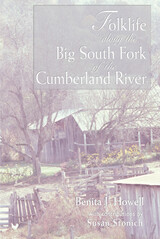 Folklife along the Big South Fork of the Cumberland River: Of The Cumberland River
Benita J. Howell
University of Tennessee Press, 2003 Folklife along the Big South Fork of the Cumberland River records the history, lore, and lifeways of people who once occupied the land that became the Big South Fork national River and Recreation Area. The National park Service sponsored the research in1979, just as former residents were being displaced from their homes . Through oral history interviews and historical records, ethnographic study, old-time-traditions, this book recounts what life was like in the Big South Fork during the first half of the twentieth-century, when the region’s agrarian economy was transformed by the timber and coal industries. Howell has added a new introduction and postscript.
Visitors to the Big South Fork National River and Recreation Area will find this a useful introduction t the area’s rich history and culture, while genealogists will discover a wealth of information about the region’s historic settlements. Social scientists will recover valuable insights into the cultural dimensions of environmental impact assessment, along with a counter to conventional wisdom that tends to explain Appalachian culture in terms of either psychocultural or environmental determinism.
The Author: Benita J. Howell is professor of anthropology and chair of the America Studies Program at the University of Tennessee, Knoxville. She is the editor of Culture, Environment, and conservation in the Appalachian South and author of book chapters on cultural heritage conservation and articles that have appeared in the Journal of East Tennessee History and the Journal of Appalachian Studies.
Folklore and Culture on the Texas-Mexican Border
By Américo Paredes
University of Texas Press, 1995 In an illustrious career spanning over forty years, Américo Paredes has often set the standard for scholarship and writing in folklore and Chicano studies. In folklore, he has been in the vanguard of important theoretical and methodological movements. In Chicano studies, he stands as one of the premier exponents. Paredes's books are widely known and easily available, but his scholarly articles are not so familiar or accessible. To bring them to a wider readership, Richard Bauman has selected eleven essays that eloquently represent the range and excellence of Paredes's work. The hardcover edition of Folklore and Culture was published in 1993. This paperback edition will make the book more accessible to the general public and more practical for classroom use.
Folklore and Folklife: An Introduction
Richard M. Dorson
University of Chicago Press, 1982 "This introduction to the study of folklore and folklife contains an inspiring and spirited mixture of essays, theoretical contributions, practical instructions, and pure encyclopedia articles. It is a very well put together book, written by eighteen researchers who have something to say. One can see here that it is competent educators who have come forward and are narrating. . . . All in all it is a very use-oriented handbook with attractive typography and layout."—Iorn Pio, Journal of American Folklore
The Folklore and Folklife of New Jersey
David Steven Cohen
Rutgers University Press, 1983 An examination of the traditional culture and customs of New Jersey includes discussions of crafts, jokes, names, songs, cooking, legends, and games.
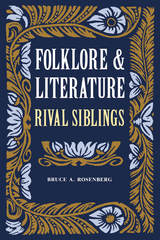 Folklore and Literature: Rival Siblings
Bruce Rosenberg
University of Tennessee Press, 1991 Only a few decades ago, American folklore research focused primarily on narrative folklore with obvious literary connections, such as the ballad and the folktale. In the past twenty years, however, folklore studies have veered sharply away from literature and even from text-based products to focus largely on oral folkloric process. In this thoughtful work, a distinguished scholar describes key ways in which theories and methodologies developed in such oral folklore studies have benefited literary criticism and analysis.
Vladimir Propp devised a theory of structuralism to examine folktales. Popularized versions of Propp's theory were used in literary theory for nearly twenty years. Parry and Lord, using folkloric techniques to study Yugoslavian folksingers as a means of learning how Homeric epics were composed, established principles since employed by thousands of literary critics. Folk narratives persist in contemporary life and literature in such forms as "urban legends." Knowledge of folk custom, ritual, and belief can enhance aesthetic understanding. And analyzing lineality and simultaneity in literature and folklore yields fruitful insights.
In addition to summarizing extant ideas and studies, Bruce Rosenberg offers surprising new interpretations and discoveries that expand the boundaries of both folklore and literature. Illustrating his contentions with examples from widely varying periods and cultures, the author affirms the unique potential of interdisciplinary inquiry.
Bruce A. Rosenberg was professor of English and American civilization at Brown University.
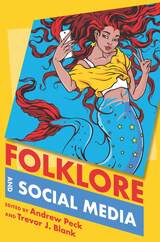 Folklore and Social Media
Andrew Peck
Utah State University Press, 2020 Ten years after the publication of the foundational edited collection Folklore and the Internet, Andrew Peck and Trevor J. Blank bring an essential update of scholarship to the study of digital folklore, Folklore and Social Media. A unique virtual, hybridized platform for human communication, social media is more dynamic, ubiquitous, and nuanced than the internet ever was by itself, and the majority of Americans use it to access and interact with digital source materials in more advanced and robust ways.
This book features twelve chapters ranging in topics from legend transmission and fake news to case studies of memes, joke cycles, and Twitter hashtag campaigns and offers fresh insights on digital heritage and web archiving. The editors and contributors take both the “digital” and “folklore” elements seriously because social media fundamentally changes folk practices in new, though often invisible, ways. Social media platforms encourage hybrid performances that appear informal and ordinary while also offering significant space to obfuscate backstage behaviors through editing and retakes. The result is that expression online becomes increasingly reminiscent of traditional forms of face-to-face interaction, while also hiding its fundamental differences.
Folklore and Social Media demonstrates various ways to refine methods and analyses in order to develop a better understanding of the informal and traditional dynamics that define an era of folklore and social media. It is an invaluable addition to the literature on digital folklore scholarship that will be of interest to students and scholars alike.
Contributors:
Sheila Bock, Peter M. Broadwell, Bill Ellis, Jeana Jorgensen, Liisi Laineste, John Laudun, Linda J. Lee, Lynne S. McNeill, Ryan M. Milner, Whitney Phillips, Vwani Roychowdhury, Timothy R. Tangherlini, Tok Thompson, Elizabeth Tucker, Kristiana Willsey
Folklore and the Internet: Vernacular Expression in a Digital World
Trevor J. Blank
Utah State University Press, 2009 A pioneering examination of the folkloric qualities of the World Wide Web, e-mail, and related digital media. These stuidies show that folk culture, sustained by a new and evolving vernacular, has been a key, since the Internet's beginnings, to language, practice, and interaction online. Users of many sorts continue to develop the Internet as a significant medium for generating, transmitting, documenting, and preserving folklore.
In a set of new, insightful essays, contributors Trevor J. Blank, Simon J. Bronner, Robert Dobler, Russell Frank, Gregory Hansen, Robert Glenn Howard, Lynne S. McNeill, Elizabeth Tucker, and William Westerman showcase ways the Internet both shapes and is shaped by folklore
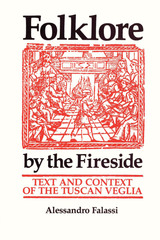 Folklore by the Fireside: Text and Context of the Tuscan Veglia
By Alessandro Falassi
University of Texas Press, 1980 For centuries, social life in rural Tuscany has centered around the veglia, an evening gathering of family and friends at the hearth. Folklore by the Fireside is a thorough and insightful study of this custom—from the tales, riddles, lullabies, and folk prayers performed as the small children are put to bed to the courtship songs and dances later in the evening to the anti-veglia male gossip, card games, and protest songs originating in the tavern. Alessandro Falassi skillfully correlates the veglia to the rites of passage and family values of an agrarian society. Although the impact of mass media and other factors has tended to weaken the tradition, even today Tuscan children are taught to behave and adolescents are guided along the conventional path to adulthood, courtship, and marriage through veglia folklore. This is the first work to deal systematically with Tuscan folklore from a semiotic and structural viewpoint and to examine the veglia as a means of handing down traditional values. It is important not only for its careful, detailed description but also for its rigorous methodology and theoretical richness.
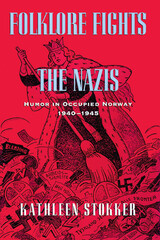 Folklore Fights the Nazis: Humor in Occupied Norway, 1940–1945
Kathleen Stokker
University of Wisconsin Press, 1997 Armed with jokes, puns, and cartoons, Norwegians tried to keep their spirits high and foster the Resistance by poking fun at the occupying Germans during World War II. Despite a 1942 ordinance mandating death for the ridicule of Nazi soldiers, Norwegians attacked the occupying Nazis and their Norwegian collaborators by means of anecdotes, quips, insinuating personal ads, children’s stories, Christmas cards, mock postage stamps, and symbolic clothing.
In relating this dramatic story, Kathleen Stokker draws upon her many interviews with survivors of the Occupation and upon the archives of the Norwegian Resistance Museum and the University of Oslo. Central to the book are four “joke notebooks” kept by women ranging in age from eleven to thirty, who found sufficient meaning in this humor to risk recording and preserving it. Stokker also cites details from wartime diaries of three other women from East, West, and North Norway. Placing the joking in historical, cultural, and psychological context, Stokker demonstrates how this seemingly frivolous humor in fact contributed to the development of a resistance mentality among an initially confused, paralyzed, and dispirited population, stunned by the German invasion of their neutral country.
For this paperback edition, Stokker has added a new preface offering a comparative view of resistance through humor in neighboring Denmark.
Folklore from the Schoharie Hills, New York
Emelyn Elizabeth Gardner
University of Michigan Press, 1937 The scholarly yet human spirit in which Folklore from the Schoharie Hills New York is written, the years of affectionate labor which went into its preparation, and the elaborate notes and documentation entitle this book by Emelyn E. Gardner's to a prominent and permanent place among the treasuries of American folklore.
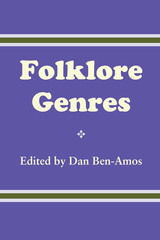 Folklore Genres
Edited by Dan Ben-Amos
University of Texas Press, 1976 The essays in Folklore Genres represent development in folklore genre studies, diverging into literary, ethnographic, and taxonomic questions. The study as a whole is concerned with the concept of genre and with the history of genre theory. A selective bibliography provides a guide to analytical and theoretical works on the topic. The literary-oriented articles conceive of folklore forms, not as the antecedents of literary genres, but as complex, symbolically rich expressions. The ethnographically oriented articles, as well as those dealing with classification problems, reveal dimensions of folklore that are often obscured from the student reading the folklore text alone. It has long been known that the written page is but a pale reproduction of the spoken word, that a tale hardly reflects the telling. The essays in this collection lead to an understanding of the forms of oral literature as multidimensional symbols of communication and to an understanding of folklore genres as systematically related conceptual categories in culture. What kinship terms are to social structure, genre terms are to folklore. Since genres constitute recognized modes of folklore speaking, their terminology and taxonomy can play a major role in the study of culture and society. The essays were originally published in Genre (1969–1971); introduction, bibliography, and index have been added to this edition.
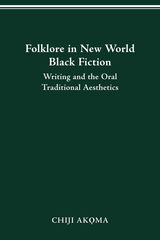 Folklore in New World Black Fiction: Writing and the Oral Traditional Aesthetics
Chiji Akoma
Ohio State University Press, 2007 For a while, tracing African roots in the artistic creations of blacks in the New World tended to generate much attention as if to suggest that the New World does not have profound impact on their creative spirit. In addition, few studies have tried to construct an interpretive model through which an array of works by New World writers could be meaningfully explored on the basis of their African Diasporic identity. In Folklore in New World Black Fiction, Chiji Akọma offers an interpretive model for the reading of the African New World novel focusing on folklore, not as an ingredient, but as the basis for the narratives. The works examined do not contain folklore materials; they are folklore, constituted by the intersections of African oral narrative aesthetics, New World sensibility, and the written tradition. Specifically Akọma looks at four African Caribbean and African American novelists, Roy A.K. Heath, Wilson Harris, Toni Morrison, and Jean Toomer. The book seeks to expand the understanding of the forms of folklore as it pertains to black texts. For one, it broadens the dimensions of folklore by looking beyond the oral world of the “simple folk” to the kinds of narrative sophistication associated with writing; it also asserts the importance of performance art in folklore analysis. The study demonstrates the durability of the black aesthetic over artistic forms.
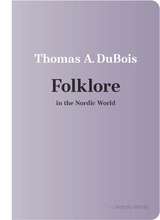 Folklore in the Nordic World
Thomas A. DuBois
University of Wisconsin Press, 2024 In seven concise chapters that document both the history of Nordic folkloristics and the ongoing vivacity of Nordic folklore today, Thomas A. DuBois demonstrates how the informal, traditional elements of a culture or subculture are an integral and vibrant part of the Nordic world.
From methods of preparing suovabiergu (smoked reindeer meat) in Sápmi, to celebrating graduation by “running the falls” at Uppsala University in Sweden, to massive folk music festivals in Finland and tales of supernatural visitors bestowing baby names in Iceland, folklore offers unique insights into the everyday life of Nordic society. The study of Nordic folklore began in the nineteenth century, when early folklorists imagined that the true character of a nation could be found among the tales of the peasantry. Today, the theories, tools, and institutions developed by influential folklorists in the Nordic region continue to lead the way in documentation, preservation, and analysis of folklore.
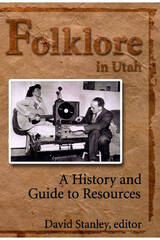 Folklore in Utah: A History and Guide to Resources
David Stanley
Utah State University Press, 2004 Over thirty scholars examine the development of folklore studies through the lens of over one hundred years of significant activity in a state that has provided grist for the mills of many prominent folklorists. In the past the Folklore Society of Utah has examined the work of such scholars in biographical and other essays published in its newsletters. This book incorporates those essays and goes well beyond them to include many other topices, offering a thorough history of folklore studies and a guide to resources for those pursuing research in Utah now and in the future. The essays survey the development and contributions of folklore studies in Utah from 1892 to 2004 but also represent developments in both academic and public-sector folklore throughout the United States. Following a thorough historical introduction, part I profiles the first folklorists working in the state, including Hector Lee, Thomas Cheney, Austin and Alta Fife, Wayland Hand, and Lester Hubbard. Part II looks at the careers of prominent Utah folklorists Jan Harold Brunvand, Barre Toelken, and William B. Wilson, as well as the works of the next, current generation of folklorists. Part III covers studies in major folklore genres, with essays on the study of material culture, vernacular architecture, and Mormon, ethnic, Native American, and Latino folklore. Part IV examines public folklore programs including organizations, conferences, and tourism. Back matter describes academic programs at Utah institutions of higher education, summarizes the holdings of the various folklore archives in the state, and provides a complete cross-indexed bibliography of articles, books, and recordings of Utah folklore.
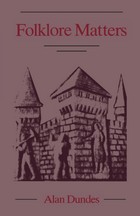 Folklore Matters
Alan Dundes
University of Tennessee Press, 1993 " ... not a large book, but that makes all the more admirable the way the author succeeds in doing justice to so many of the most important subjects in folkloristics. This book is a key work, and should be made compulsory reading in every university in which folkloristics is studied." —Jon Hnefill Aoalsteinsson, Asian Folklore Studies
"With this book Alan Dundes has once again demonstrated what a brilliant essayist he is: learned, thought-provoking and entertaining. He has much inspiration to give to anthropologists, and he is quite indispensable to folklore scholarship." —Bengt af Klintberg, Ethnos
"If there were still a question whether Alan Dundes is America's leading folklorist, then the essays in this volume ... should dispel it once and for all. An internationally acclaimed scholar is at work here, for whom foUclore really matters in all of its varied aspects." —Wolfgang Mieder, University of Vennont
"A maverick folklorist, Alan Dundes challenges his colleagues and readers with erudition and candor. His essays are insightful and entertaining, exploring folklore with an amazing breadth. " —Dan Ben-Amos, University of Pennsylvania
"As always, a reader is dazzled by the range of Dundes erudition. He doesn't just cite things, he digests them."-Gary Alan Fine, University of Minnesota
"For over two decades, he has been a major voice urging folklorists (and historians and literary critics, for that manner) to move beyond mere description to true interpretation of cultural texts in their contexts. These essays continue that message, and they do so with fresh power." —Jay Mechling, University of California, Davis
"These recent essays from the pen of a passionate folklorist include two classics on the history of the field. The Fabrication of 'Fakelore' and The Anthropologist and the Comparative Method in Folklore' are required reading for anyone seriously interested in folklore as a discipline." —Barbara Kirshenblan-Gimblett, Tisch School of the Arts, New York University
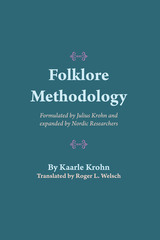 Folklore Methodology: Formulated by Julius Krohn and Expanded by Nordic Researchers
By Kaarle Krohn
University of Texas Press, 1971 Kaarle Krohn's Folklore Methodology was the first systematic attempt to state a method of studying folkloristic materials. For centuries scholars had collected folkloristic texts and had commented on them, but they had not tried to formulate a method of investigating folklore. Folklore Methodology became the handbook for the great Finnish School of folklore research. It provided for its students a guide to the geographical research of traditional materials, a radical departure from the literary scholarship that had dominated folklore studies. Krohn's book explores the causes and modes of folklore diffusion, development, and destruction; it outlines the influences that cause change in folklore; it provides valuable insights into the nature of folklore; and, finally, it develops geographic methods for analyzing, classifying, and reconstructing individual items from the folk repertoire. While many developments have taken place since Krohn first published his guide, important new concepts of folklore research sprang from his efforts. For this reason, Folklore Methodology is mandatory reading for every serious student of folklore.
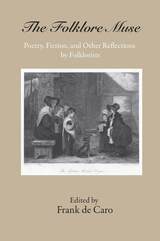 The Folklore Muse: Poetry, Fiction, and Other Reflections by Folklorists
Frank de Caro
Utah State University Press, 2008 Folklore—the inherently creative expression, transmission, and performance of cultural traditions—has always provided a deep well of material for writers, musicians, and artists of all sorts. Folklorists usually employ descriptive and analytical prose, but they, like scholars in other social sciences, have increasingly sought new, creative and reflexive modes of discourse. Many folklorists are also creative writers, some well known as such, and the folk traditions they research often provide shape and substance to their work. This collection of creative writing grounded in folklore and its study brings together some of the best examples of such writing. Contributors to this collection include Teresa Bergen, John Burrison, Norma E. Cantu, Frank de Caro, Holly Everett, Danusha Goska, Neil R. Grobman, Carrie Hertz, Edward Hirsch, Laurel Horton, Rosan Augusta Jordan, Paul Jordan-Smith, Elaine J. Lawless, Cynthia Levee, Jens Lund, Mary Magoulick, Bernard McCarthy, Joanne B. Mulcahy, Kirin Narayan, Ted Olson, Daniel Peretti, Leslie Prosterman, Jo Radner, Susan Stewart, Jeannie Banks Thomas, Jeff Todd Titon, Libby Tucker, Margaret Yocom, and Steve Zeitlin.
Folklore of the Atayal of Formosa and the Mountain Tribes of Luzon
Edward Norbeck
University of Michigan Press, 1950 Edward Norbeck offers a translation of folk tales of the Atayal, a tribe from the island of Taiwan. Norbeck presents the possibility that these tales are related to the mythology of other Indonesian and southeast Asian groups, especially the mountain tribes of Luzon, in the Philippines.
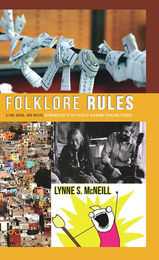 Folklore Rules: A Fun, Quick, and Useful Introduction to the Field of Academic Folklore Studies
S.
Utah State University Press, 2013 Folklore Rules is a brief introduction to the foundational concepts in folklore studies for beginning students. Designed to give essential background on the current study of folklore and some of the basic concepts and questions used when analyzing folklore, this short, coherent, and approachable handbook is divided into five chapters: - What Is Folklore?
- What Do Folklorists Do
- Types of Folklore
- Types of Folk Groups;
- What Do I Do Now?
These chapters guide students toward a working understanding of the field, learn basic terms and techniques, and learn to perceive the knowledge base and discourse frame for materials used in folklore courses. Folklore Rules has become a classic text, serving instructors and students for a variety of courses, including introductory folklore and comparative studies as well as literature, anthropology, and composition classes that include a folklore component.
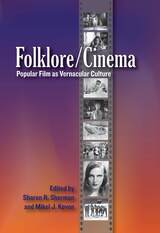 Folklore/Cinema: Popular Film as Vernacular Culture
Sharon R. Sherman and Mikel J. Koven
Utah State University Press, 2007 Interest in the conjunctions of film and folklore is stronger and more diverse than ever. Documentaries on folk life and expression remain a vital genre, but scholars such as Sharon Sherman and Mikel Koven also are exploring how folklore elements appear in, and merge with, popular cinema. They look at how movies, a popular culture medium, can as well be both a medium and type of folklore, playing cultural roles and conveying meanings customarily found in other folkloric forms. They thus use the methodology of folklore studies to analyze films made for commercial distribution. The contributors to this book look at film and folklore convergences, showing how cinema conveys vernacular culture in traditional and popular venues. Folklore/Cinema will be of interest to scholars from many fields---folklore, film studies, popular culture, American studies, history, anthropology, and literature among them---and will help introduce students in various courses to intersections of film and culture.
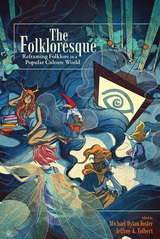 The Folkloresque: Reframing Folklore in a Popular Culture World
Michael Dylan Foster
Utah State University Press, 2015 This volume introduces a new concept to explore the dynamic relationship between folklore and popular culture: the “folkloresque.” With “folkloresque,” Foster and Tolbert name the product created when popular culture appropriates or reinvents folkloric themes, characters, and images. Such manufactured tropes are traditionally considered outside the purview of academic folklore study, but the folkloresque offers a frame for understanding them that is grounded in the discourse and theory of the discipline. Fantasy fiction, comic books, anime, video games, literature, professional storytelling and comedy, and even popular science writing all commonly incorporate elements from tradition or draw on basic folklore genres to inform their structure. Through three primary modes—integration, portrayal, and parody—the collection offers a set of heuristic tools for analysis of how folklore is increasingly used in these commercial and mass-market contexts. The Folkloresque challenges disciplinary and genre boundaries; suggests productive new approaches for interpreting folklore, popular culture, literature, film, and contemporary media; and encourages a rethinking of traditional works and older interpretive paradigms.
Contributors: Trevor J. Blank, Chad Buterbaugh, Bill Ellis, Timothy H. Evans, Michael Dylan Foster, Carlea Holl-Jensen, Greg Kelley, Paul Manning, Daniel Peretti, Gregory Schrempp, Jeffrey A. Tolbert
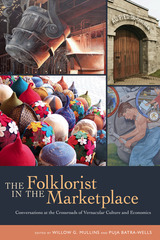 The Folklorist in the Marketplace: Conversations at the Crossroads of Vernacular Culture and Economics
Willow G. Mullins
Utah State University Press, 2019 The Folklorist in the Marketplace brings together voices from multiple disciplines to consider how economics shape—and are shaped by—folk groups and academic disciplines. The authors ask how folk and folklorists can productively comment on the economic structures they inhabit.
As trade, technology, and geopolitics have led to a rapid increase in the global spread of cultural products like media, knowledge, objects, and folkways, there has been a concomitant rise in fear and anxiety about globalization’s dark other side—economic nativism, neocolonialism, cultural appropriation, and loss. Culture has become a resource and a currency in the global marketplace. This movement of people and forms necessitates a new textual consideration of how folklore and economics interweave. In The Folklorist in the Marketplace, contributors explore how the marketplace and folklore have always been integrally linked and what that means at this cultural and economic moment.
Covering a variety of topics, from creel boats to the history of a commune that makes hammocks, The Folklorist in the Marketplace goes far beyond the well-trod examinations of material culture to look closely at the historical and contemporary intersections of these two disciplines and to provoke cross-disciplinary conversation and collaboration.
Contributors:
William A. Ashton, Halle M. Butvin, James I. Deutsch, Christofer Johnson, Michael Lange, John Laudun, Julie M-A LeBlanc, Cassie Patterson, Rahima Schwenkbeck, Amy Shuman, Irene Sotiropoulou, Yuanhao Zhao
The Folks
Ruth Suckow
University of Iowa Press, 1992 Here is an introspective, poignant portrait of an American family during a time of sweeping changes. Now nearly sixty years after it first appeared, Suckow's finest work still displays a thorough realism in its characters' actions and aspirations; the uneasy compromises they are forced to make still ring true. Suckow's talent for retrospective analysis comes to life as she examines her own people—Iowans, descendants of early settlers—through the lives of the Ferguson family, living in the fictional small town of Belmond, Iowa. Using her gift of creating three-dimensional, living characters, Suckow focuses on personal differences within the family and each member's separate struggle to make sense of past and present, to confront a pervasive sense of loss as a way of life disappears.
Folksongs and Their Makers
Henry Glassie, Edward D. Ives, and John F. Szwed
University of Wisconsin Press, 1979 Three prominent folklorists wrote these essays in the 1970s about Dorrance Weir of upstate New York and his song "Take that Night Train to Selma," Joe Scott of Maine and his song "The Plain Golden Band," and Paul Hall of Newfoundland and "The Bachelor's Song."
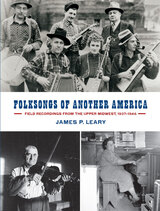 Folksongs of Another America: Field Recordings from the Upper Midwest, 1937–1946
James P. Leary
University of Wisconsin Press, 2018 Music / Folklore / Ethnic & Native American Studies / American Midwest
America's Upper Midwest is a distinctive region where many indigenous and immigrant peoples have maintained, merged, and modified their folk song traditions for more than two centuries. In the 1930s and 40s, Sidney Robertson, Alan Lomax, and Helene Stratman-Thomas—with support from the Library of Congress and armed with bulky microphones, blank disks, spare needles, and cumbersome disk-cutting machines—recorded roughly 2000 songs and tunes throughout Michigan, Minnesota, and Wisconsin. Spanning dance tunes, ballads, lyric songs, hymns, laments, versified taunts, political anthems, street cries, and recitations, these field recordings—made by people born before or shortly after 1900—were captured at a transformative moment when America was in the throes of the Great Depression, World War II was erupting, and market-driven mass entertainment media were expanding rapidly. Yet, except for a handful of Anglo-American performances, these remarkable field recordings in more than twenty-five languages have remained largely unknown, along with the lives of their mostly immigrant, indigenous, rural, and working class performers.
Since the 1970s, folklorist James P. Leary has worked steadily to bring the folk music of the Upper Midwest to a larger public. Folksongs of Another America presents 187 representative performances by more than 200 singers and musicians, carefully restored in digital form from deteriorating original formats. The accompanying book provides an introduction, full texts of all lyrics in the original languages and in English translation, extensive notes about each song and tune, biographical sketches and photographs of many of the performers, and details about Robertson, Lomax, and Stratman-Thomas and their fieldwork efforts as song collectors. These restored performances reveal with clarity and power a nearly lost sonic portrait of another America.
Available here for the first time is the remarkably diverse folk music of America's Upper Midwest, captured in field recordings by collectors for the Library of Congress from 1937 to 1946. This landmark multimedia work challenges and considerably broadens popular and scholarly understanding of folk music in American culture. Although Eastern, Southern, and Western musical traditions are familiar to fans of American roots music, the restored images and performances of Folksongs of Another America weave the songs and spirit of the Upper Midwest's peoples into the nation's folksong fabric.
187 songs and tunes, digitally restored
Songs in more than 25 languages, with full original lyrics and English translations
More than 200 performers, with biographical notes and many photographs
BOXED SET INCLUDES
Illustrated book Folksongs of Another America
300 pp. (est.), 94 black and white photographs and illustrations
CDs & DVD
CD 1 Pigtown Fling: The Sidney Robertson Recordings
Recordings of lumberjack, Finnish, Scots Gaelic, and Serbian performers captured by fieldworker Sidney Robertson in Wisconsin and Minnesota in 1937.
CD 2 The River in the Pines: The Wisconsin Lumberjacks Recordings
Performances of the acclaimed Wisconsin Lumberjacks band of Rice Lake, Wisconsin, recorded by both Sidney Robertson and Alan Lomax during National Folk Festivals in Chicago and Washington, D.C., in 1937 and 1938.
CD 3 Harps and Accordions: The Alan Lomax Recordings Alan Lomax's 1938 Michigan field recordings of lumberjack, Finnish, French Canadian, German, Irish, Lithuanian, Ojibwe, Polish, and Swedish performers.
CD 4 When the Dance is Over: Helene Stratman-Thomas Recordings, Part 1 CD 5 My Father Was a Dutchman: Helene Stratman-Thomas Recordings, Part 2 Recordings made throughout Wisconsin in 1940, 1941, and 1946, encompassing not only Finns, French Canadians, Germans, Irish, Lithuanians, Ojibwe, Poles, Scots, Serbs, and Swedes, but also African American, Austrian, Belgian, Cornish, Croatian, Czech, Danish, Dutch, Ho-Chunk, Icelandic, Italian, Luxemburger, Norwegian, Oneida, Swiss, and Welsh performers.
DVD Alan Lomax Goes North The new documentary film combines digitally restored silent color film footage, related field recordings, voice-over readings from Lomax's correspondence and field notes, and onscreen text to create an audiovisual narrative featuring the performers and scenes that captivated Alan Lomax during his 1938 Upper Midwestern foray.
Funding for this project was provided by the National Endowment for the Humanities, the Brittingham Trust, the University of Wisconsin–Madison Graduate School with funding from the Wisconsin Alumni Research Foundation, the University of Wisconsin–Madison Department of Scandinavian Studies' Birgit Baldwin professorship, and the Finlandia Foundation.
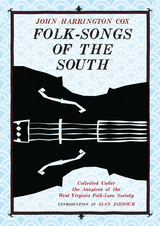 Folk-Songs of the South: Collected Under the Auspices of the West Virginia Folk-Lore Society
John Harrington Cox
West Virginia University Press, 2016 Folk-Songs of the South: Collected Under the Auspices of the West Virginia Folk-Lore Society is a collection of ballads and folk-songs from West Virginia. First published in 1925, this resource includes narrative and lyric songs that were transmitted orally, as well as popular songs from print sources. Through 186 ballads and songs and 26 folk tunes, this collection archives a range of styles and genres, from English and Scottish ballads to songs about the Revolutionary and Civil Wars, the opening of the American West, boat and railroad transportation, children’s play-party and dance music, and songs from African American singers, including post-Civil war popular music. The original introduction by Cox contains vibrant portraits of the singers he researched, with descriptions of performance style and details about personalities and attitudes. With a new introduction by Alan Jabbour, this reprint renews the importance of this text as a piece of scholarship, revealing Cox’s understanding of the workings of tradition across time and place and his influence upon folk-song research.
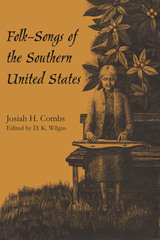 Folk-Songs of the Southern United States
By Josiah H. Combs, D.K. Wilgus
University of Texas Press, 1967 “The spirit of balladry is not dead, but slowly dying. The instincts, sentiments, and feelings which it represents are indeed as immortal as romance itself, but their mode of expression, the folksong, is fighting with its back to the wall, with the odds against it in our introspective age.” This statement by Josiah Henry Combs is that of a man who grew up among the members of a singing family in one of the last strongholds of the ballad-making tradition, the Southern Highlands of the United States. Combs was born in 1886 in Hazard, Kentucky, the heart of the mountain feud area—a significant background for one who was to take a prominent part in the “ballad war” of the 1900s. Combs’s intimate knowledge of folk culture and his grasp of the scholarly literature enabled him to approach the ballad controversy with common sense as well as with some of the heat generated by the dispute. Although in the early twentieth century there was probably no more controversy about the nature of the folk and folksong than there is today, it was a different kind of controversy. Many theories of the origins of folksong current at that time, such as the alleged relationship of traditional ballads to “primitive poetry,” did not take into account contemporary evidence. Combs said, “Here as elsewhere, I go directly to the folk for much of my information, allowing the songs, language, names, customs . . . of the people to help settle the problem of ancestry. . . . In brief, a conscientious study of the lore of the folk cannot be separated from the folk itself.” Folk-Songs du Midi des États-Unis, published as a doctoral dissertation at the University of Paris in 1925, was an introduction to the study of the folksong of the Southern Appalachians, together with a selection of folksong texts collected by Combs. Folk-Songs of the Southern United States, the first publication of that work in English, is based on the French text and Combs’s English draft. To this edition is appended an annotated listing of all songs in the Josiah H. Combs Collection in the Western Kentucky Folklore Archive at the University of California, Los Angeles. The appendix also includes the texts of selected songs. The aim of this edition is to make the contents of the original volume more readily available in English and to provide an index to the Combs Collection that may be drawn upon by students of folksong. The book also offers texts of over fifty songs of British and American origin as sung in the Southern Highlands.
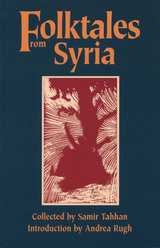 Folktales from Syria
Collected by Samir Tahhan
University of Texas Press, 2004 Syrian poet Samir Tahhan collected folktales from old men sitting outside their houses in Aleppo, drinking tea. Afraid these stories would disappear with the passing of this generation, Tahhan also went to halls and events to hear professional storytellers and record their performances. Anthropologist Andrea Rugh helped translate the resulting two volumes of stories from the original Arabic and wrote the informative introduction to this one-volume collection. Some of the tales appeared in rhyming verse in Arabic and some were based on events that are said to have actually taken place in Aleppo. Rugh explains the concepts of the most popular types of Syrian story structures: the gissa, the hikaya, and the hudutha. With two of the poems, the Arabic and the English are shown side by side in order to demonstrate the internal poetic structures of the original rhymes. With their emphasis on morality and social values, the tales will be familiar to Western audiences. Another value for the reader is finding the accepted social values and behaviors that Arab adults try to inculcate in their younger generation, often through complex characterizations. Teasing out these meanings gives the reader an appreciation for the act of translation and hints of the power of the Arabic language in prose and poetry. Professional illustrator Douglas Rugh has provided the book's black-and-white prints based on the stories and his experiences as a child growing up in the Middle East.
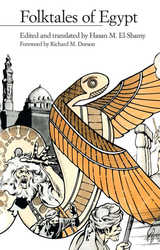 Folktales of Egypt
Hasan M. El-Shamy
University of Chicago Press, 1982 In this book Hasan M. El-Shamy has gathered the first authentic new collection of modern Egyptian folk narratives to appear in nearly a century. El-Shamy's English translations of these orally presented stories not only preserve their spirit, but give Middle Eastern lore the scholarly attention it has long deserved.
"This collection of seventy recently collected Egyptian tales is a major contribution to African studies and to international distribution studies of folktales. In the face of the recent anthropological trend to use folkloric materials for extra-folkloric purposes, the preeminence of the text must be asserted once more, and these are obviously authentic, straightforwardly translated, fully documented as to date of collection and social category of informant, and for all that . . . readable."—Daniel J. Crowley, Research in African Literatures
"Western knowledge of virtually all facets of contemporary Egyptian culture, much less the roots of that culture, is woefully inadequate. By providing an interesting, varied, and readable collection of Egyptian folktales and offering clear and sensible accounts of their background and meaning, this book renders a valuable service indeed."—Kenneth J. Perkins, International Journal of Oral History
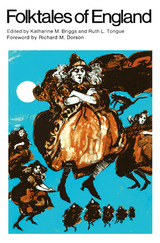 Folktales of England
Edited by Katharine M. Briggs and Ruth L. Tongue
University of Chicago Press, 1968 If wonder tales are not abundant in England, other kinds of folktales thrive: local traditions, historical legends, humorous anecdotes. Many of the favorite tales which English-speaking peoples carry with them from childhood come from a long tradition—stories as familiar to Shakespeare, Ben Jonson, Spenser, and their many contemporaries as they are to us.
"This is a fine, homely feast, immediately intelligble. . . ."—Times Educational Supplement
". . . should be of special concern to Americans since many of the tales are parallel to or the source of our own folk stories."—Choice
"This is entertainment, to be sure, but is also part of man's attempts to comprehend his world."—Quartet
"Folktales of England is by all odds the most satisfactory general collection of folktales to come out of England since the advent of modern collection and classification techniques."—Ernest W. Baughman, Journal of American Folklore
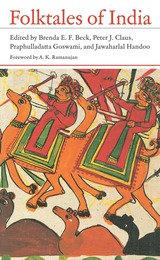 Folktales of India
Edited by Brenda E. F. Beck, Peter J. Claus, Praphulladatta Goswami, and Jawahar
University of Chicago Press, 1986 Bringing together nearly one hundred tales translated from fourteen languages, Folktales of India opens the vast narrative world of Indian folklore to readers of English. Beck includes oral tales collected from tribal areas, peasant groups, urban areas, and remote villages in north and south India, and the distinctive boundary regions of Kashmir, Assam, and Manipur. The tales in this collection emphasize universal human characteristics—truthfulness, modesty, loyalty, courage, generosity, and honesty. Each story is meant to be savored individually with special attention given to the great range of motifs presented and the many distinct narrative styles used. Folktales of India offers a superb anthology of India's bountiful narrative tradition.
"This collection does an excellent job of representing India. . . . It is the type of book that can be enjoyed by all readers who love a well-told tale as well as by scholars of traditional narrative and scholars of India in general."—Hugh M. Flick, Jr., Asian Folklore Studies
"The stories collected here are representative, rich in structural subtlety, and endowed with fresh earthy humor."—Kunal Chakraborti, Contributions to Indian Sociology
 Folktales of India
Edited by Brenda E. F. Beck, Peter J. Claus, Praphulladatta Goswami, and Jawahar
University of Chicago Press, 1987 Bringing together nearly one hundred tales translated from fourteen languages, Folktales of India opens the vast narrative world of Indian folklore to readers of English. Beck includes oral tales collected from tribal areas, peasant groups, urban areas, and remote villages in north and south India, and the distinctive boundary regions of Kashmir, Assam, and Manipur. The tales in this collection emphasize universal human characteristics—truthfulness, modesty, loyalty, courage, generosity, and honesty. Each story is meant to be savored individually with special attention given to the great range of motifs presented and the many distinct narrative styles used. Folktales of India offers a superb anthology of India's bountiful narrative tradition.
"This collection does an excellent job of representing India. . . . It is the type of book that can be enjoyed by all readers who love a well-told tale as well as by scholars of traditional narrative and scholars of India in general."—Hugh M. Flick, Jr., Asian Folklore Studies
"The stories collected here are representative, rich in structural subtlety, and endowed with fresh earthy humor."—Kunal Chakraborti, Contributions to Indian Sociology
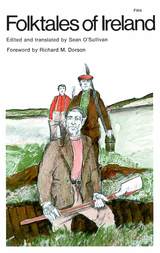 Folktales of Ireland
Edited by Sean O'Sullivan
University of Chicago Press, 1966 Few countries can boast such a plentitude of traditional folktales as Ireland. In 1935, the creation of The Irish Folklore Commission set in motion the first organized efforts of collecting and studying a multitude of folktales, both written as well as those of the Irish oral tradition. The Commission has collected well over a million pages of manuscripts. Folktales of Ireland offers chief archivist Sean O'Sullivan's representation of this awe-inspiring collection. These tales represent the first English language collection of Gaelic folktales.
"Without doubt the finest group of Irish tales that has yet been published in English."—The Guardian
"O'Sullivan writes out of an intimacy with his subject and an instinctive grasp of the language of the originals. He tells us that his archives contain more than a million and a half pages of manuscript. If Mr. O'Sullivan translates them, I'll read them."—Seamus Heaney, New Statesman
"The stories have an authentic folktale flavor and will satisfy both the student of folklore and the general reader."—Booklist
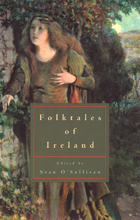 Folktales of Ireland
Edited by Sean O'Sullivan
University of Chicago Press, 1966 Few countries can boast such a plentitude of traditional folktales as Ireland. In 1935, the creation of The Irish Folklore Commission set in motion the first organized efforts of collecting and studying a multitude of folktales, both written as well as those of the Irish oral tradition. The Commission has collected well over a million pages of manuscripts. Folktales of Ireland offers chief archivist Sean O'Sullivan's representation of this awe-inspiring collection. These tales represent the first English language collection of Gaelic folktales.
"Without doubt the finest group of Irish tales that has yet been published in English."—The Guardian
"O'Sullivan writes out of an intimacy with his subject and an instinctive grasp of the language of the originals. He tells us that his archives contain more than a million and a half pages of manuscript. If Mr. O'Sullivan translates them, I'll read them."—Seamus Heaney, New Statesman
"The stories have an authentic folktale flavor and will satisfy both the student of folklore and the general reader."—Booklist
Folktales of Norway
Edited by Reidar Christiansen
University of Chicago Press, 1964 Often lacking the clear episodic structure of folktales about talking animals and magic objects, legends grow from retellings of personal experiences. Christiansen isolated some seventy-seven legend types, and many of these are represented here in absorbing stories of St. Olaf, hidden treasures, witches, and spirits of the air, water, and earth. The ugly, massively strong, but slow-witted trolls are familiar to English-speaking readers. Less well-known, but the subject of an enormous number of legends, are the more manlike yet sinister "huldre-folk" who live in houses and try to woo human girls. These tales reflect the wildness of Norway, its mountains, forests, lakes, and sea, and the stalwart character of its sparse population.
"The translation is excellent, retaining the traditional Norwegian style . . . the tales themselves will also appeal to the interested layman."—Library Journal
Folktales Told Around the World
Richard M. Dorson
University of Chicago Press, 1978 All the selections in Richard M. Dorson's Folktales Told around the World were recorded by expert collectors, and the majority of them are published here for the first time. The tales presented are told in Africa, Asia, the Middle East, Europe, North and South America, and Oceania. Unlike other collections derived in large part from literary texts, this volume meets the criteria of professional folklorists in assembling only authentic examples of folktales as they were orally told. Background information, notes on the narrators, and scholarly commentaries are provided to establish the folkloric character of the tales.
 The Follinglo Dog Book: A Norwegian Pioneer Story from Iowa
Peder Gustav Tjernagel
University of Iowa Press, 1999 The Follinglo Dog Book both is and is not about dogs. The dogs are certainly here: from Milla to Chip the Third, we encounter a procession of heroic if often unfortunate creatures who, along with their immigrant masters, led a hard life on the nineteenth-century American frontier. However, if you pick up this book thinking it will offer a heartwarming read about canine experiences, you will find yourself reinformed by the way it unfolds. Instead, these are the stories of a Norwegian pioneer family that came in 1860 to settle the Iowa prairie on a homestead called Follinglo Farm in Story County, Iowa. In the Tjernagels' experience one may read a chronicle of the state, the region, and the nation. Arriving in Iowa in what was still the age of wooden equipment and animal power, the Tjernagels witnessed each successive revolution on the land. They built homes and barns, cultivated the land, and encountered every manner of natural disaster from prairie fires to blizzards. Through all the struggles and setbacks, Peder Gustav Tjernagel's stories sparkle with boyhood pranks and adventures, in which the family dogs frequently play a role. Readers will discover a wonderful cast of Norwegian relatives and neighbors, including a Herculean uncle, Store Per (Big Pete), who could lift a cow by its horns; a mysterious aunt, Stora Fastero (Big Sister), whose arrival signaled that a baby was soon to be born; and Elling Eilson, the walking Lutheran apostle. And, of course, there are the dogs who shepherd, protect, and even baby-sit the residents of Follinglo Farm.
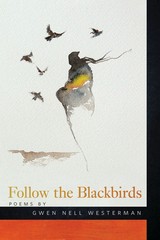 Follow the Blackbirds
Poems by Gwen Nell Westerman
Michigan State University Press, 2013 In language as perceptive as it is poignant, poet Gwen Nell Westerman builds a world in words that reflects the past, present, and future of the Dakota people. An intricate balance between the singularity of personal experience and the unity of collective longing, Follow the Blackbirds speaks to the affection and appreciation a contemporary poet feels for her family, community, and environment. With touches of humor and the occasional sharp cultural criticism, the voice that emerges from these poems is that of a Dakota woman rooted in her world and her words. In this moving collection, Westerman reflects on history and family from a unique perspective, one that connects the painful past and the hard-fought future of her Dakota homeland. Grounded in vivid story and memory, Westerman draws on both English and the Dakota language to celebrate the long journey along sunflower-lined highways of the tallgrass prairies of the Great Plains that returns her to a place filled with “more than history.” An intense homage to the power of place, this book tells a masterful story of cultural survival and the power of language.
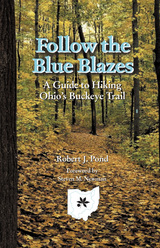 Follow the Blue Blazes: A Guide To Hiking Ohio's Buckeye Trail
Robert J. Pond
Ohio University Press, 2003
Unique among hiking trails is the one that forms a complete loop around the state of Ohio. That 1,200-mile trail is called the Buckeye Trail. Showing the way on tree trunks, rocks, and other natural signposts are the blue painted markings called “the blue blazes.” In Follow the Blue Blazes, the reader embarks on a journey to discover a part of Ohio largely unseen except along this great path.
Beginning with the startling rock formations and graceful waterfalls of Old Man’s Cave in southern Ohio, and leading clockwise around the state to visit expansive forests, lovely parks, ancient mounds, historic canals and battlefields, and scenic river trails, experienced trailsman Robert J. Pond provides a captivating look at each section of the trail.
Each chapter features an overview of a 100-mile section of the trail and three self-guided featured hikes. The overviews, with accompanying maps, may be read consecutively to acquaint the reader with the entire course of the blue blazes. But most readers will best enjoy the Buckeye Trail by taking the guide along on featured hikes. Each hike is supported by a detailed but easy-to-follow map and includes explicit directions to trailheads and approximate hiking times.
In addition to many outlying areas, the extensive Buckeye Trail is accessible in or near Cincinnati, Dayton, Toledo, Cleveland, and Akron. Robert Pond has supplemented each description with interesting details about the geology and the diverse habitats of flora and fauna. Readers, too, can enjoy the beauty and wonders of Ohio if they Follow the Blue Blazes.
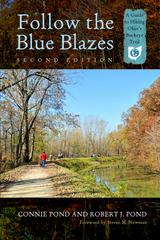 Follow the Blue Blazes: A Guide to Hiking Ohio’s Buckeye Trail
Connie Pond
Ohio University Press, 2014 Many changes have taken place in the decade since Follow the Blue Blazes was first published, changes in the trails themselves and in the way we hike them. The Buckeye Trail still wends its way around the state of Ohio, following the course marked out by the characteristic blue blazes on trees and signposts along the way. In the intervening years, however, sections of the trail have changed their route, added amenities, or just grown more interesting. From the startling rock formations and graceful waterfalls of Old Man’s Cave, to Native American mounds, battlefields, and scenic rivers, Connie and Robert J. Pond provide a captivating guide to often-overlooked treasures around the state. Each chapter features an overview of a 100-mile section of the trail and three self-guided featured hikes. The overviews and the accompanying maps may be read consecutively to acquaint the reader with the entire course of the trail. But most readers will best enjoy the trail by taking the guide along on one of the featured hikes. Each route is outlined on an easy-to-read map with GPS coordinates and waypoints to guide the hiker, as well as explicit directions from parking lot to trailhead. The Buckeye Trail is readily accessible from Cincinnati, Dayton, Toledo, Cleveland, and Akron. Even a short trip can lead to an adventure near your own backyard.
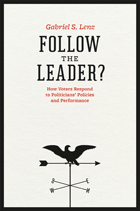 Follow the Leader?: How Voters Respond to Politicians' Policies and Performance
Gabriel S. Lenz
University of Chicago Press, 2012 In a democracy, we generally assume that voters know the policies they prefer and elect like-minded officials who are responsible for carrying them out. We also assume that voters consider candidates' competence, honesty, and other performance-related traits. But does this actually happen? Do voters consider candidates’ policy positions when deciding for whom to vote? And how do politicians’ performances in office factor into the voting decision? In Follow the Leader?, Gabriel S. Lenz sheds light on these central questions of democratic thought. Lenz looks at citizens’ views of candidates both before and after periods of political upheaval, including campaigns, wars, natural disasters, and episodes of economic boom and bust. Noting important shifts in voters’ knowledge and preferences as a result of these events, he finds that, while citizens do assess politicians based on their performance, their policy positions actually matter much less. Even when a policy issue becomes highly prominent, voters rarely shift their votes to the politician whose position best agrees with their own. In fact, Lenz shows, the reverse often takes place: citizens first pick a politician and then adopt that politician’s policy views. In other words, they follow the leader. Based on data drawn from multiple countries, Follow the Leader? is the most definitive treatment to date of when and why policy and performance matter at the voting booth, and it will break new ground in the debates about democracy.
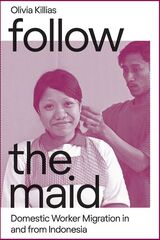 Follow the Maid: Domestic Worker Migration from Indonesia
Olivia Killias
National University of Singapore Press, 2017 This fascinating study unveils the workings of the Indonesian migration regime, one that sends hundreds of thousands of women abroad as domestic workers each year. Drawing on extended ethnographic research since 2007, the book literally follows migrant women from one particular village in Central Java and tracks the moral, social, economic and legal processes by which they are turned into ‘maids’. From recruitment by local brokers to the ‘training’ received in secluded camps in Jakarta, employment in gated middle-class homes in Malaysia and back home again, Olivia Killias highlights the implications of the migration process on gendered practices of labour mobility (and immobilisation). She also reveals the disciplinary power that states, recruitment agencies and employers exercise over migrant domestic workers as well as highlighting frictions within the system. Killias’s analysis demonstrates that ironically, the “legalisation” of the migration industry, under the joint pressures of the Indonesian migration bureaucracy and international humanitarian agencies, does not automatically improve the situation of the women who embark on the migration adventure. Rather, Killias unmasks the gendered moralizing discourses on “illegal” migration and “trafficking” as legitimizing indentured labour and constraining migrant mobility. By exploring the workings of the Indonesian state’s overseas legal labour migration regime for migrants, she brings the reader directly into the nerve-racking lives of migrant village women, and reveals the richness and ambiguity of their experiences, going beyond stereotypical representations of them as “victims of trafficking”.
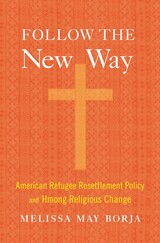 Follow the New Way: American Refugee Resettlement Policy and Hmong Religious Change
Melissa May Borja
Harvard University Press, 2023 An incisive look at Hmong religion in the United States, where resettled refugees found creative ways to maintain their traditions, even as Christian organizations deputized by the government were granted an outsized influence on the refugees’ new lives.
Every year, members of the Hmong Christian Church of God in Minneapolis gather for a cherished Thanksgiving celebration. But this Thanksgiving takes place in the spring, in remembrance of the turbulent days in May 1975 when thousands of Laotians were evacuated for resettlement in the United States. For many Hmong, passage to America was also a spiritual crossing. As they found novel approaches to living, they also embraced Christianity—called kev cai tshiab, “the new way”—as a means of navigating their complex spiritual landscapes.
Melissa May Borja explores how this religious change happened and what it has meant for Hmong culture. American resettlement policies unintentionally deprived Hmong of the resources necessary for their time-honored rituals, in part because these practices, blending animism, ancestor worship, and shamanism, challenged many Christian-centric definitions of religion. At the same time, because the government delegated much of the resettlement work to Christian organizations, refugees developed close and dependent relationships with Christian groups. Ultimately the Hmong embraced Christianity on their own terms, adjusting to American spiritual life while finding opportunities to preserve their customs.
Follow the New Way illustrates America’s wavering commitments to pluralism and secularism, offering a much-needed investigation into the public work done by religious institutions with the blessing of the state. But in the creation of a Christian-inflected Hmong American animism we see the resilience of tradition—how it deepens under transformative conditions.
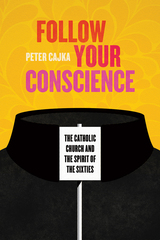 Follow Your Conscience: The Catholic Church and the Spirit of the Sixties
Peter Cajka
University of Chicago Press, 2021 What is your conscience? Is it, as Peter Cajka asks in this provocative book, “A small, still voice? A cricket perched on your shoulder? An angel and devil who compete for your attention?” Going back at least to the thirteenth century, Catholics viewed their personal conscience as a powerful and meaningful guide to align their conduct with worldly laws. But, as Cajka shows in Follow Your Conscience, during the national cultural tumult of the 1960s, the divide between the demands of conscience and the demands of the law, society, and even the church itself grew increasingly perilous. As growing numbers of Catholics started to consider formerly stout institutions to be morally hollow—especially in light of the Vietnam War and the church’s refusal to sanction birth control—they increasingly turned to their own consciences as guides for action and belief. This abandonment of higher authority had radical effects on American society, influencing not only the broader world of Christianity, but also such disparate arenas as government, law, health care, and the very vocabulary of American culture. As this book astutely reveals, today’s debates over political power, religious freedom, gay rights, and more are all deeply infused by the language and concepts outlined by these pioneers of personal conscience.
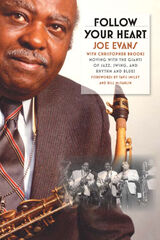 Follow Your Heart: Moving with the Giants of Jazz, Swing, and Rhythm and Blues
Joe Evans with Christopher Brooks
University of Illinois Press, 2008 Detailing the fascinating career of Joe Evans, Follow Your Heart chronicles the nearly thirty years that he spent immersed in one of the most exciting times in African American music history. An alto saxophonist who between 1939 and 1965 performed with some of America's greatest musicians, including Louis Armstrong, Cab Calloway, Charlie Parker, Jay McShann, Andy Kirk, Billie Holiday, Bill "Bojangles" Robinson, Lionel Hampton, and Ivory Joe Hunter, Evans warmly recounts his wide range of experience in the music industry. Readers follow Evans from Pensacola, Florida, where he first learned to play, to such exotic destinations as Tel Aviv and Paris, which he visited while on tour with Lionel Hampton. Evans also comments on popular New York City venues used for shaping and producing black music, such as the Apollo Theater, the Savoy, Minton's Playhouse, and the Rhythm Club. Revealing Evans as a master storyteller, Follow Your Heart describes his stints as a music executive, entrepreneur, and musician. Evans provides rich descriptions of jazz, swing, and rhythm and blues culture by highlighting his experiences promoting tracks to radio deejays under Ray Charles's Tangerine label and later writing, arranging, and producing hits for the Manhattans and the Pretenders. Leading numerous musical ventures that included a publishing company and several labels--Cee Jay Records (with Jack Rags), Revival, and Carnival Records--Evans remained active in the music industry even after he stopped performing regularly. As one of the few who enjoyed success as both performer and entrepreneur, he offers invaluable insight into race relations within the industry, the development of African American music and society from the 1920s to 1970s, and the music scene of the era.
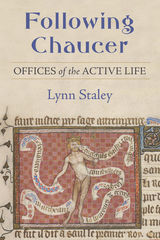 Following Chaucer: Offices of the Active Life
Lynn Staley
University of Michigan Press, 2020 Following Chaucer: Offices of the Active Life explores three representative figures—the royal woman, the poet, and the merchant—in relation to the concept of “office,” which Cicero linked to the health of the republic, but Chaucer to that of the common good. Not usually conjoined to the term “office,” these three figures, situated in the active life, were not firmly mapped onto the body politic, which was used to figure a relational and ordered social body ruled by the king, the head. These figures are points of entry into a set of questions rooted in Chaucer’s understanding of his cultural and historical past and in his keen appraisal of the social dynamics of his own time that also reverberate in the centuries after Chaucer’s death. Following Chaucer does not trace influence but uses Chaucer’s likely reading, circumstances, and literary and social affiliations as guides to understanding his poetry, within the context of late medieval English culture and the reshaping of the concept of these particular offices that suited the needs of a future whose dynamics he anticipated. His understanding of the importance of the Ciceronian concept of office within the active life, his profound cultural awareness, and his probing of the foundations of social change provide him with a keen sense of the persistent tensions and inconsistencies that are fundamental to his poetry.
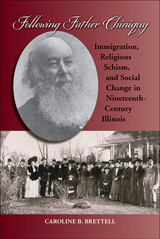 Following Father Chiniquy: Immigration, Religious Schism, and Social Change in Nineteenth-Century Illinois
Caroline B. Brettell
Southern Illinois University Press, 2015 Winner, ISHS Certificate of Excellence, 2016
In the late 1850s and early 1860s, the attention of the Catholic and Protestant religious communities around the world focused on a few small settlements of French Canadian immigrants in northeastern Illinois. Soon after arriving in their new home, a large number of these immigrants, led by Father Charles Chiniquy, the charismatic Catholic priest who had brought them there, converted to Protestantism. In this anthropological history, Caroline B. Brettell explores how Father Chiniquy took on both the sacred and the secular authority of the Catholic Church to engineer the religious schism and how the legacy of this rift affected the lives of the immigrants and their descendants for generations. This intriguing study of a nineteenth-century migration of French Canadians to the American Midwest offers an innovative perspective on the immigrant experience in America. Brettell chronicles how Chiniquy came to lead approximately one thousand French Canadian families to St. Anne, Illinois, in the early 1850s and how his conflict with the Catholic hierarchy over the ownership and administration of church property, delivery of the mass in French instead of Latin, and access to the Bible by laymen led to his excommunication. Drawing on the concept of social drama—a situation of intensely lived conflict that emerges within social groups—Brettell explains the religious schism in terms of larger ethnic and religious disagreements that were happening elsewhere in the United States and in Canada. Brettell also explores legal disputes, analyzes the reemergence of Catholicism in St. Anne in the first decade of the twentieth century, addresses the legacy of Chiniquy in both the United States and Quebec, and closely examines the French Canadian immigrant communities, focusing on the differences between the people who converted to Protestantism and those who remained Catholic. Occurring when nativism was pervasive and the anti-immigrant Know-Nothing Party was at its height, Chiniquy’s religious schism offers an opportunity to examine a range of important historical and anthropological issues, including immigration, ethnicity, and religion; changes in household and family structure; the ways social identities are constructed and reconstructed through time; and the significance of charismatic leadership in processes of social and religious change. Through its multidisciplinary approach, Brettell’s enlightening study provides a pioneering assessment of larger national tensions and social processes, some of which are still evident in modern immigration to the United States.
 Following in Father’s Footsteps: Social Mobility in Ireland
Michael Hout
Harvard University Press, 1989 This is the first systematic study of patterns of social mobility in Ireland. It covers a recent period—the 1960s—when Ireland was undergoing rapid economic growth and modernization. The author thus was able to test the widely accepted hypothesis that growth weakens class barriers. To his surprise he found that it did not. Social mobility increased somewhat, but among mobile men the better jobs still went to those from advantaged social class origins. Despite economic development and demographic change, the underlying link between social origins and career destinations remained unchanged.
In chapters on education, life cycle, religion, and farming, Michael Hout shows how inequality persists in contemporary Ireland. In the last chapter he reviews evidence from other countries and concludes that governments must take action against class barriers in education and employment practices if inequality is to be reduced. Economic growth creates jobs, he argues, but economic growth alone cannot allocate those jobs fairly.
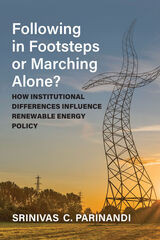 Following in Footsteps or Marching Alone?: How Institutional Differences Influence Renewable Energy Policy
Srinivas C. Parinandi
University of Michigan Press, 2023 In recent years, the federal government’s increasing inability to address major societal challenges has arguably hampered America’s commitment to renewable energy initiatives. Individual U.S. states have stepped into this void and adopted their own policies, leading some to believe that the states can propel America’s renewable energy industry forward. However, we know little about how legislative and regulatory dynamics within America’s states might accelerate or hinder renewable energy policy creation.
In Following in Footsteps or Marching Alone?, Srinivas Parinandi explores how states have devised their own novel policies, and how the political workings of legislatures and public utilities commissions have impacted state renewable energy policy design. Through the meticulous study of nearly three decades of state-level renewable energy policy-making, he finds that their creation is primarily driven by legislatures, and that ideologically liberal legislatures largely push the envelope. The book suggests that having a predominantly state-driven renewable energy effort can lead to uneven and patchwork-based policy development outcomes, and a possible solution is to try to more successfully federalize these issues. Parinandi urges readers, scholars, and policy practitioners to consider whether a state-led effort is adequate enough to handle the task of building momentum for renewable energy in one of the world’s largest electricity markets.
Following in His Steps: A Biography of Charles M. Sheldon
Timothy Miller
University of Tennessee Press, 1988 In the first comprehensive biography of this religious writer, social crusader, and pastor of the Central Congregational Church in Topeka, Kansas, Timothy Miller focuses on Sheldon's life and ideas as a social reformer as well as the circumstances surrounding publication of In His Steps: What Would Jesus Do?
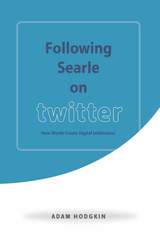 Following Searle on Twitter: How Words Create Digital Institutions
Adam Hodgkin
University of Chicago Press, 2017 Twitter allows us to build communities, track celebrities, raise our social profile, and promote a personal brand. Adam Hodgkin thinks Twitter is much more than a mere social media tool—it is a terrain ripe for a conceptual and theoretical analysis of our use of digital language. In Following Searle on Twitter, Hodgkin takes John Searle’s theory of speech acts as Status Function Declarations (SFDs)—speech acts that fulfill their meaning by saying the right words in the right context—as a probe for understanding Twitter’s institutional structure and the still-developing toolset that it provides for its members. He argues that Twitter is an institution built, constituted, and evolving through the use of SFDs. Searle’s speech act theories provide a framework for illuminating how Twitter membership arises, how users of Twitter relate to each other by following, and how increasingly complex content is conveyed with tweets. Using this framework, Hodgkin places language, action, intention, and responsibility at the core of the digital culture and the digital institutions that we are constructing.
Combining theoretical perspective with a down-to-earth exposition of present-day digital institutions, Following Searle on Twitter explores how all of our interactions with these emerging institutions are deeply rooted in language, and are the true foundation of social media and contemporary institutions.
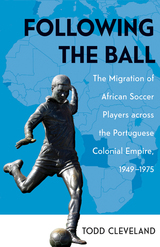 Following the Ball: The Migration of African Soccer Players across the Portuguese Colonial Empire, 1949–1975
Todd Cleveland
Ohio University Press, 2017 With Following the Ball, Todd Cleveland incorporates labor, sport, diasporic, and imperial history to examine the extraordinary experiences of African football players from Portugal’s African colonies as they relocated to the metropole from 1949 until the conclusion of the colonial era in 1975. The backdrop was Portugal’s increasingly embattled Estado Novo regime, and its attendant use of the players as propaganda to communicate the supposed unity of the metropole and the colonies. Cleveland zeroes in on the ways that players, such as the great Eusébio, creatively exploited opportunities generated by shifts in the political and occupational landscapes in the waning decades of Portugal’s empire. Drawing on interviews with the players themselves, he shows how they often assumed roles as social and cultural intermediaries and counters reductive histories that have depicted footballers as mere colonial pawns. To reconstruct these players’ transnational histories, the narrative traces their lives from the informal soccer spaces in colonial Africa to the manicured pitches of Europe, while simultaneously focusing on their off-the-field challenges and successes. By examining this multi-continental space in a single analytical field, the book unearths structural and experiential consistencies and contrasts, and illuminates the components and processes of empire.
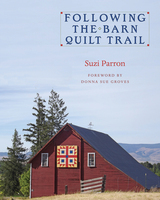 Following the Barn Quilt Trail
Suzi Parron
Ohio University Press, 2016 Suzi Parron, in cooperation with Donna Sue Groves, documented the massive public art project known as the barn quilt trail in her 2012 book Barn Quilts and the American Quilt Trail Movement. The first of these projects began in 2001, when Groves and community members created a series of twenty painted quilt squares in Adams County, Ohio. Since then, barn quilts have spread throughout forty-eight states and several Canadian provinces. In Following the Barn Quilt Trail, Parron brings readers along as she, her new love, Glen, their dog Gracie, and their converted bus Ruby, leave the stationary life behind. Suzi and Glen follow the barn quilt trail through thirty states across thirteen thousand miles as Suzi collects the stories behind the brightly painted squares. With plentiful color photographs, this endearing hybrid of memoir and travelogue is for quilt lovers, Americana and folk art enthusiasts, or anyone up for a good story.
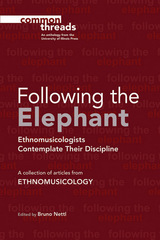 Following the Elephant: Ethnomusicologists Contemplate Their Discipline
Edited by Bruno Nettl: A collection of articles from Ethnomusicology
University of Illinois Press, 2017 In Following the Elephant, Bruno Nettl edits articles drawn from fifty years of the pioneering journal Ethnomusicology. The roster of acclaimed scholars hail from across generations, using other works in the collection as launching points for dialogues on the history and accomplishments of the field. Nettl divides the collection into three sections. In the first, authors survey ethnomusicology from perspectives that include thoughts on defining and conceptualizing the field and its concepts. The second section offers milestones in the literature that critique major works. The authors look at what separates ethnomusicology from other forms of music research and discuss foundational issues. The final section presents scholars considering ethnomusicology--including recent trends--from the perspective of specific, but abiding, strands of thought. Contributors: Charlotte J. Frisbie, Mieczylaw Kolinski, Gerhard Kubik, George List, Alan P. Merriam, Bruno Nettl, David Pruett, Adelaida Reyes, Timothy Rice, Jesse D. Ruskin, Kay Kaufman Shelemay, Gabriel Solis, Jeff Todd Titon, J. Lawrence Witzleben, and Deborah Wong
 Following the Score: The Ravel Trilogy
Oliver Smith
Intellect Books, 2024 An interdisciplinary critical inquiry into the working dramaturgy of The Ravel Trilogy.
This book frames the playtexts of The Ravel Trilogy—Bolero (2014), Concerto (2016), and Solo (2018)—alongside a series of reflective essays and provocations on contemporary dramaturgy and musicology from academics and artists in drama, music, linguistics, and fine art. It contextualizes the themes and approaches of the trilogy and serves as a critical companion to a body of devised work, stimulating a debate about dramaturgy and composition and inviting discussion about post-dramatic theater's relationship to music.
This publication marks the culmination of the trilogy and its critical legacy, exploring the work through the dual lenses of postdramatic theater and research questions articulated and addressed by the practice-research undertaken by its co-creators. The dramaturgical context for The Ravel Trilogy and the reflective essays around it allow the editors to explore the relationship between theater and music, raising questions about practice-research and notions of creating playtexts from musical scores. In this volume, Michael Pinchbeck and Ollie Smith reflect on making and performing The Ravel Trilogy and the process of researching, devising, and presenting work inspired by music where score becomes script and dynamics become stage directions.
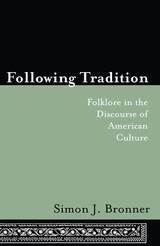 Following Tradition: Folklore in the Discourse of American Culture
Simon J. Bronner
Utah State University Press, 1998 Following Tradition is an expansive examination of the history of tradition—"one of the most common as well as most contested terms in English language usage"—in Americans' thinking and discourse about culture. Tradition in use becomes problematic because of "its multiple meanings and its conceptual softness." As a term and a concept, it has been important in the development of all scholarly fields that study American culture. Folklore, history, American studies, anthropology, cultural studies, and others assign different value and meaning to tradition. It is a frequent point of reference in popular discourse concerning everything from politics to lifestyles to sports and entertainment. Politicians and social advocates appeal to it as prima facie evidence of the worth of their causes. Entertainment and other media mass produce it, or at least a facsimile of it. In a society that frequently seeks to reinvent itself, tradition as a cultural anchor to be reverenced or rejected is an essential, if elusive, concept. Simon Bronner's wide net captures the historical, rhetorical, philosophical, and psychological dimensions of tradition. As he notes, he has written a book "about an American tradition—arguing about it." His elucidation of those arguments makes fascinating and thoughtful reading. An essential text for folklorists, Following Tradition will be a valuable reference as well for historians and anthropologists; students of American studies, popular culture, and cultural studies; and anyone interested in the continuing place of tradition in American culture.
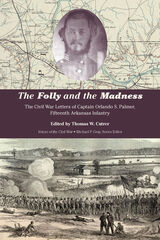 The Folly and the Madness: The Civil War Letters of Captain Orlando S. Palmer, Fifteenth Arkansas Infantry
Thomas W. Cutrer
University of Tennessee Press, 2023 With a closeness perhaps unique to siblings orphaned young, Orlando and Artimisia “Missie” Palmer exchanged intimate letters throughout their lives. These letters (interspersed with additional letters from Oliver Kennedy, the Palmers’ first cousin) offer a clear and entertaining window into the life and times of a junior Confederate officer serving in the Western Theater of the Civil War.
Though he initially felt Americans would see “the folly and the madness” of going to war, Orlando enlisted as a private in what would become Company H of the First (later Fifteenth) Arkansas Infantry, informing his sister that he had volunteered “not for position, not for a name, but from patriotic motivation.” However, he was ambitious enough to secure an appointment as Maj. Gen. William Joseph Hardee’s personal secretary; he then rose to become his regiment’s sergeant major, his company’s first lieutenant, and later captain and brigade adjutant. Soldier letters typically report only what can be observed at the company level, but Palmer’s high-ranking position offers a unique view of strategic rather than tactical operations.
Palmer’s letters are not all related to his military experience, though, and the narrative is enhanced by his nuanced reflections on courtship customs and personal relationships. For instance, Palmer frequently attempts to entertain Missie with witticisms and tales of his active romantic life: “We have so much to do,” he quips, “that we have no time to do anything save to visit the women. I am in love with several dozen of them and am having
a huge time generally.”
The Folly and the Madness adds depth to the genre of Civil War correspondence and provides a window into the lives of ordinary southerners at an extraordinary time.
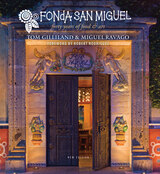 Fonda San Miguel: Forty Years of Food and Art
By Tom Gilliland and Miguel Ravago
University of Texas Press, 2016 “Walking through the old wooden doors at Fonda San Miguel is like a journey back to colonial Mexico. . . . World-class Mexican art and antiques decorate the interior, and famed Mexican chefs have taught and cooked here. Acclaimed as one of the best Mexican restaurants in the country serving authentic interior food . . .” —USA Today “The stately yet bright and colorful hacienda decor and standout Mexican-interior cooking . . . will transport you straight to Guanajuato.” —Vogue “It anchors the city as its premier Mexican restaurant institution.” —The Daily Meal, which named Fonda San Miguel one of “America’s 50 Best Mexican Restaurants” Updated and reissued to celebrate the restaurant’s four decades of success, Fonda San Miguel presents more than one hundred recipes. The selections include many of Fonda’s signature dishes—Ceviche Veracruzano, Enchiladas Suizas, Cochinita Pibil, Pescado Tikin Xik, and Carne Asada—as well as a delicious assortment of dishes from Mexico’s diverse regional cuisines. Supplementary sections contain tips on buying and cooking with the various chiles and other ingredients, along with information on basic preparation techniques, equipment, and mail-order sources. Full-color photographs illustrate special dishes, and representative works from the impressive Fonda San Miguel art collection are also featured, along with notes on the artists.
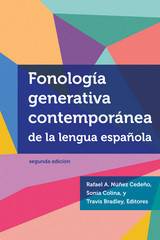 Fonología generativa contemporánea de la lengua española: segunda edición
Rafael A. Núñez Cedeño, Sonia Colina, and Travis G. Bradley, Editors
Georgetown University Press, 2014 Fonología generativa contemporánea de la lengua española, in its extensively revised and updated second edition, shows how recent theoretical and methodological advances have enhanced our understanding of Spanish phonology. This comprehensive book, written completely in Spanish, introduces the latest concepts and principles of phonological analysis and applies these theories to the study of the Spanish language. This new edition includes new chapters on intonation and laboratory phonology and greatly expands the coverage of optimality theory. Exercises and further readings at the end of each chapter, as well as the volume’s glossary of linguistic terminology, facilitate effective classroom use. This book is an essential reference for scholars of Spanish linguistics and will be required reading for advanced undergraduate and graduate students of Spanish. An answer key is available on the GU Press website for teachers only.
The Fonte Gaia from Renaissance to Modern Times: A History of Construction, Preservation, and Reconstruction in Siena
Chiara E. Scappini and David Boffa
Amsterdam University Press, 2018 The Fonte Gaia from Renaissance to Modern Times examines the history of Siena's famous public fountain, from its fifteenth-century origins to its eventual replacement by a copy in the nineteenth century (and the modern fate of both). The book explores how both the Risorgimento and the Symbolist movements have shaped our perceptions of the Italian Renaissance, as the Quattrocento was filtered through the lens of contemporary art and politics.
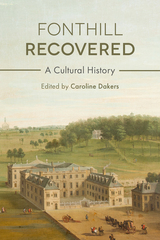 Fonthill Recovered: A Cultural History
Edited by Caroline Dakers
University College London, 2018 Fonthill, Wiltshire, is typically associated with the writer and collector William Beckford, who built his Gothic fantasy house, Fonthill Abbey, there at the end of the eighteenth century. The collapse of the Abbey’s tower in 1825 transformed the name Fonthill into a symbol for overarching ambition and folly. But Fonthill is much more than the story of one man’s excesses, and the Abbey was only one of several important houses to be built there, all eventually consumed by fire or deliberately demolished—and all strangely forgotten by contemporary history
Fonthill Recovered draws on new research to explore the rich cultural history of this place where little remains today—a tower, a stable block, the ruins of what was once a kitchen, and an indentation in a field. The first half of the book traces the occupation of Fonthill from the Bronze Age to the twenty-first century. Some of the owners surpassed Beckford in terms of their wealth and political power—and even, in one case, their sexual proclivities. They include Charles I’s Chancellor of the Exchequer and the richest British commoner of the nineteenth century. The second half of the book consists of essays on specific topics, examining such crucial areas as the complex history of the designed landscape, the sources of the Beckfords’ wealth and their extensive art collection, and the recent appearance of the Abbey in a video game.
The Foochow Missionaries, 1847–1880
Ellsworth C. Carlson
Harvard University Press This detailed study investigates the early decades (1847-1880) of Protestant missionary work in one of the important provincial capitals of China. Missionary activities are examined from the points of view of the missionaries themselves, of the British and American consuls in Foochow, and of the Chinese officials in Foochow and in the Prefectural and District Cities around. The author gives careful consideration to the obstacles to missionary success, including sources of conflict between the missionaries and the Chinese. The Wu-shih-shan incident of 1878 in Foochow is given special attention.
Food Across Borders
Garcia, Matt
Rutgers University Press, 2017 The act of eating defines and redefines borders. What constitutes “American” in our cuisine has always depended on a liberal crossing of borders, from “the line in the sand” that separates Mexico and the United States, to the grassland boundary with Canada, to the imagined divide in our collective minds between “our” food and “their” food. Immigrant workers have introduced new cuisines and ways of cooking that force the nation to question the boundaries between “us” and “them.”
The stories told in Food Across Borders highlight the contiguity between the intimate decisions we make as individuals concerning what we eat and the social and geopolitical processes we enact to secure nourishment, territory, and belonging.
Published in cooperation with the William P. Clements Center for Southwest Studies, Southern Methodist University.
 Food Allergy Advocacy: Parenting and the Politics of Care
Danya Glabau
University of Minnesota Press, 2022 A detailed exploration of parents’ fight for a safe environment for their kids, interrogating how race, class, and gender shape health advocacy
The success of food allergy activism in highlighting the dangers of foodborne allergens shows how illness communities can effectively advocate for the needs of their members. In Food Allergy Advocacy, Danya Glabau follows parents and activists as they fight for allergen-free environments, accurate labeling, the fair application of disability law, and access to life-saving medications for food-allergic children in the United States. At the same time, she shows how this activism also reproduces the culturally dominant politics of personhood and responsibility, based on an idealized version of the American family, centered around white, middle-class, and heteronormative motherhood. By holding up the threat of food allergens to the white nuclear family to galvanize political and scientific action, Glabau shows, the movement excludes many, including Black women and disabled adults, whose families and health have too often been marginalized from public health and social safety net programs. Further, its strategies are founded on the assumption that market-based solutions will address issues of social exclusion and equal access to healthcare. Sharing the personal experiences of a wide spectrum of people, including parents, support group leaders, physicians, entrepreneurs, and scientists, Food Allergy Advocacy raises important questions about who controls illness activism. Using critical, intersectional feminism to interrogate how race, class, and gender shape activist priorities and platforms, it shows the way to new, justice-focused models of advocacy.
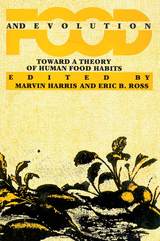 Food And Evolution: Toward a Theory of Human Food Habits
edited by Marvin Harris and Eric B. Ross
Temple University Press, 1989 "Many topics of interest to health professionals, such as vegetarianism, dietary fibers, lactose intolerance, favism, cannibalism and changes in nutritional status wrought by the decline of hunter-gathering and the rise of horticulture. Many sections will appeal to the general reader."
--Journal of Applied Nutrition
The old adage "you are what you eat" may be more accurate than anyone could have ever imagined. This unprecedented interdisciplinary effort by scholars in primatology, biological anthropology, archaeology, nutrition, psychology, agricultural economics, and cultural anthropology suggests that there is a systematic theory behind why humans eat what they eat.
Includes discussions ranging in time from prehistory to the present, and from the most simple societies to the most complex, including South American Indian groups, African hunter-gatherers, and countries such as India, Bangladesh, Peru, and Mexico.
"Exceptionally well-edited. High quality individual papers are of comparable scope and are uniformly well referenced and detailed in presentation of supporting data Introductory and concluding chapters as well as section overviews create an integrated whole."
--Choice
"Compelling...complete and...recommended."
--Science Books & Films
"Should be of value to all nutrition educators who have an interest in the social, cultural, and international aspects of foods and nutrition."
--Journal of Nutrition Education
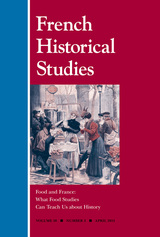 Food and France: What Food Studies Can Teach Us about History
Erica J. Peters and Bertram M. Gordon, editors
Duke University Press This special issue offers a broad range of social and cultural insights into the history of French gastronomy. At a moment when French cuisine no longer dominates the world of fine dining, the history of French food has drawn increasing attention in the academic world. The contributors address topics spanning the seventeenth to the twentieth centuries, such as coffee’s relationship to slavery and exoticism; the promotion of terroir to an aspiring middle class; the contrast between the romanticized images of Parisian shop girls and their efforts to survive on street food in the early twentieth century; the "standard meal" imagined by nineteenth-century nutritionists and the divergent reality of meager lunches for the working class; and the inequitable experience of wartime deprivation. The articles in this issue both model how the study of the culture of food can ground our understanding of France’s place in the world and illuminate questions of nationalism, global networks, gender, race, ethnicity, and class. Contributors: Martin Bruegel, Bertram M. Gordon, Julia Landweber, Philippe Meyzie, Kenneth Mouré, Erica J. Peters, Patricia A. Tilburg
Food and Poverty: Food Insecurity and Food Sovereignty among America's Poor
Leslie Hossfeld
Vanderbilt University Press, 2018 Food insecurity rates, which skyrocketed with the Great Recession, have yet to fall to pre-recession levels. Food pantries are stretched thin, and states are imposing new restrictions on programs like SNAP that are preventing people from getting crucial government assistance. At the same time, we see an increase in obesity that results from lack of access to healthy foods. The poor face a daily choice between paying bills and paying for food.
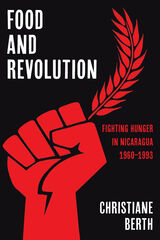 Food and Revolution: Fighting Hunger in Nicaragua, 1960-1993
Christiane Berth
University of Pittsburgh Press, 2020 Food policy and practices varied widely in Nicaragua during the last decades of the twentieth century. In the 1970s and ‘80s, food scarcity contributed to the demise of the Somoza dictatorship and the Sandinista revolution. Although faced with widespread scarcity and political restrictions, Nicaraguan consumers still carved out spaces for defining their food choices. Despite economic crises, rationing, and war limiting peoples’ food selection, consumers responded with improvisation in daily cooking practices and organizing food exchanges through three distinct periods. First, the Somoza dictatorship (1936–1979) promoted culture and food practices from the United States, which was an option only for a minority of citizens. Second, the 1979 Sandinista revolution tried to steer Nicaraguans away from mass consumption by introducing an austere, frugal consumption that favored local products. Third, the transition to democracy between 1988 and 1993, marked by extreme scarcity and economic crisis, witnessed the re-introduction of market mechanisms, mass advertising, and imported goods. Despite the erosion of food policy during transition, the Nicaraguan revolution contributed to recognizing food security as a basic right and the rise of peasant movements for food sovereignty.
 Food and the City: Histories of Culture and Cultivation
Dorothée Imbert
Harvard University Press Food and the City explores the physical, social, and political relations between the production of food and urban settlements. Its thirteen essays discuss the multiple scales and ideologies of productive landscapes—from market gardens in sixteenth-century Paris to polder planning near mid-twentieth century Amsterdam to opportunistic agriculture in today’s Global South—and underscore the symbiotic connection between productive landscape and urban form across times and geographies.
The physical proximity of fruit and vegetable production to urban consumers in pre-revolutionary Paris, or the distribution of fish in Imperial Edo, was an essential factor in shaping both city and surroundings. Colonial expansion and modernist planning stressed the essential relation between urbanism and food production, at the scales of both the garden and agriculture. This volume offers a variety of perspectives—from landscape and architectural history to geography—to connect the garden, market, city, and beyond through the lenses of modernism, technology, scale, social justice, and fashion. Essays on the Fascist new settlements in Ethiopia, Le Corbusier’s Radiant Farm and views on rural France, the urban farms in Israel, and the desakota landscape of the Pearl River Delta, to name a few, will appeal to those concerned with urban, landscape, and architectural studies.
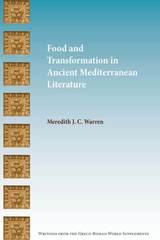 Food and Transformation in Ancient Mediterranean Literature
Meredith J. C. Warren
SBL Press, 2019 New research that transforms how to understand food and eating in literature
Meredith J. C. Warren identifies and defines a new genre in ancient texts that she terms hierophagy, a specific type of transformational eating where otherworldly things are consumed. Multiple ancient Mediterranean, Jewish, and Christian texts represent the ramifications of consuming otherworldly food, ramifications that were understood across religious boundaries. Reading ancient texts through the lens of hierophagy helps scholars and students interpret difficult passages in Joseph and Aseneth, 4 Ezra, Revelation 10, and the Persephone myths, among others.
Features:
- Exploration of how ancient literature relies on bending, challenging, inverting, and parodying cultural norms in order to make meaning out of genres
- Analysis of hierophagy as social action that articulates how patterns of communication across texts and cultures emerge and diverge
- A new understanding of previously confounding scenes of literary eating
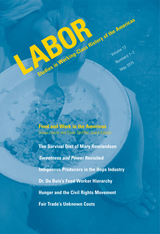 Food and Work in the Americas
Susan Levine and Steve Striffler, special issue editors
Duke University Press This special issue challenges historians to think about food and labor by considering how not only producing but acquiring, preparing, eating, and enjoying food are central to working-class life and capitalist transformation. Its essays bring labor history into closer conversation with the interdisciplinary perspectives of food studies to explore how broadly and deeply food experiences and working lives shape one another. Contributors trace this relationship through a series of case studies from across the Americas, including discussions of Native American life during the seventeenth and nineteenth centuries, African American food workers in the early twentieth century, Puerto Rican sugarcane workers under US imperialism, and the politics of fair trade.
Susan Levine is Professor of History and Director of the Institute for the Humanities at the University of Illinois at Chicago. She is the author of School Lunch Politics: The Surprising History of America’s Favorite Welfare Program. Steve Striffler is the Doris Zemurray Stone Chair in Latin American Studies and Professor of Anthropology at the University of New Orleans. He is the author of In the Shadows of State and Capital: The United Fruit Company, Popular Struggle, and Agrarian Restructuring in Ecuador, 1900–1995, also published by Duke University Press.
Contributors: William Bauer, Sarah Besky, Sandy Brown, Rachel Herrmann, Felicia Kornbluh, Susan Levine, Sarah Lyon, Vanessa May, April Merleaux, Liesl Orenic, Sara Ries, Steve Striffler
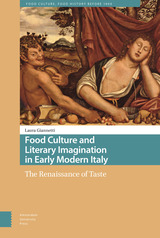 Food Culture and Literary Imagination in Early Modern Italy: The Renaissance of Taste
Laura Giannetti
Amsterdam University Press, 2022 As the long sixteenth century came to a close, new positive ideas of gusto/ taste opened a rich counter vision of food and taste where material practice, sensory perceptions and imagination contended with traditional social values, morality, and dietetic/medical discourse. Exploring the complex and evocative ways the early modern Italian culture of food was imagined in the literature of the time, Food Culture and the Literary Imagination in Early Modern Italy reveals that while a moral and disciplinary vision tried to control the discourse on food and eating in medical and dietetic treatises of the sixteenth century and prescriptive literature, a wide range of literary works contributed to a revolution in eating and taste. In the process long held visions of food and eating, as related to social order and hierarchy, medicine, sexuality and gender, religion and morality, pleasure and the senses, were questioned, tested and overturned, and eating and its pleasures would never be the same.
|
|

